Gallery
-
Halnaker walk on 19th July 2023
The 5.7 mile gentle stroll started in the car park of The Anglesey Arms in Halnaker starting on the main road, admiring some of the houses before heading up Mill Lane track where some of us were more interested in the rolling stone than the information board telling us all about Halnaker Hill and The Windmill Trail. A short climb brought us to the path up to the refurbished Halnaker Windmill. Halnaker Mill was first mentioned in 1540 as belonging to the manor of "Halfnaked". It was built for the Duke of Richmond as the feudal mill of the Goodwood Estate. The surviving mill is thought to date from the 1740s and is known to have been standing c.1780. Halnaker Mill was working until struck by lightning in 1905, damaging the sails and windshaft. The derelict mill was restored in 1934 as a memorial to the wife of Sir William Bird. Returning to Mill Lane track we took footpaths beside vineyards, then back onto the main road before turning east into woodland where we stopped for our coffee break. The location was unanimously voted for. Once fed and watered the troup marched through a wheatfield towards Eartham but turned south west before getting there. The route through Thicket Beeches needed some secateur wielding to clear the path while some demonstrated dressage techniques for elegantly stepping over the brambles. Arriving on Thicket Lane we turned south and then into Dyer’s Copse to come onto Tinwood Lane. A slight shimmy off the Lane took us into Tinwood’s vineyard coming close to the Church and ruins of Boxgrove Priory and back to The Anglesey Arms for a great lunch.
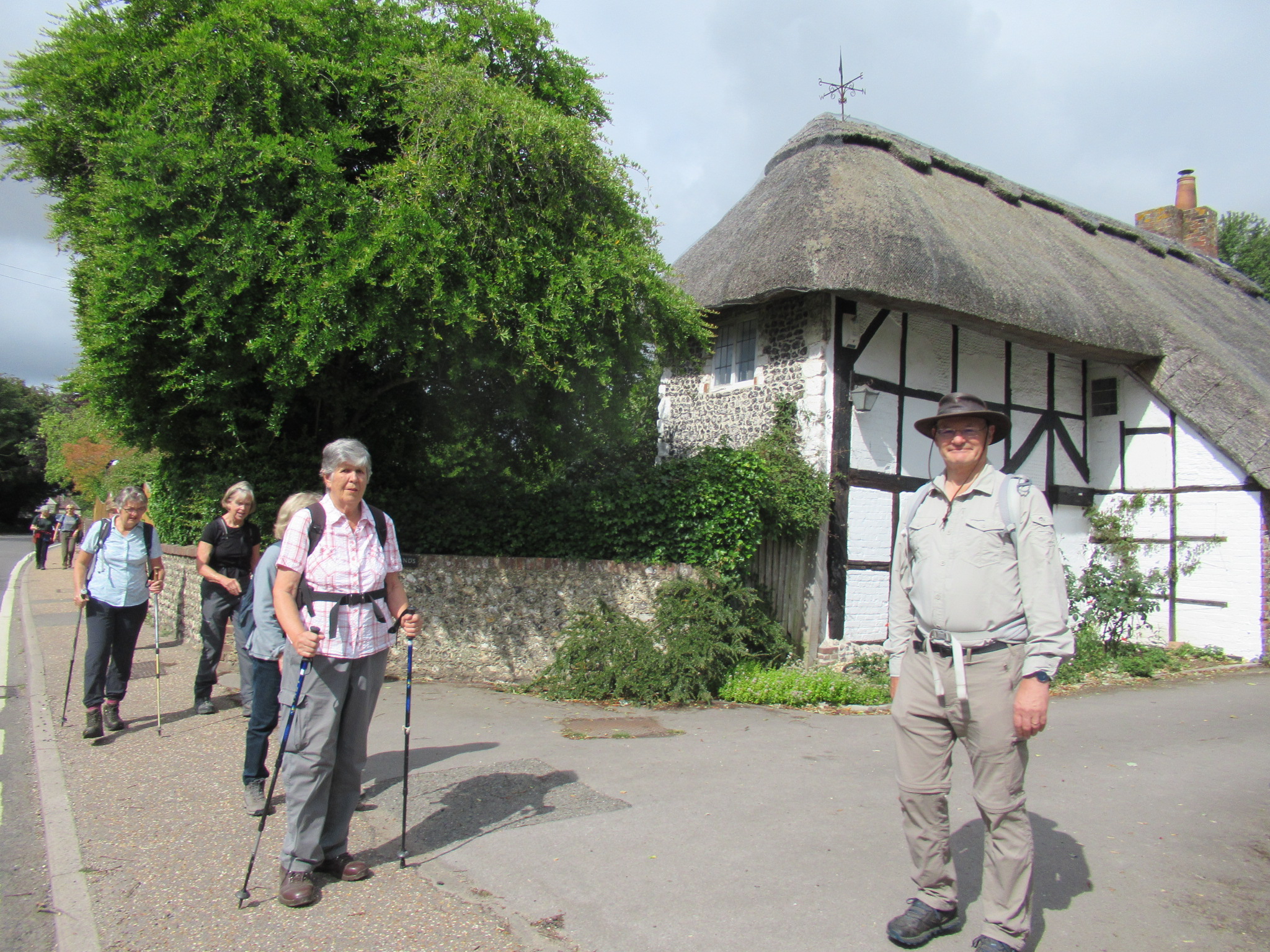
Admiring thatched houses in Halnaker
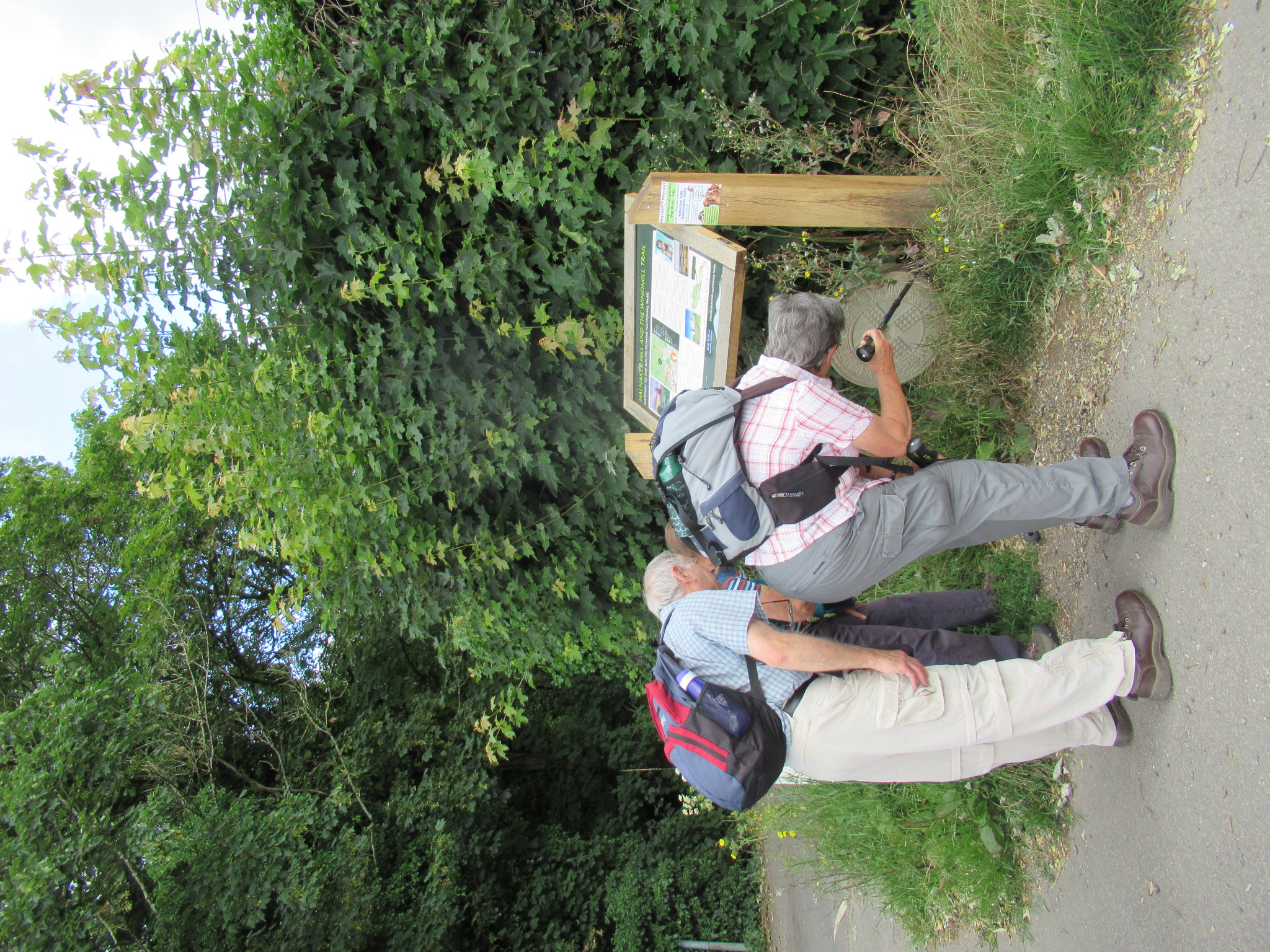
We are The Rolling Stones!
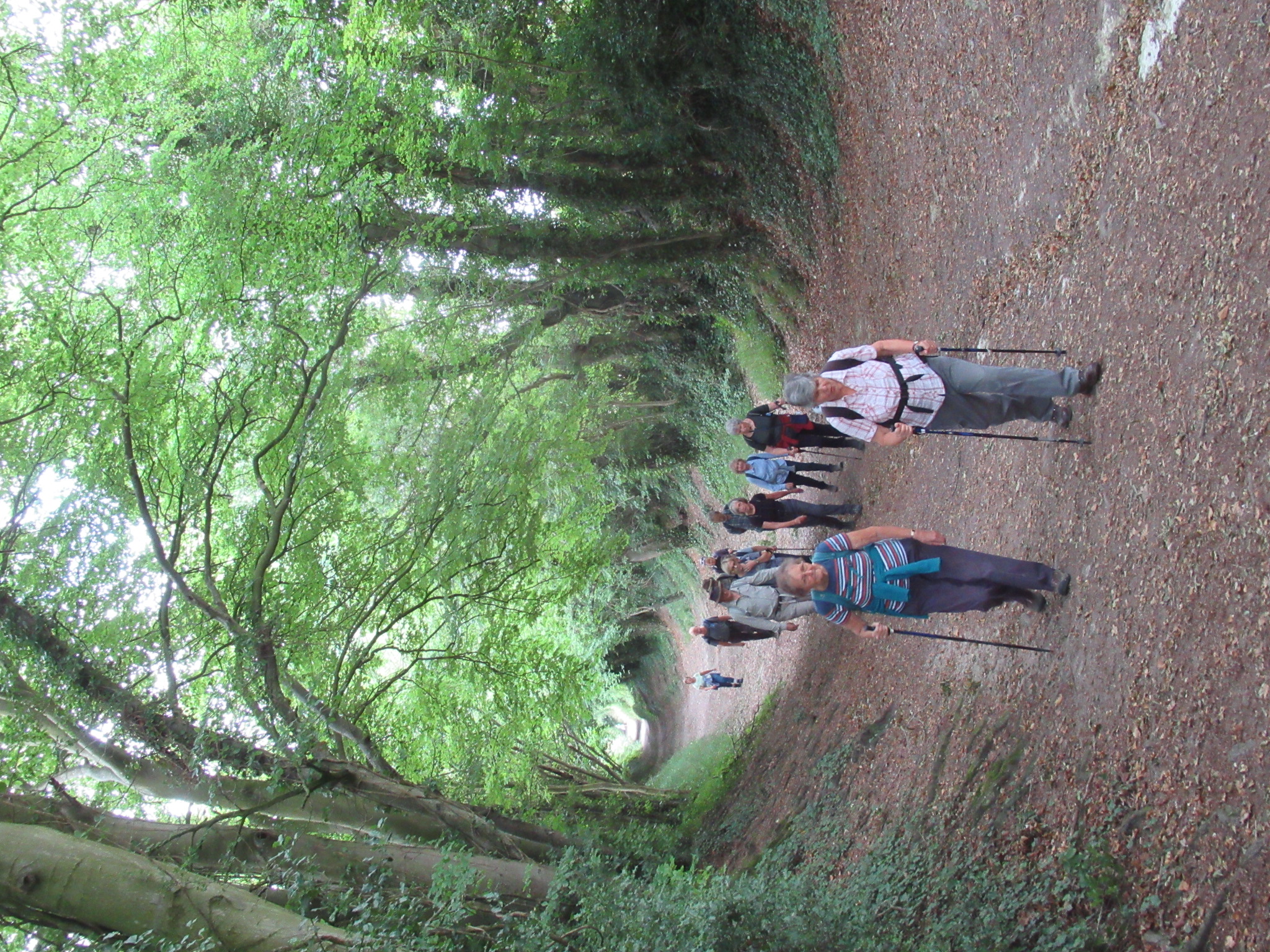
Walking up the tree tube
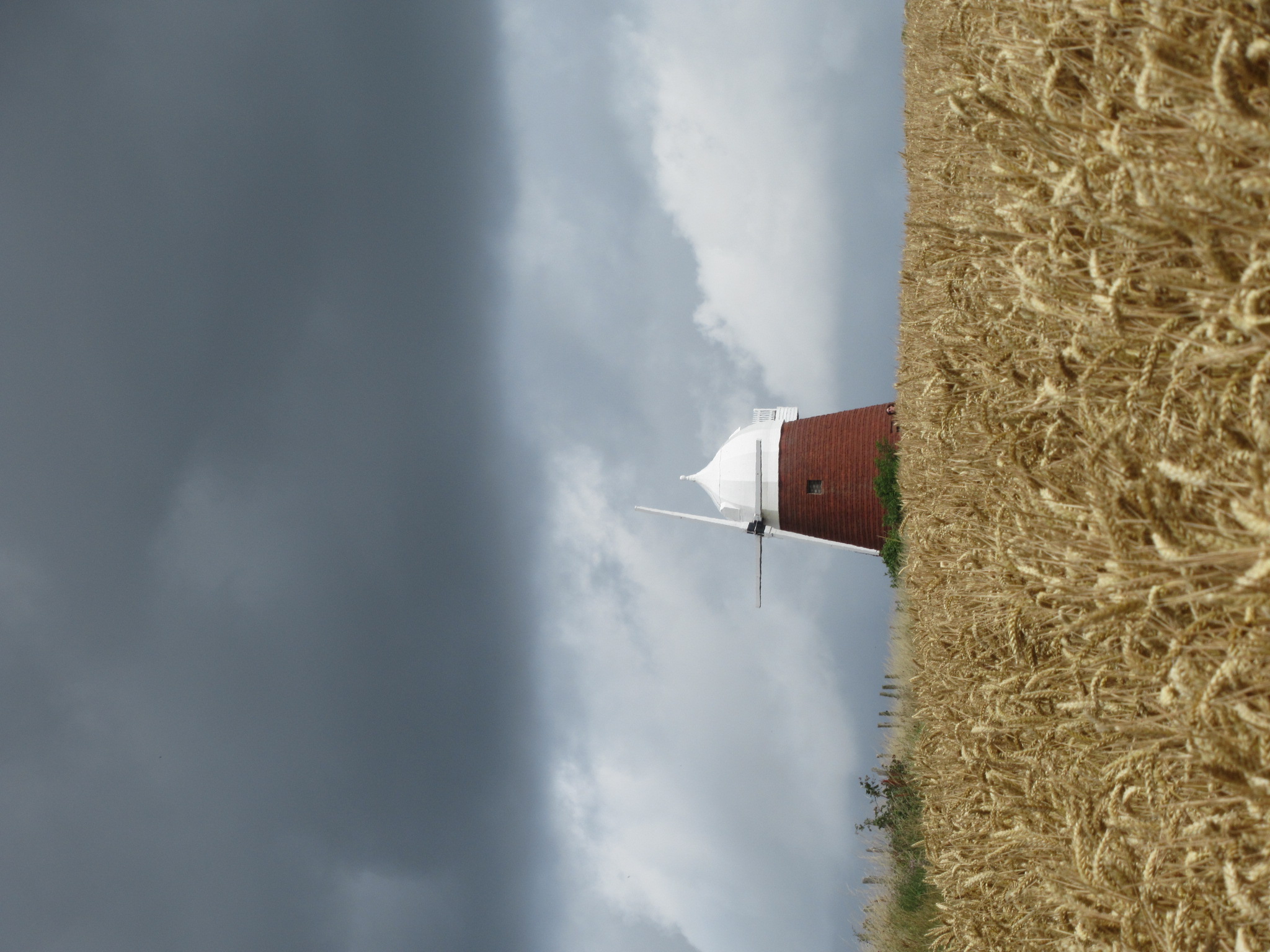
A moody Halnaker windmill
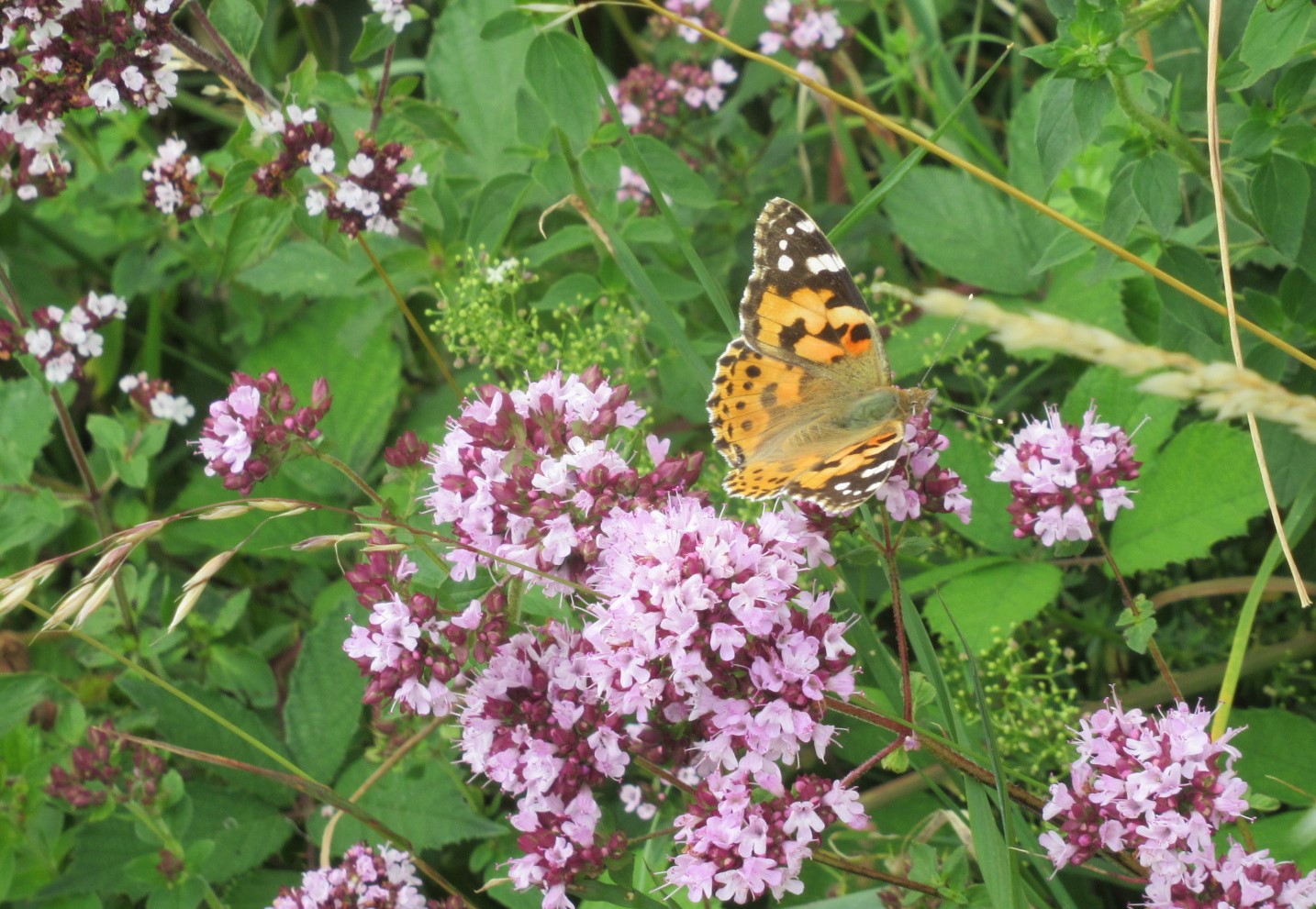
Butterfly enjoying a wild herb
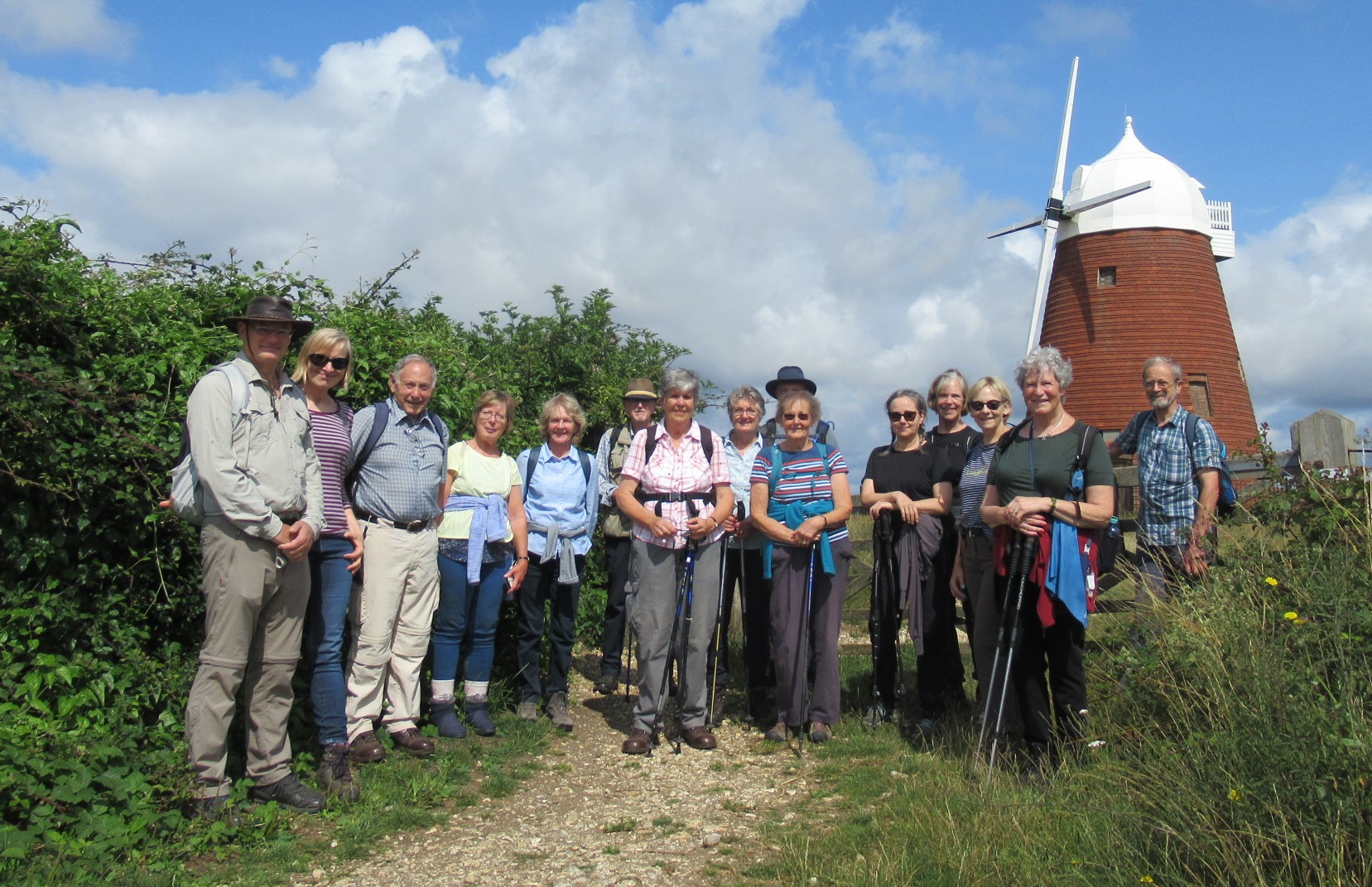
The weather cleared, must be time for the team photo
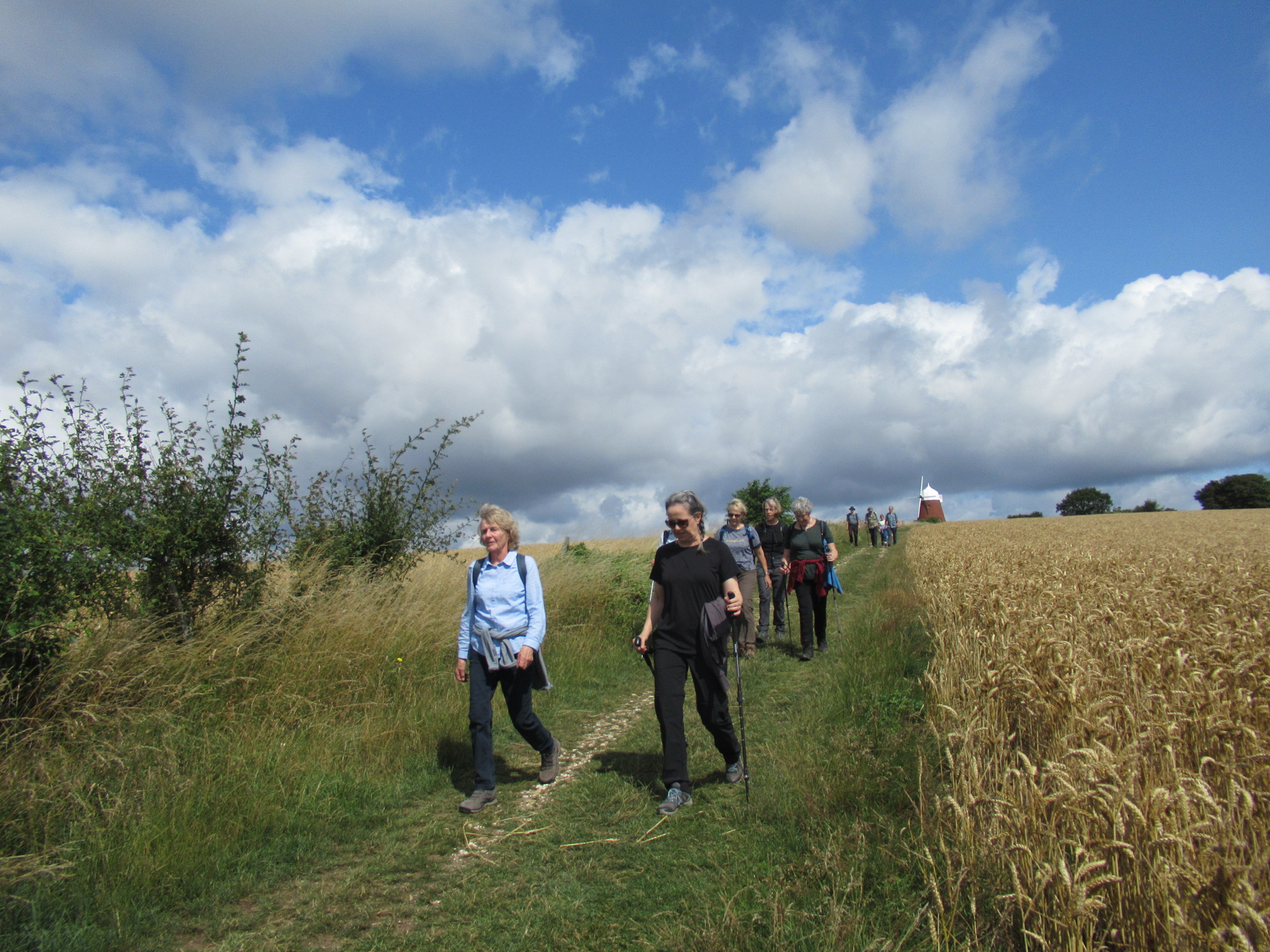
In best Duke of York fashion, having been marched up the hill...
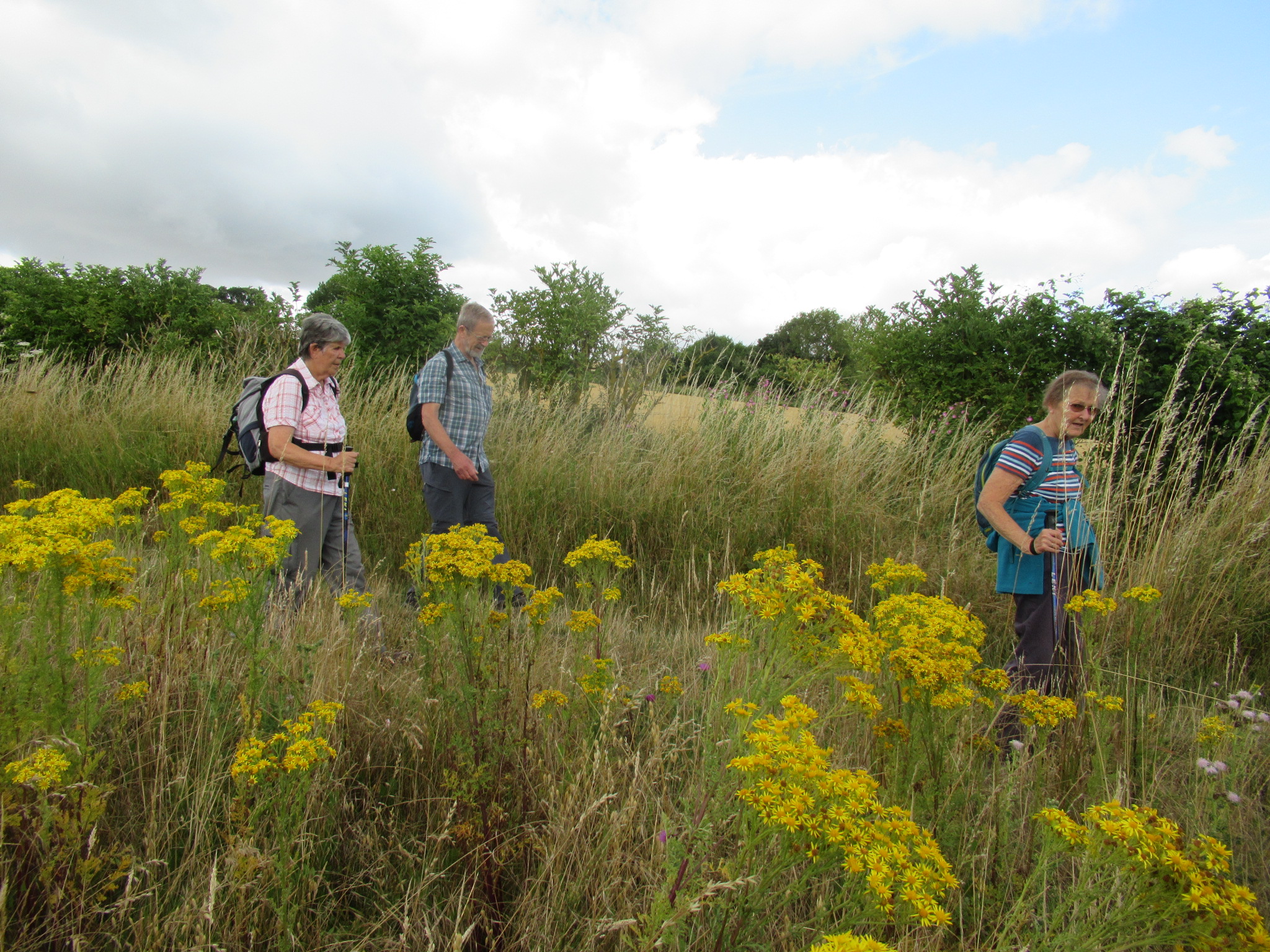
Admiring the wild flowers
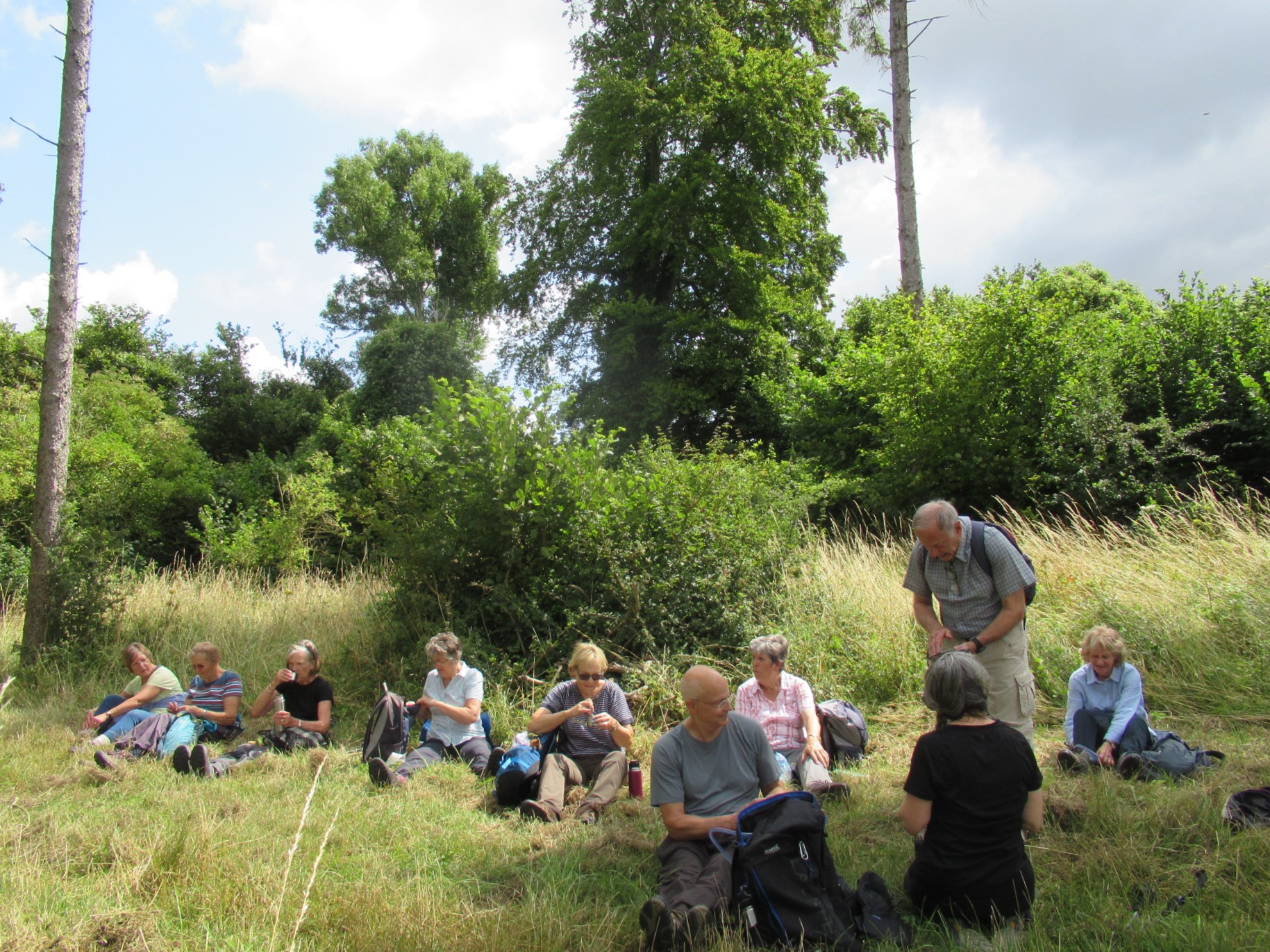
The welcome break, venue selected democratically
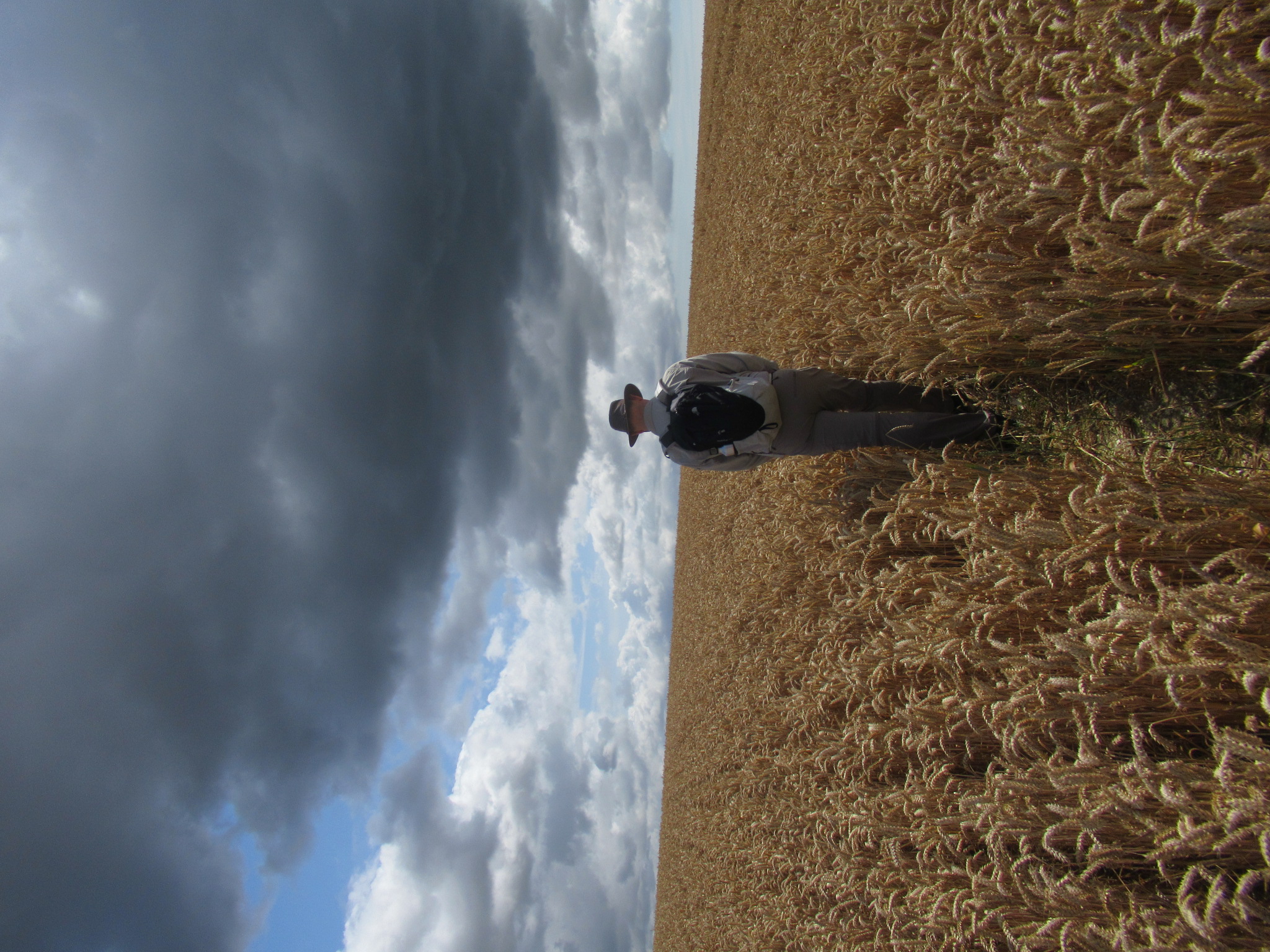
'Billy no mates' leading the walk
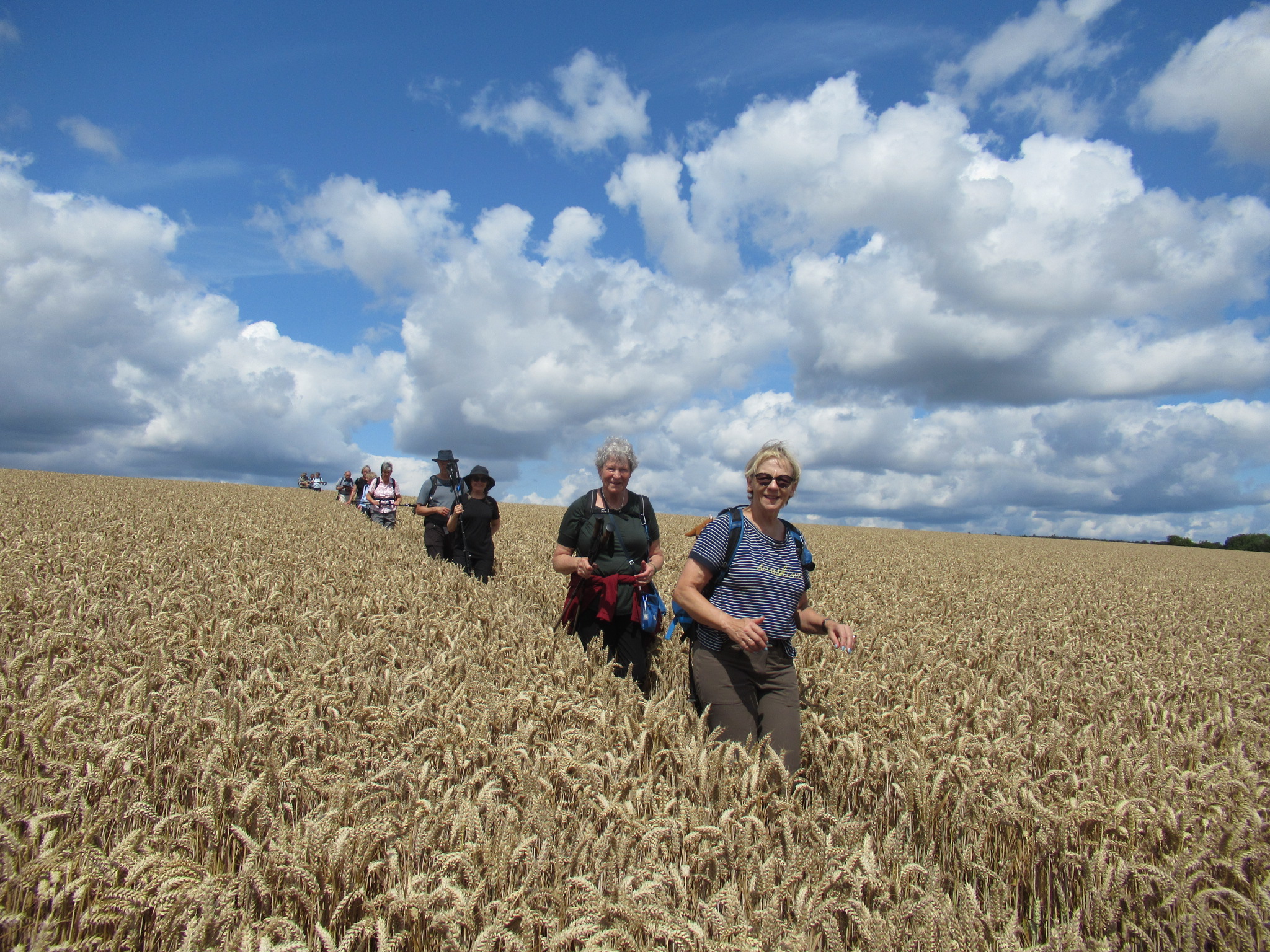
Single file in the wheat

Views like this are why we walk...

...and with good friends
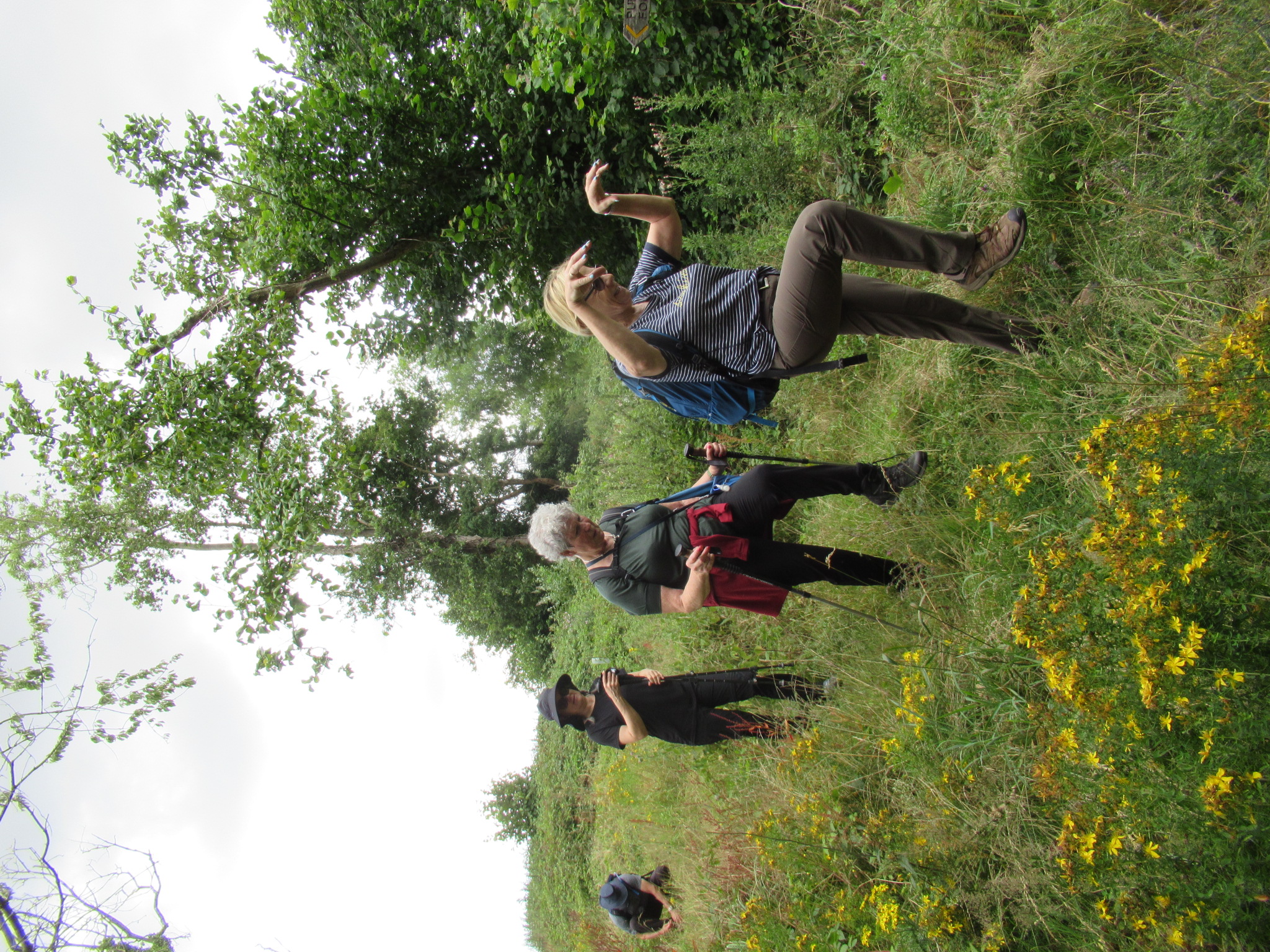
Dressage or horsing around?
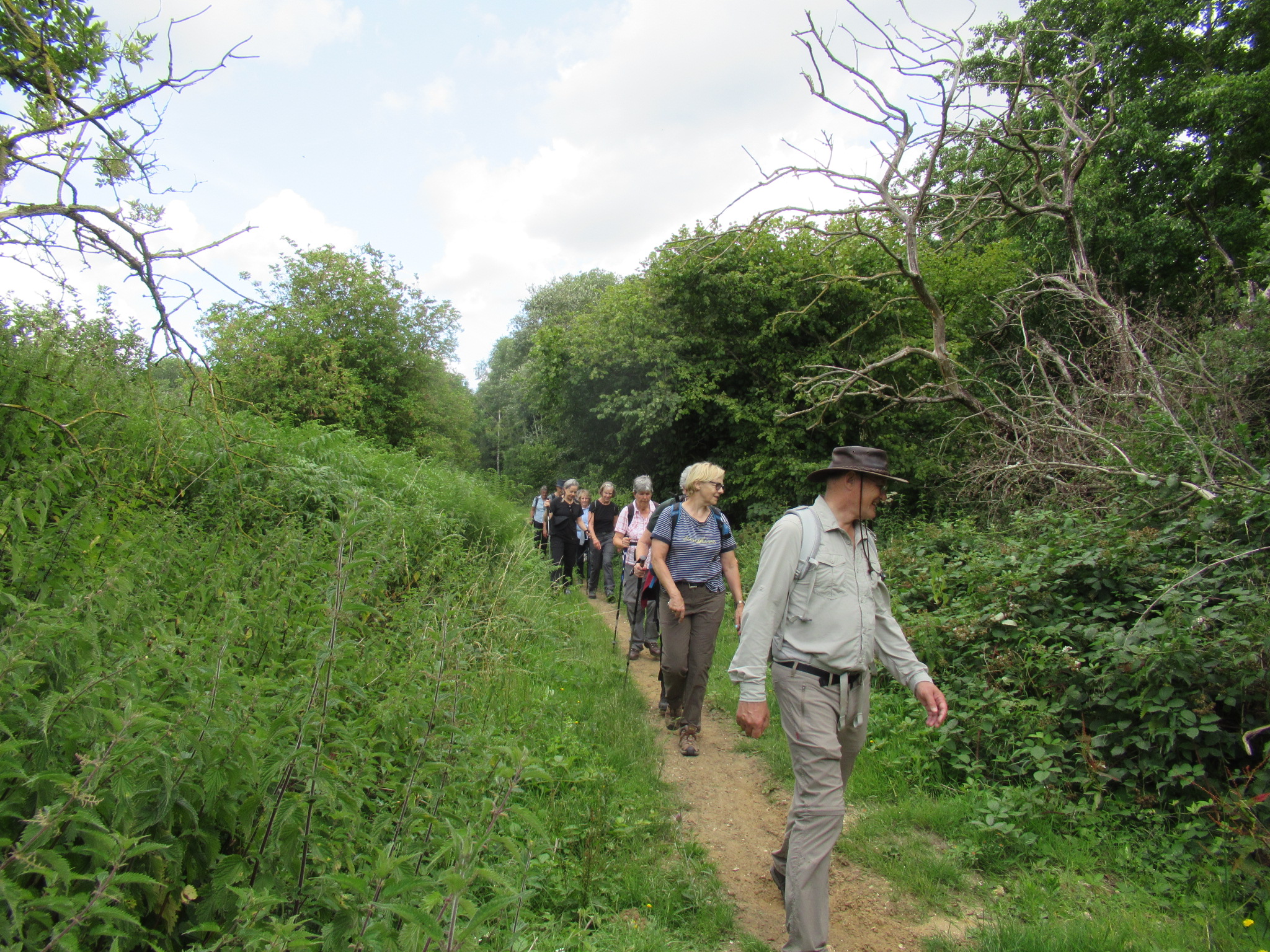
Eyes left
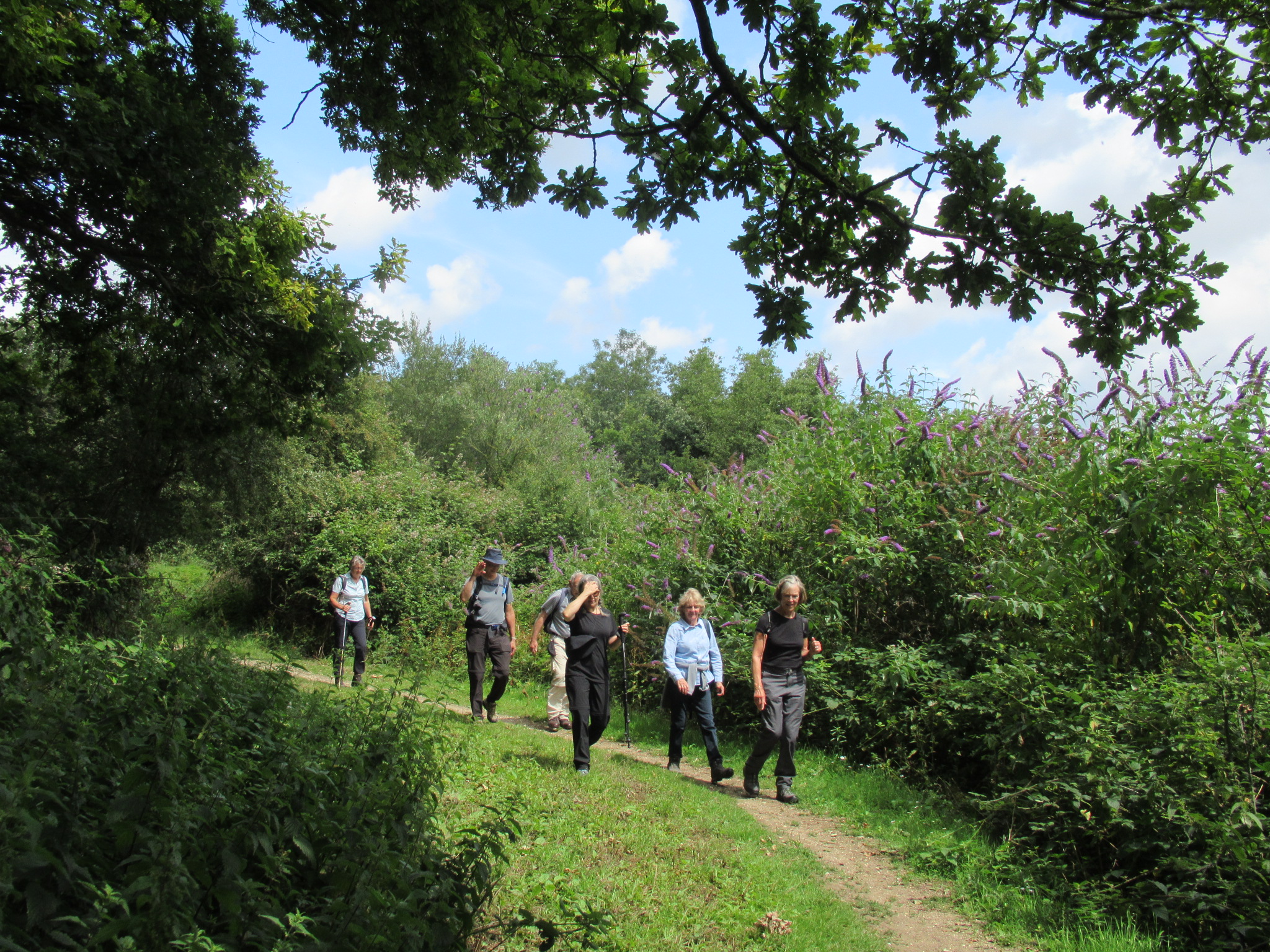
In the light, heading for the shade
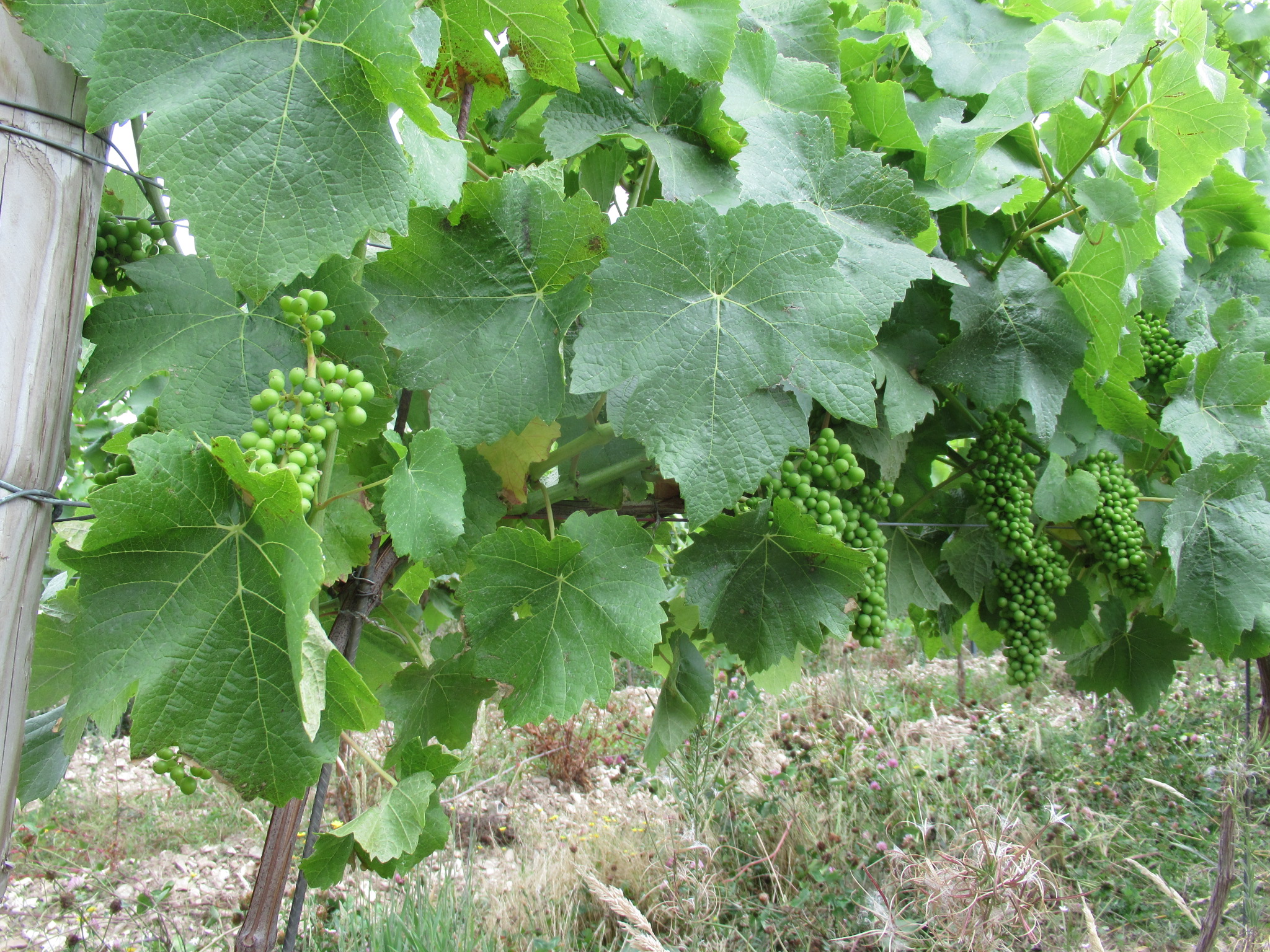
Grapes in the vineyard coming on
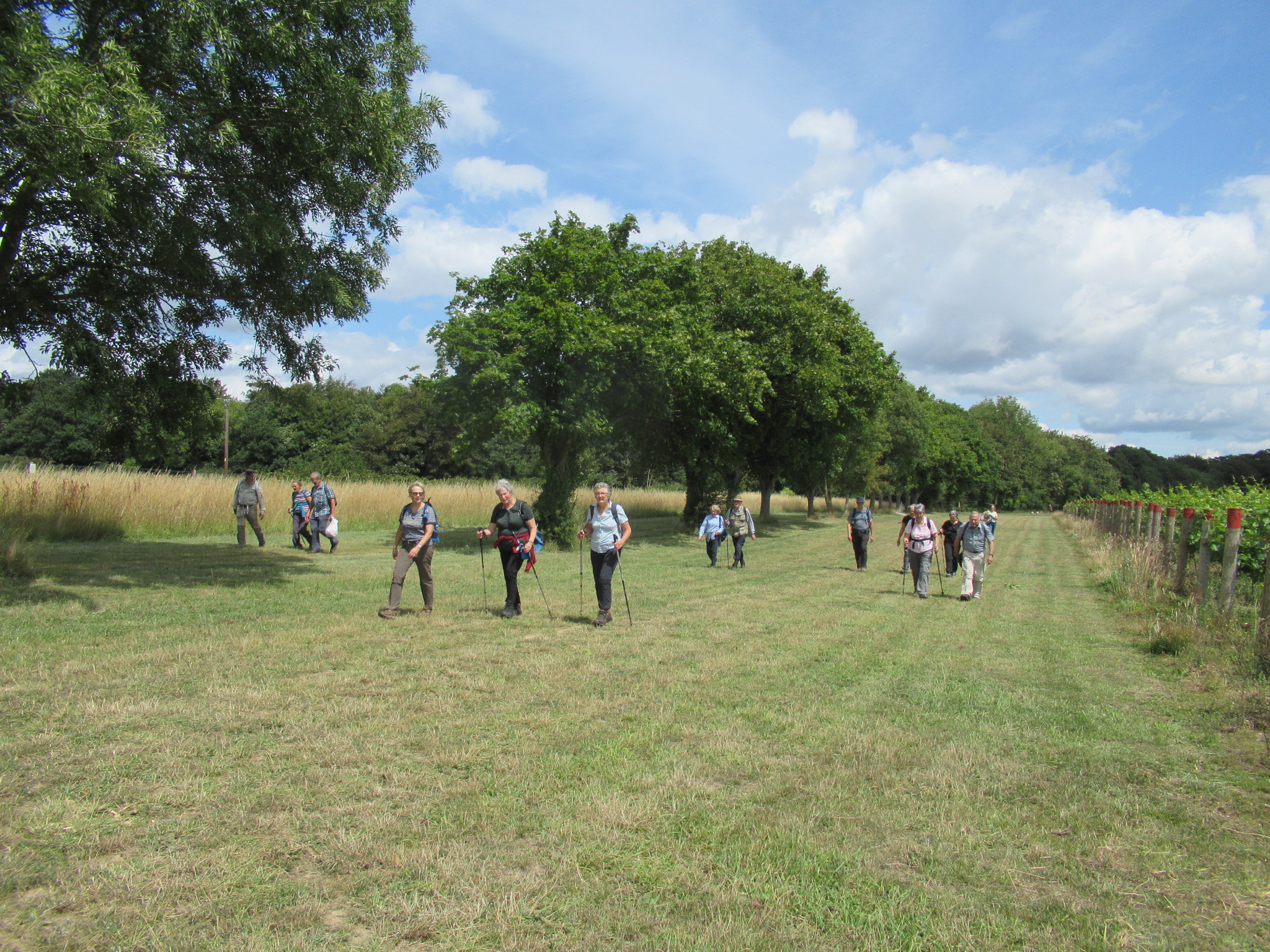
The magnificent 15
.png)
About 5.7 miles, incidentally about 2 of those miles were on the exact route of Stane Street.
Built by the Romans to take traffic from Chichester to London, it only deviates by a maximum of 6 miles from a precisely straight line and then only to use a gap in the North Downs. How could they do that without a sat-nav?!
.
Stoughton walk on 12th July 2023
We gathered at the Hare and Hounds in Stoughton for Pauline's 5.4 mile walk before haring off around the countryside on the road to East Marden then crossing fields and through Inholmes Wood. As we turned off the path we were treated to a display of a variety of butterflies, so we stopped and marvelled. Looking across the valley we could see the Farm we would walk through towards the end of our walk. Passing Wildham Barn we returned to the road we had left, but in the opposite direction to the Lamdown Hill car park. The bridleway lead us uphill at the edge of the woods towards Chilgrove where we stopped for coffee at a convenient felled tree trunk. A birthday celebration box of chocolates was passed around several times before a full rendition of Happy Birthday was sung. We turned south on another bridleway and passed Blackbush House. The property was built in the 18th Century by the Sir James Peachey, who moved in Royal circles. He was Groom of the Bedchamber in 1751 of George II in 1751 and built it as a smallpox isolation hospital. A local Chichester surgeon, Mr. Newland, was also at this time inoculating some of his patients at St. James Hospital, the former leper house. It was he who carried out the inoculations at Blackbush House. A rare photo of the house, taken in the 1950s, shows that it had no windows on the side facing towards West Dean House, two miles to the east. This was to prevent any possibility of infection escaping from a window and being blown to West Dean by the prevailing wind. As we broke out into open countryside, some ragwort was found being denuded of leaves by black and yellow striped caterpillars of the Cinnabar Moth. They had not eaten all the leaves so we missed their demonstration of cannibalistic tendencies. A path to the right put us on the Monarch’s Way which is a 625-mile (1,006 km) long-distance footpath in England that approximates the escape route taken by King Charles II in 1651 after being defeated in the Battle of Worcester to escape capture and made his way to France. This path led us back to the road to Stoughton and a communal lunch at The Hare and Hounds.
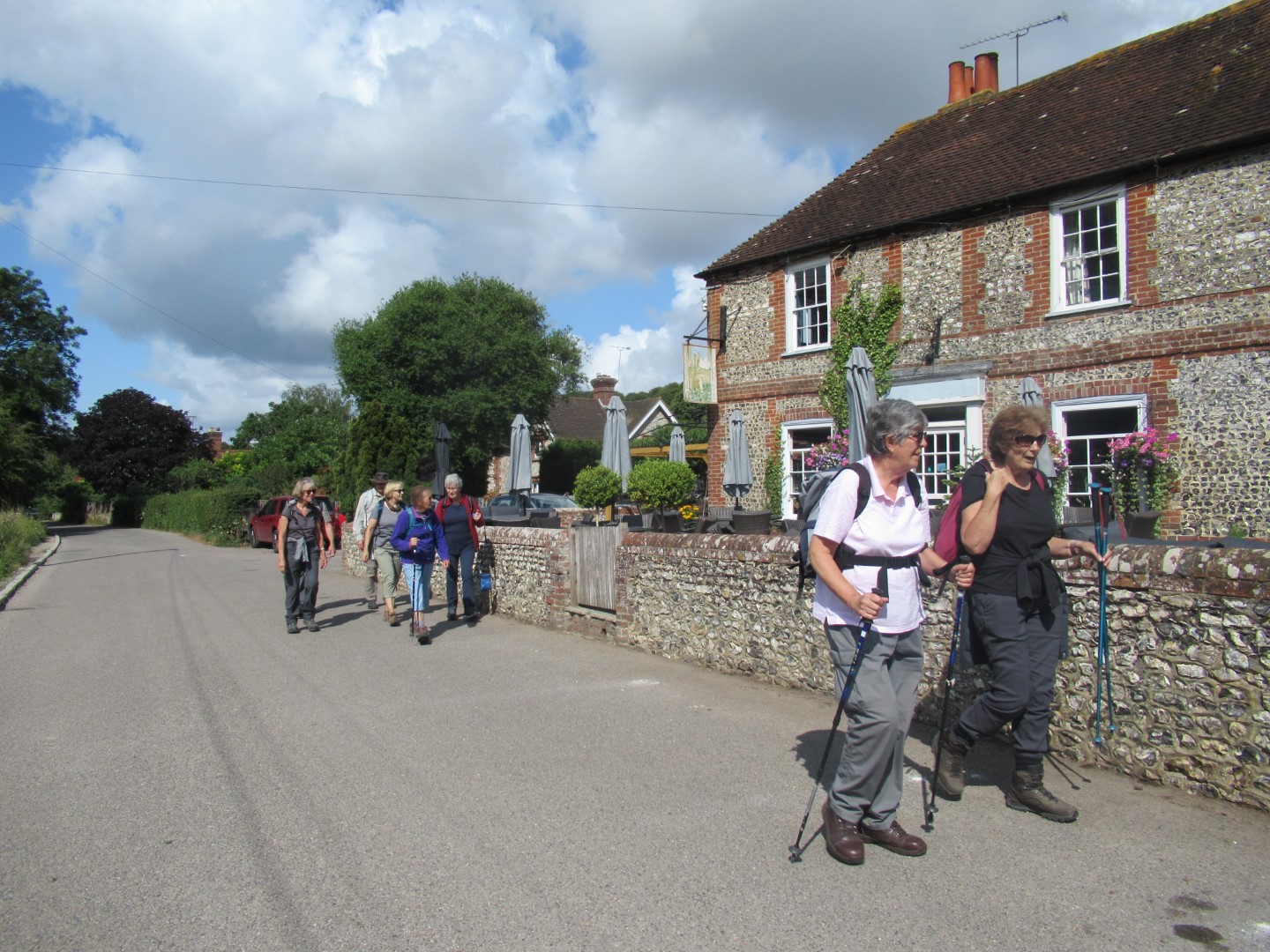
Hares and Tortoises at the start

Come you lot, you’re going to miss the butterflies
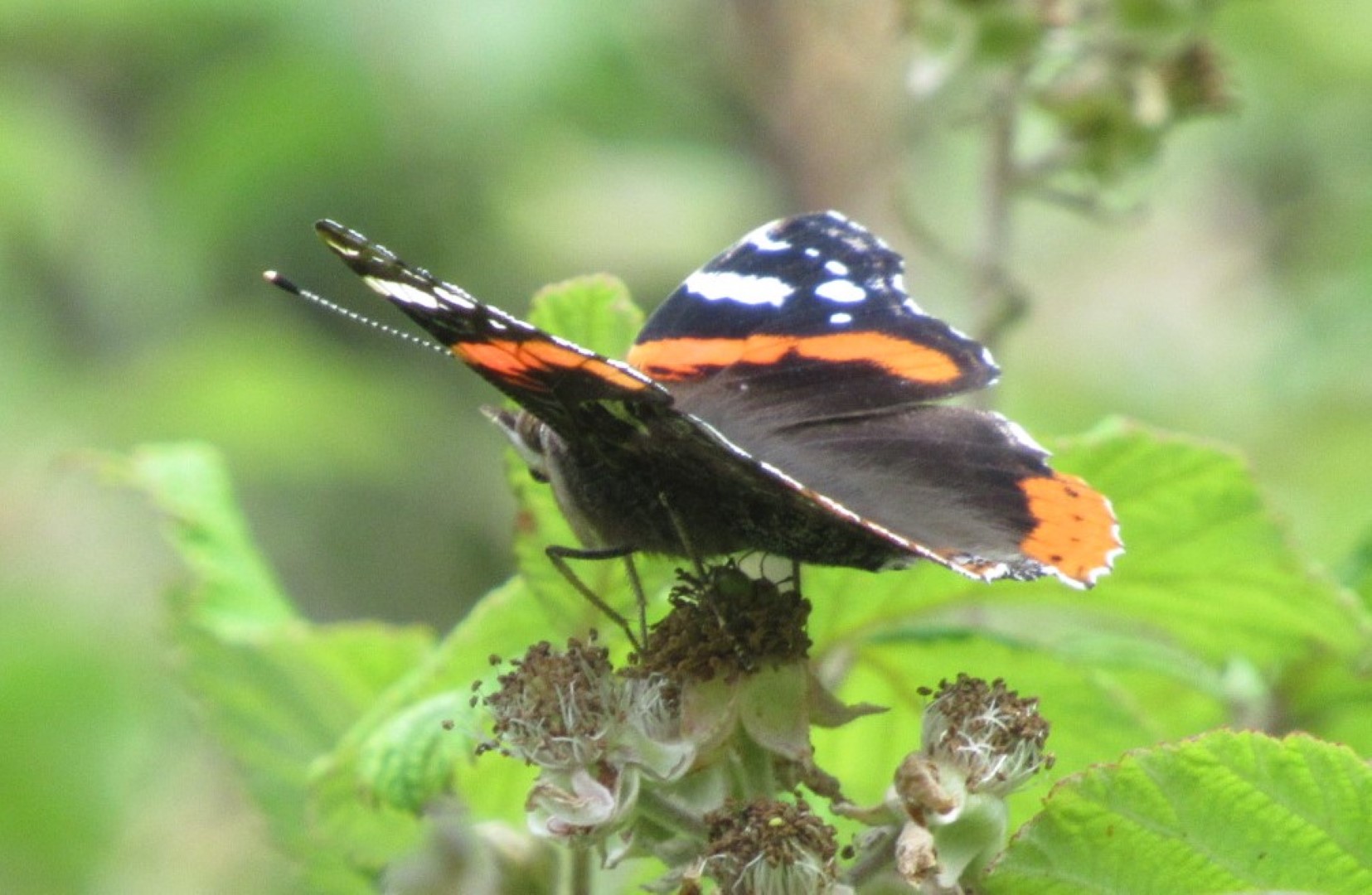 .
.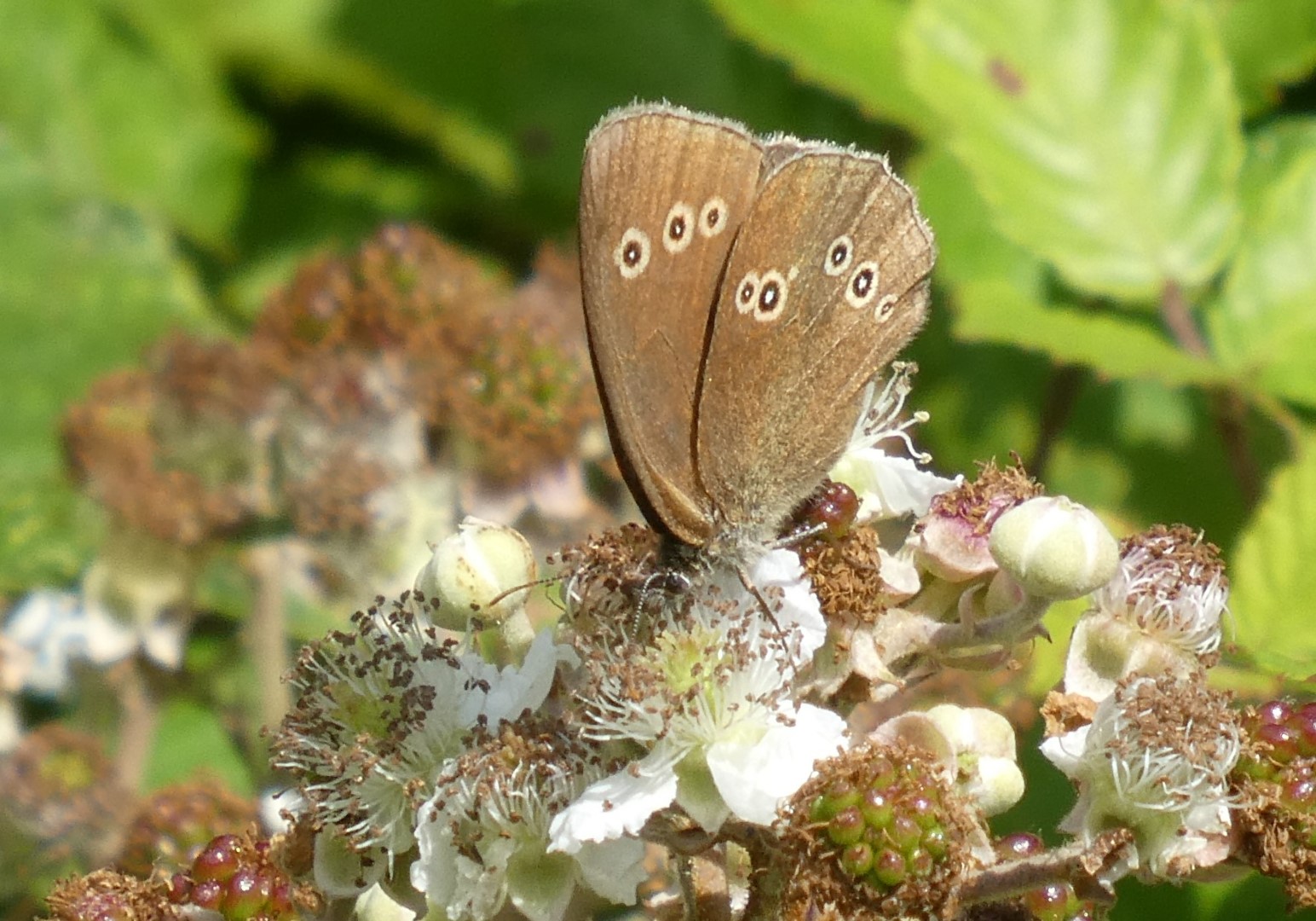 .
.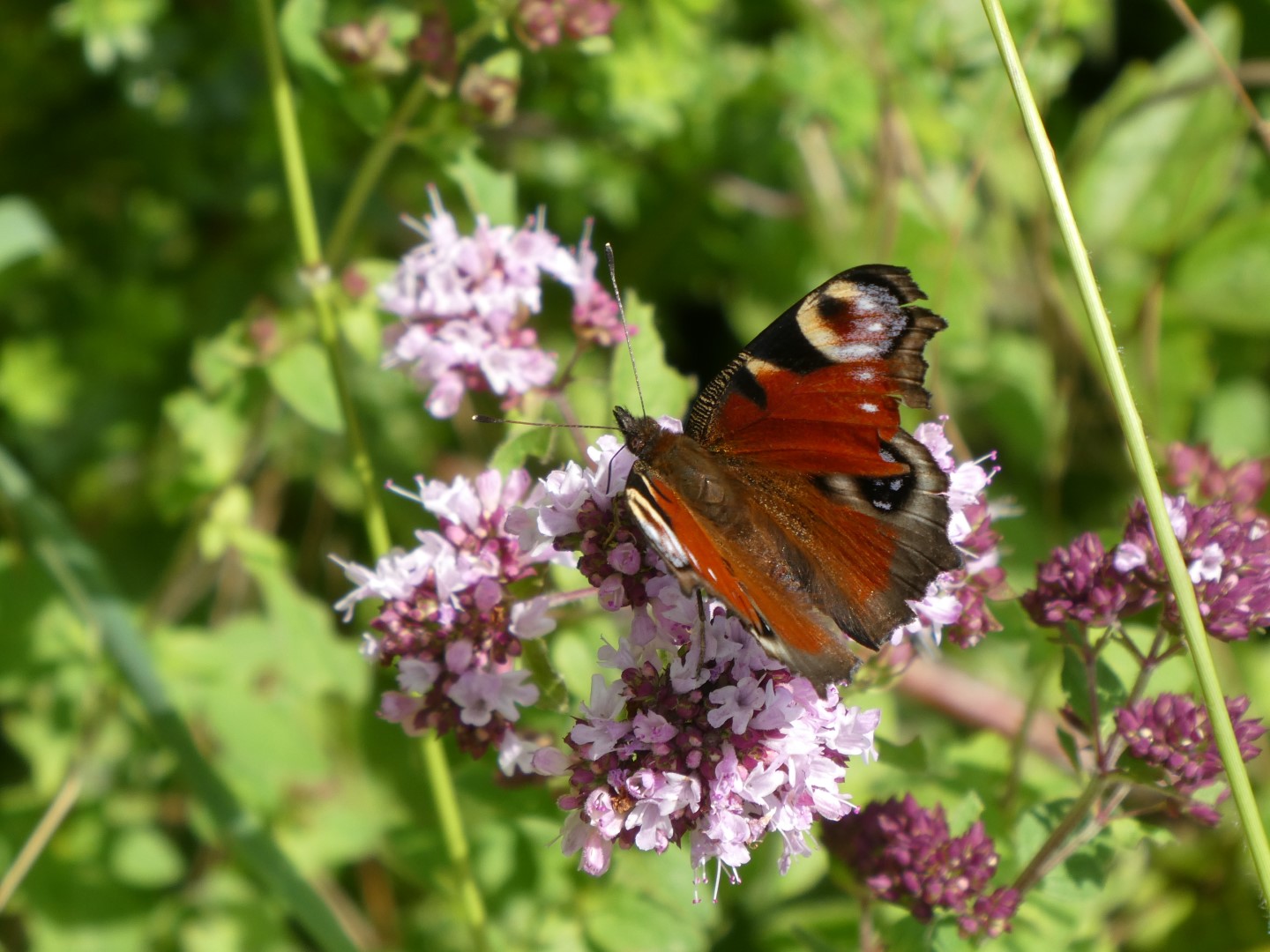
Here we are
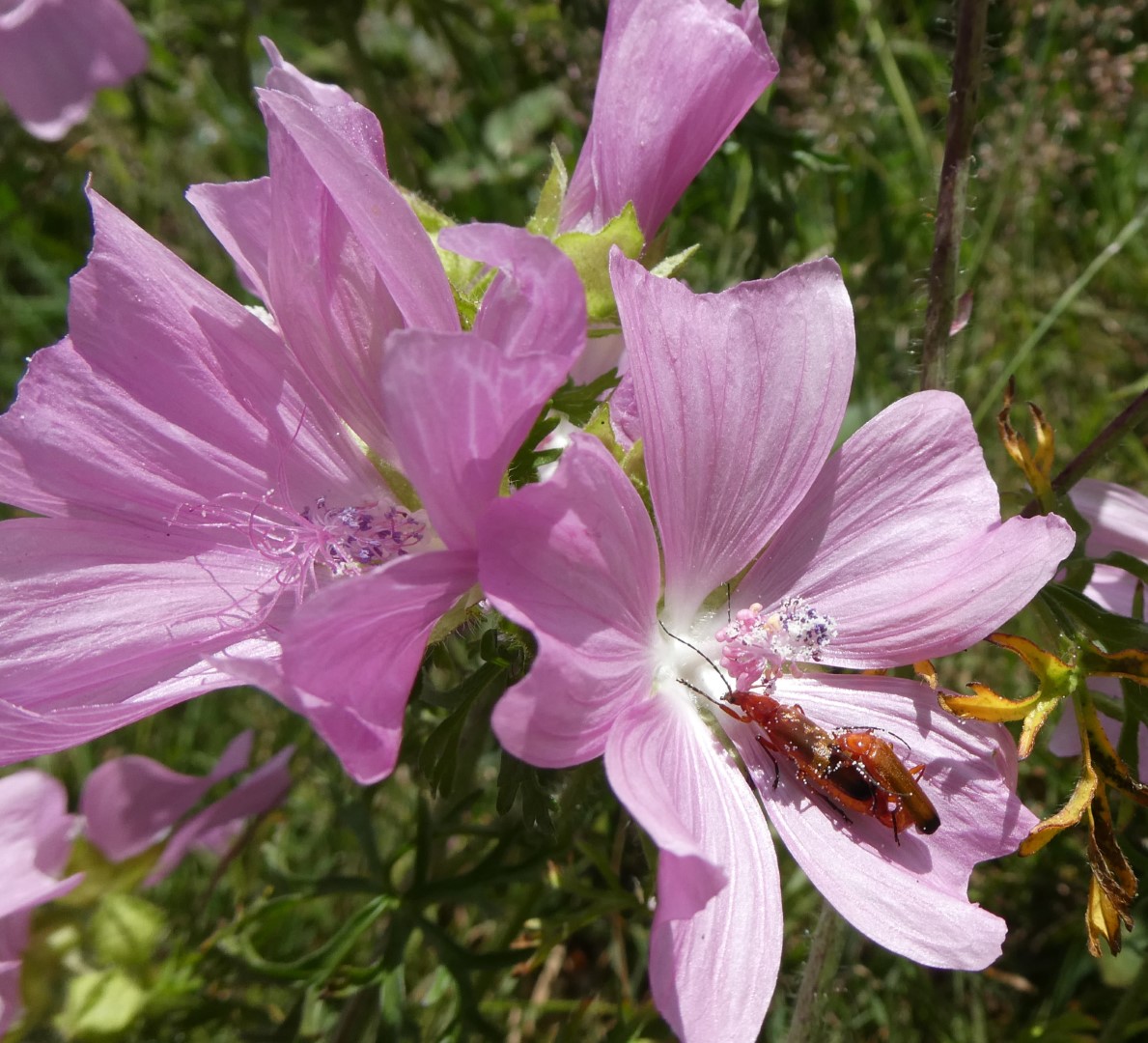
and insects pollinating....
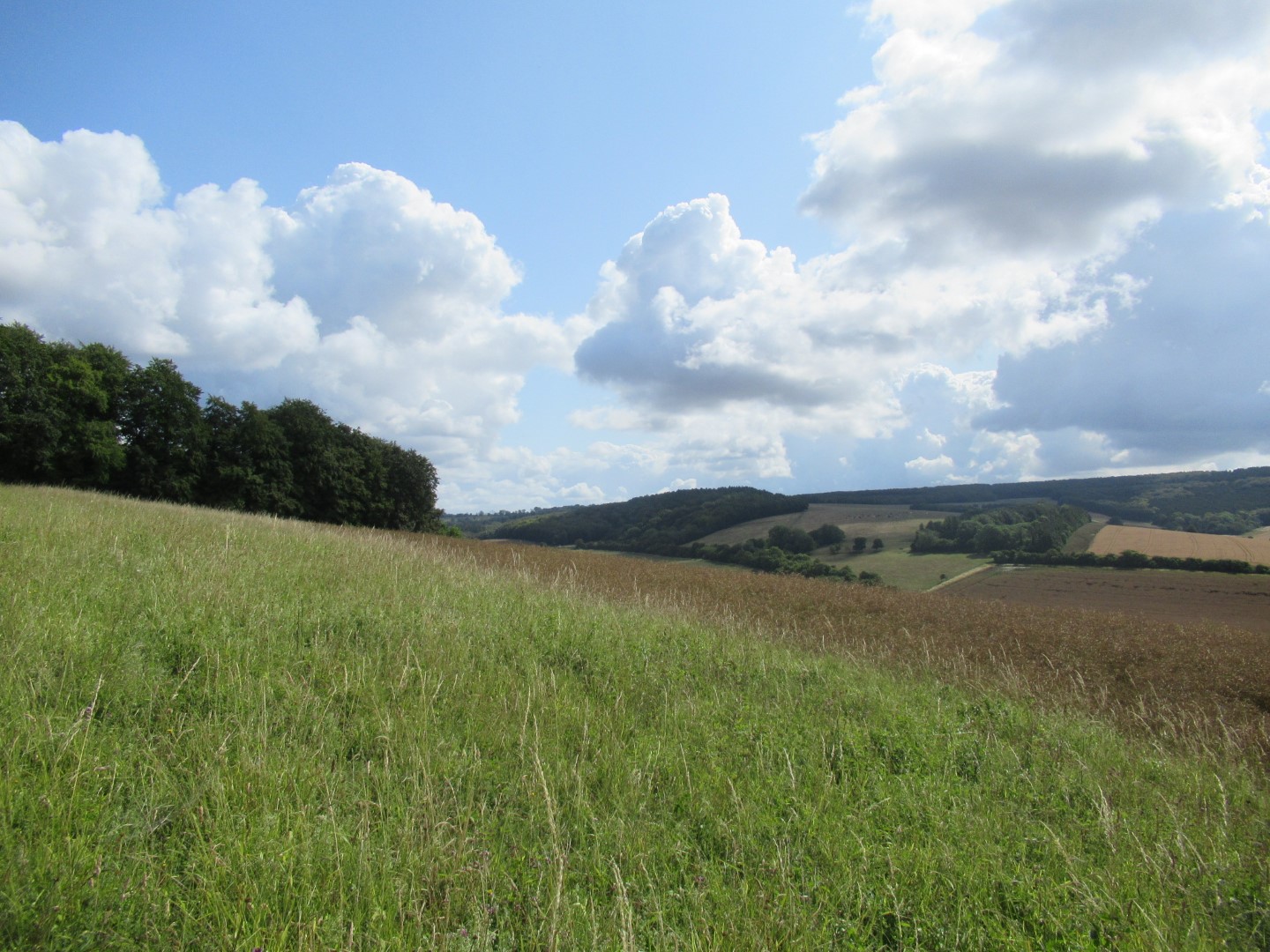
View looking over to Stoughton Down
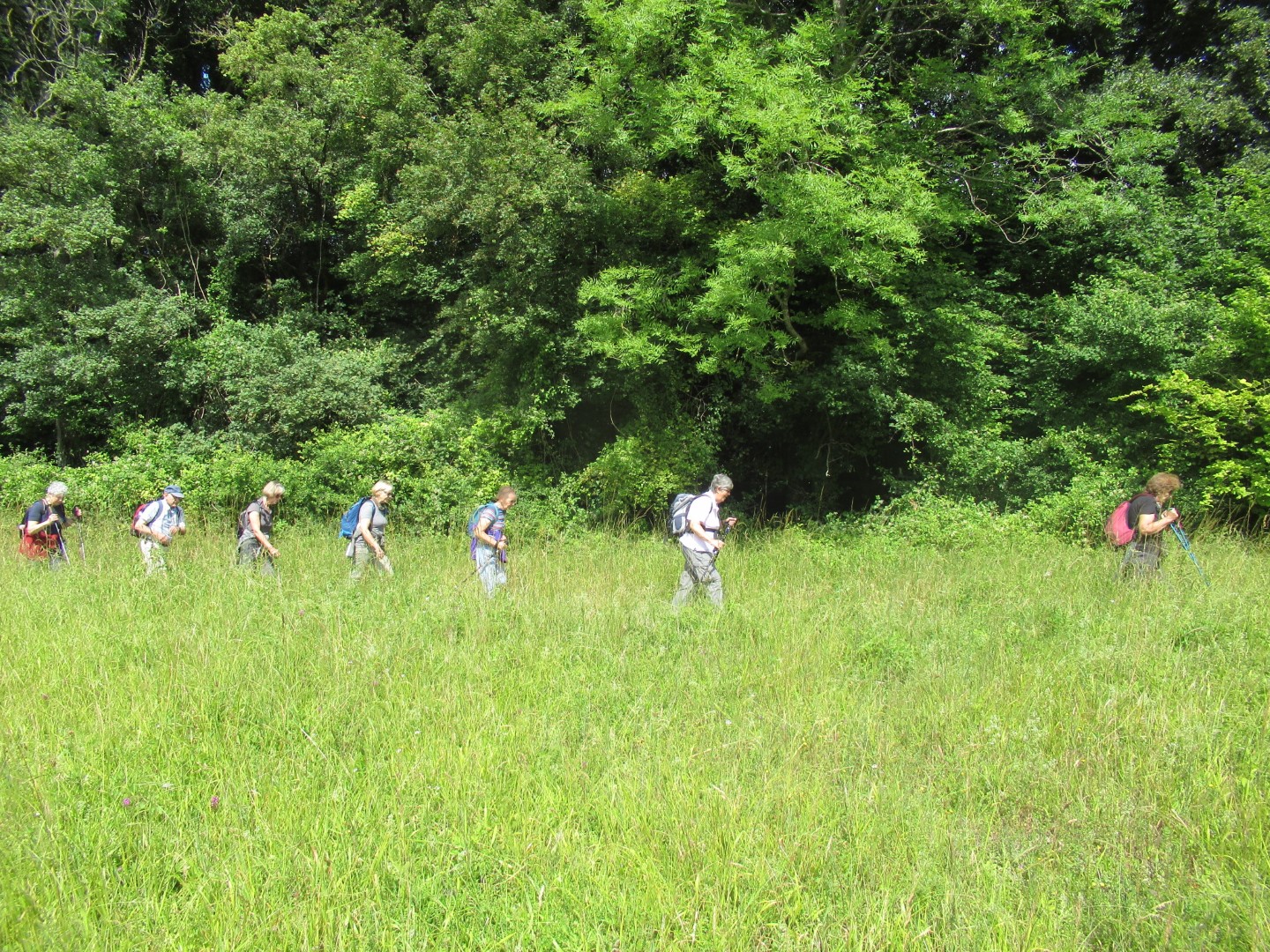
The butterfly watchers march on
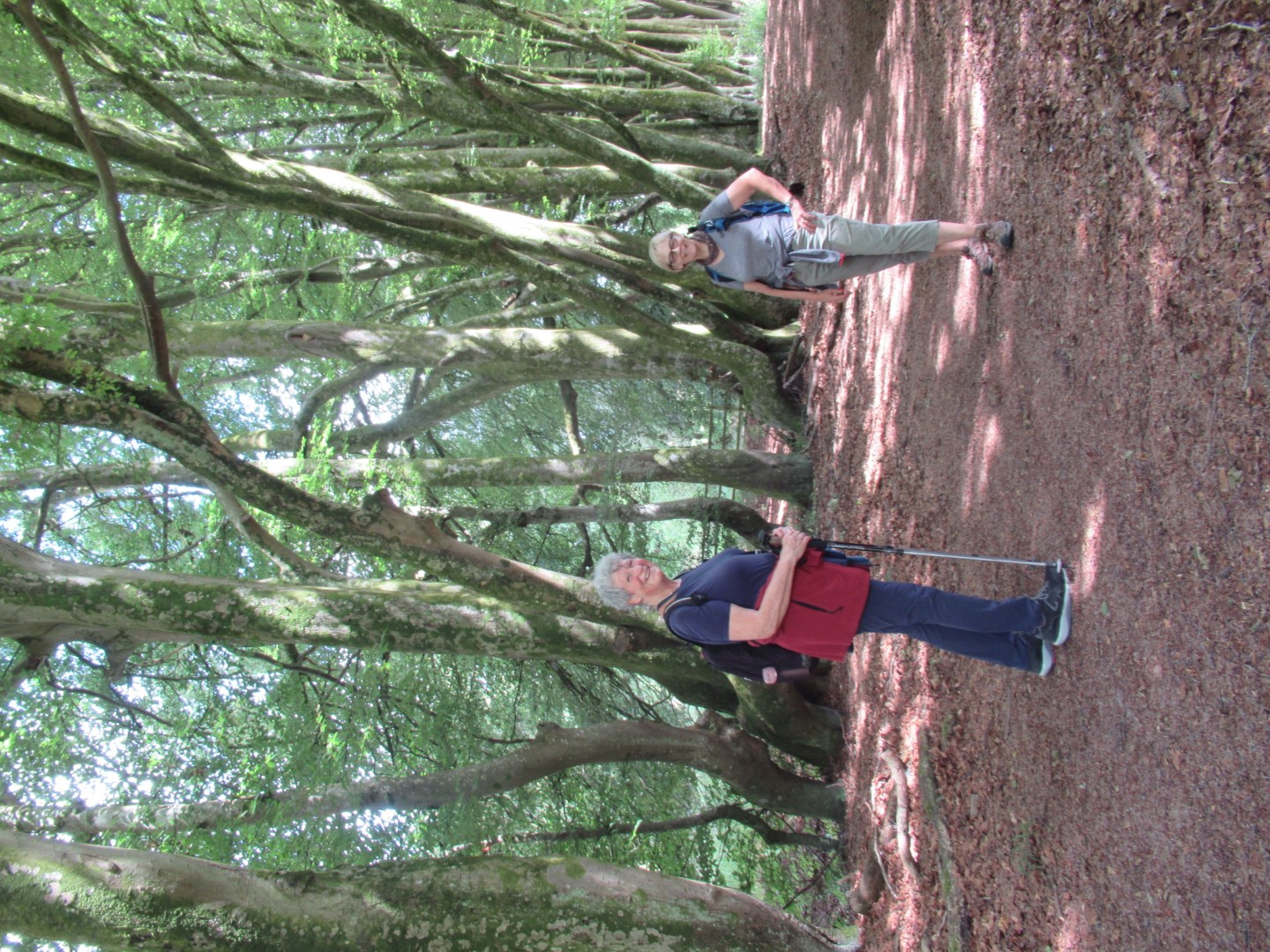
Admiring the trees by Lambdown Hill
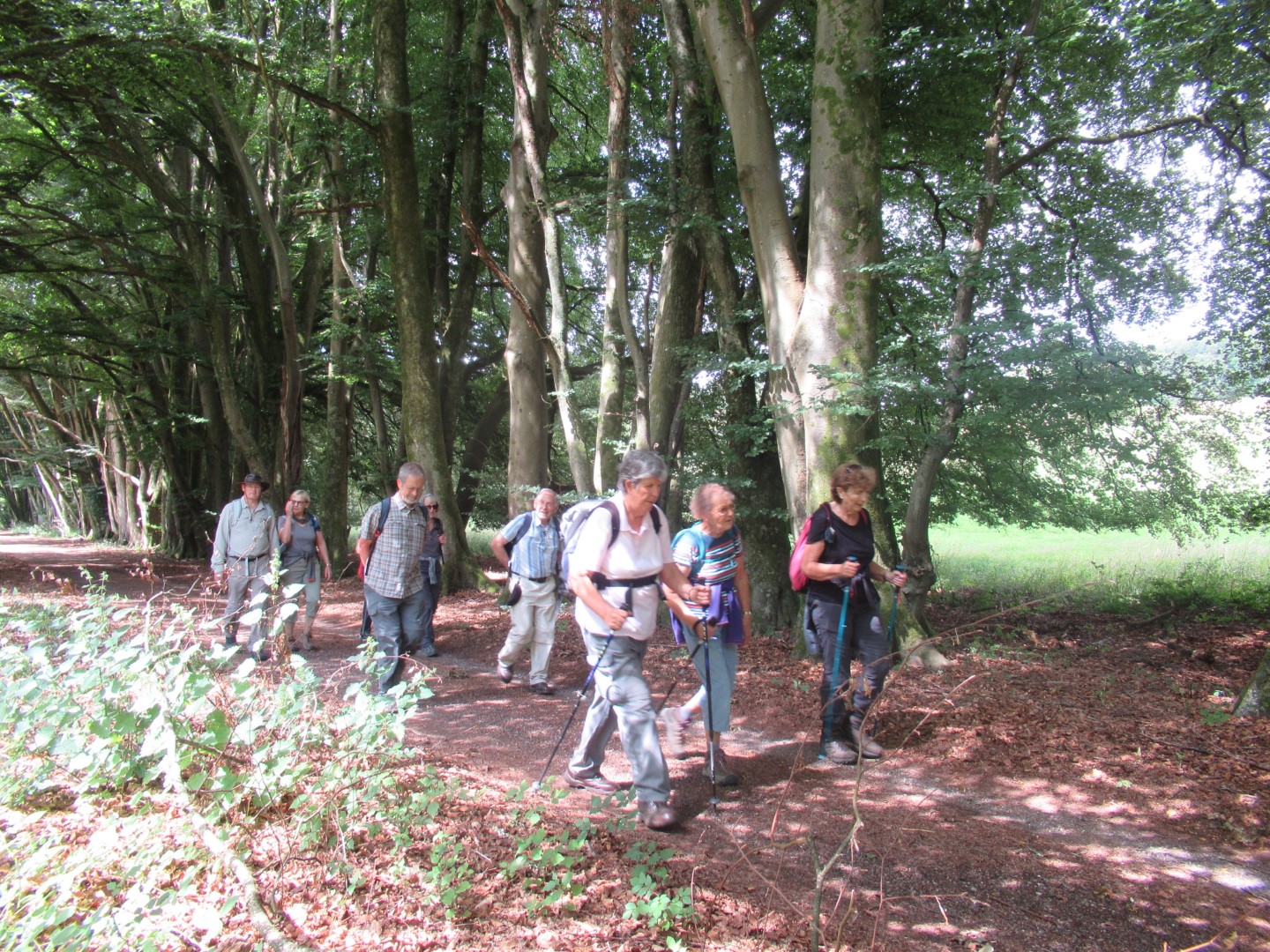
Bunching up as the coffee break approaches
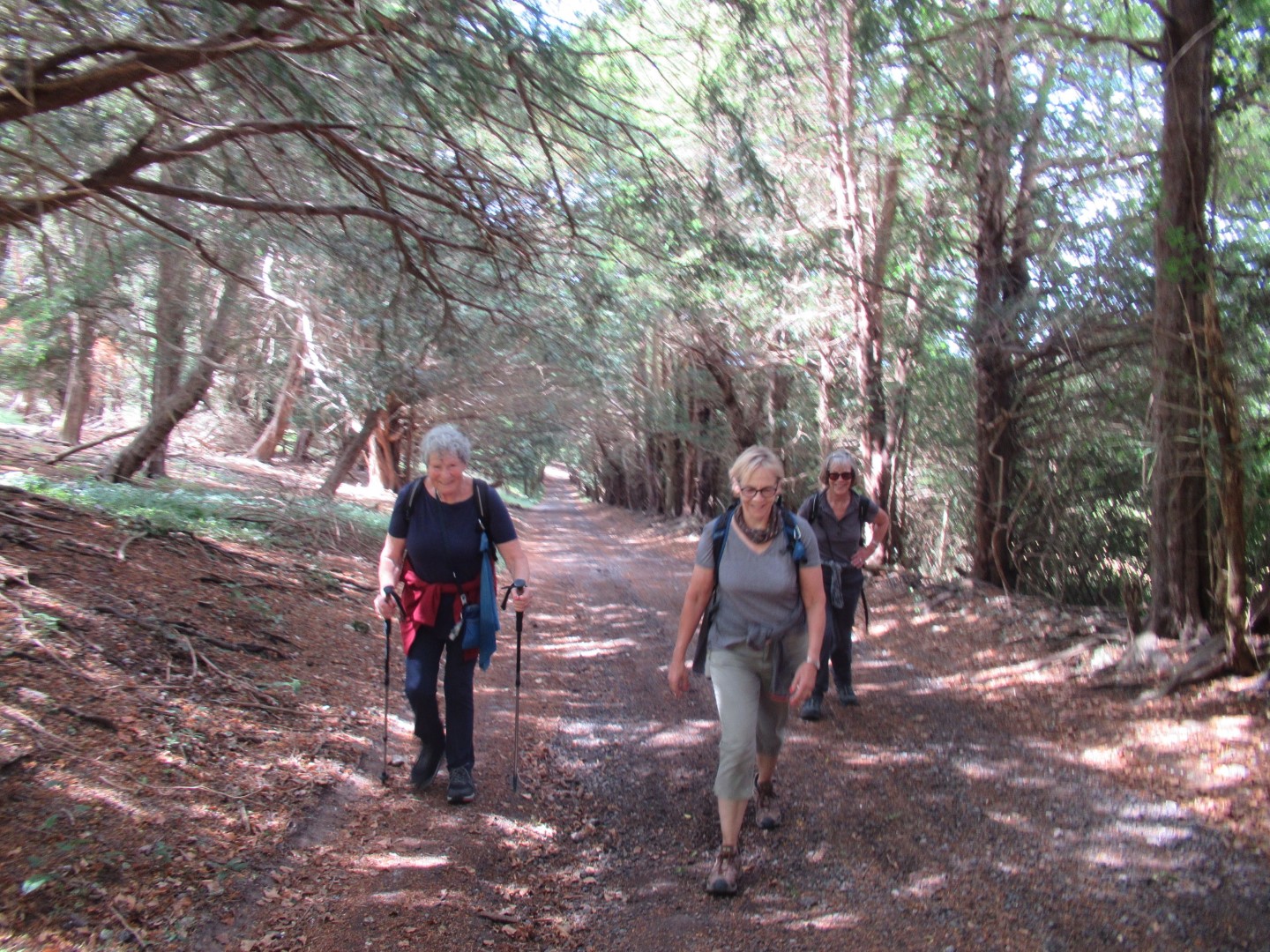
This hill is longer than we were led to believe
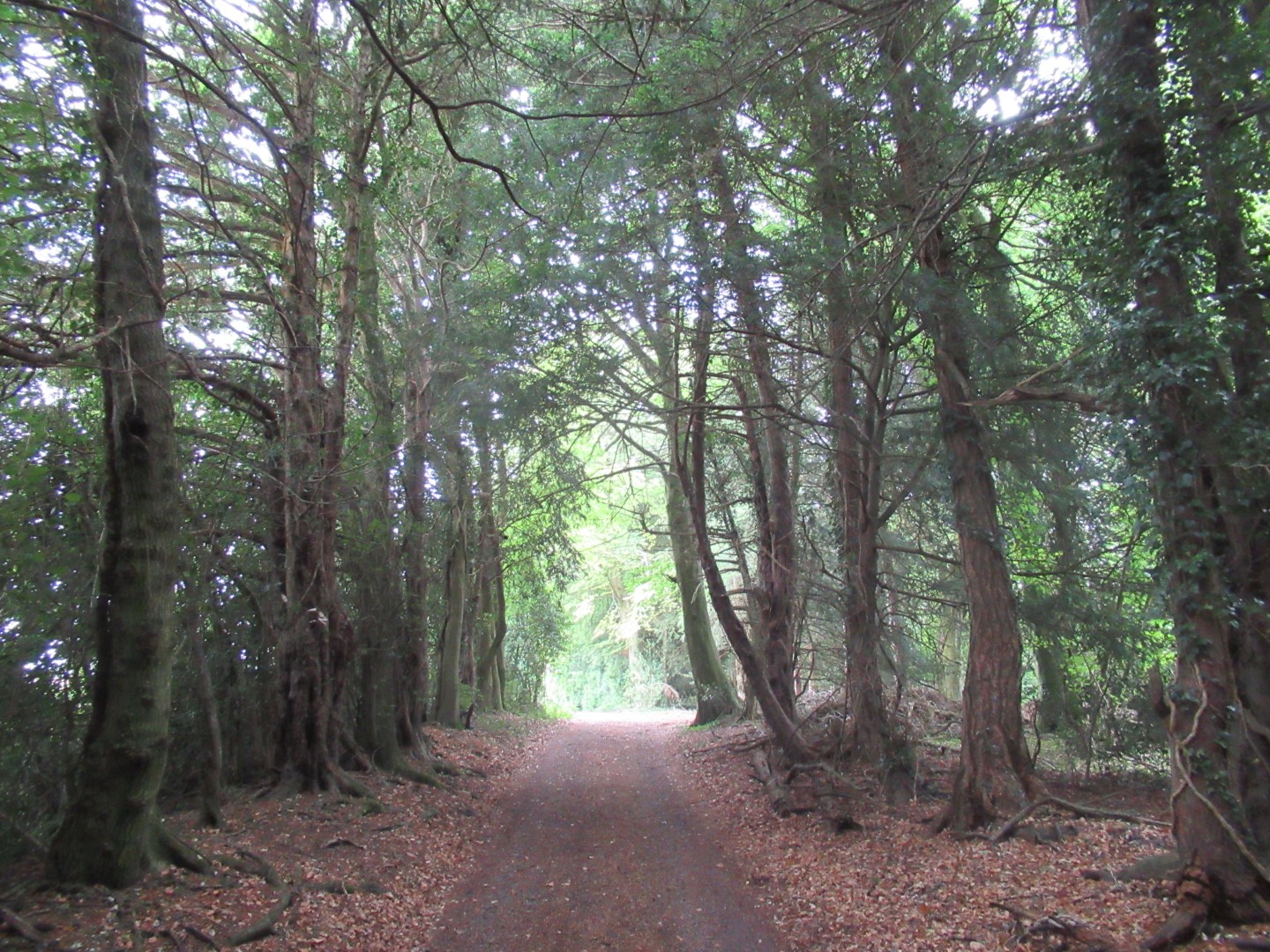
Light at the end of the tunnel
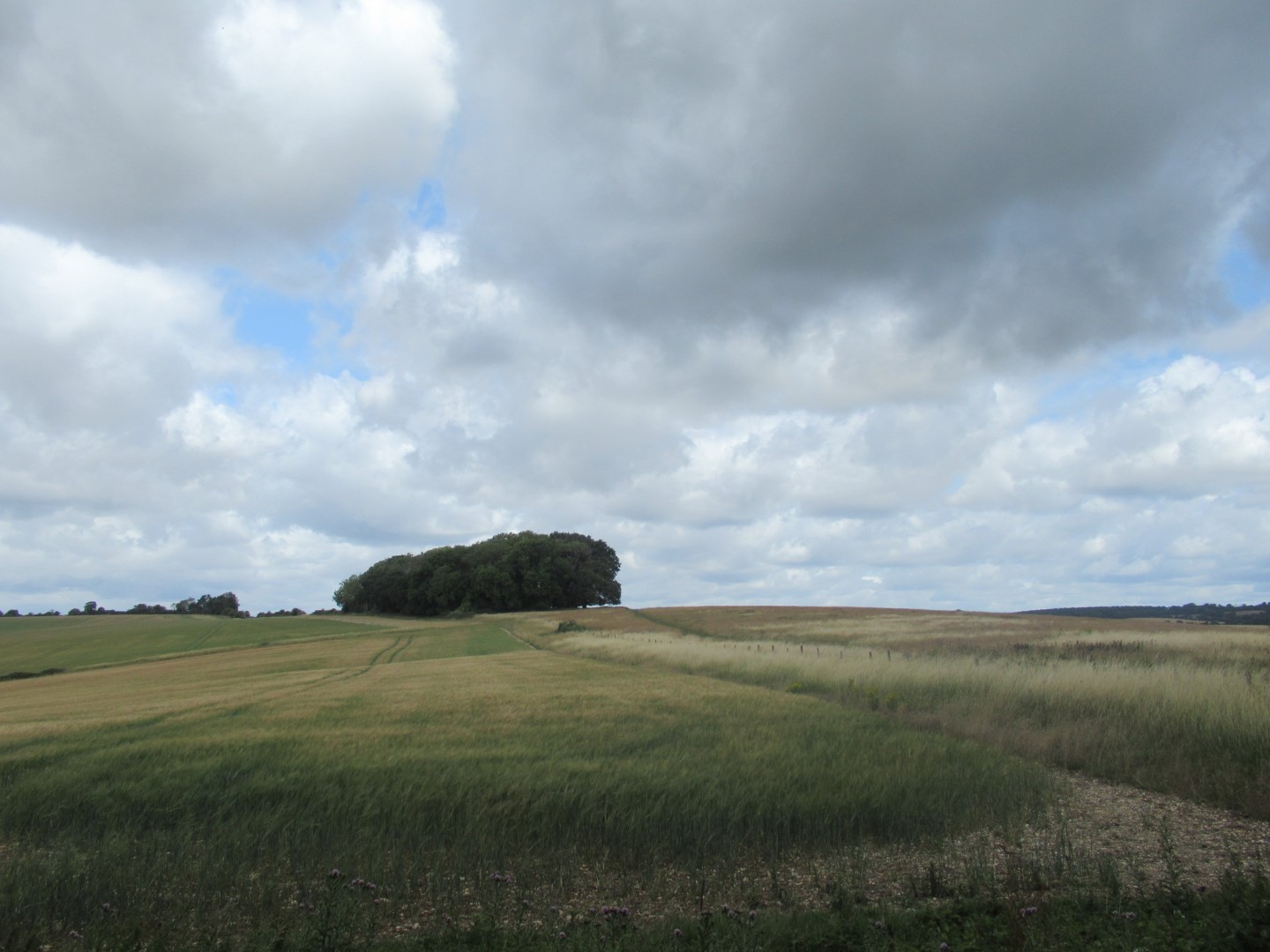
Storms clouds threaten
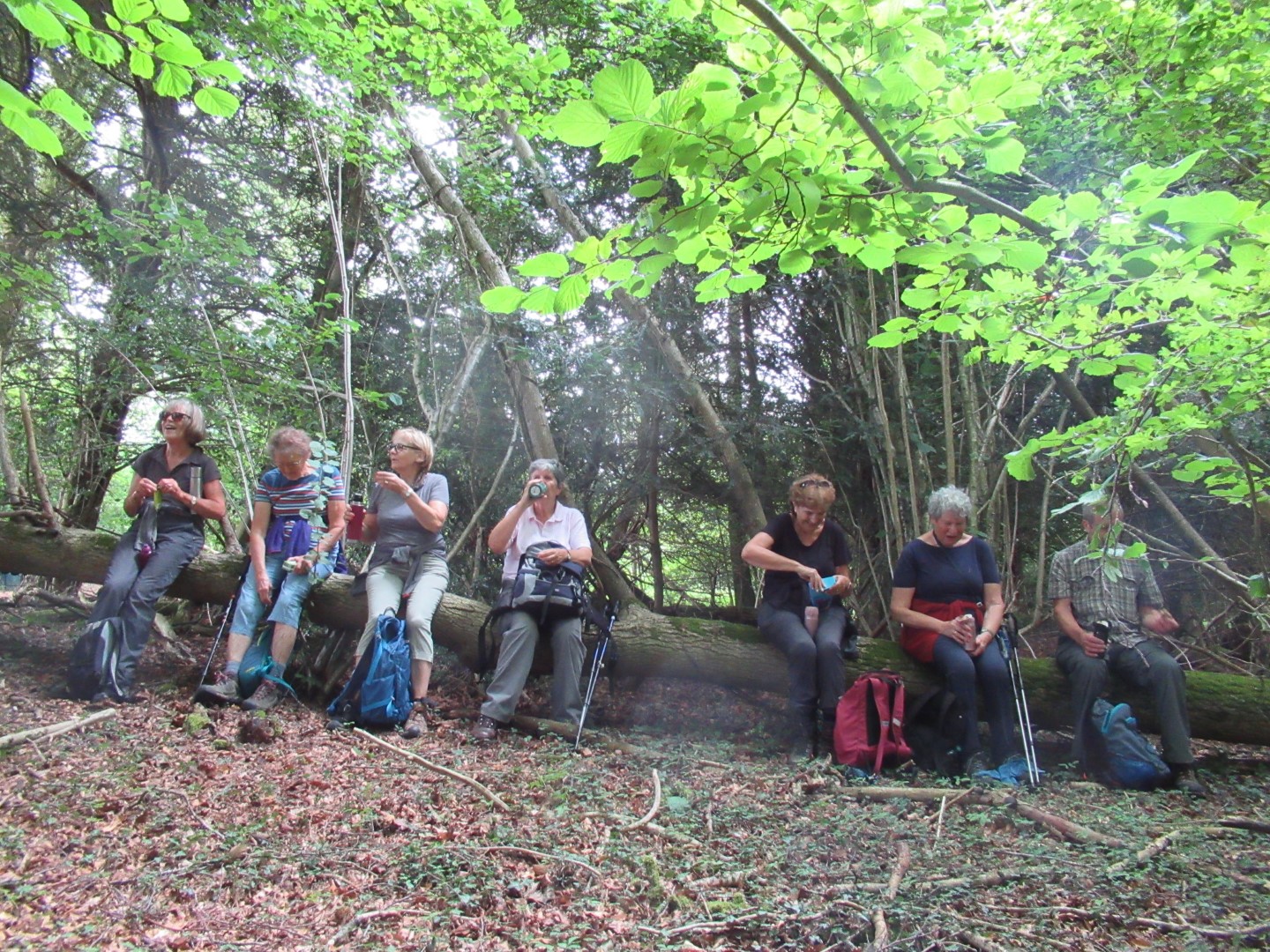
Coffee stop and time to break out the birthday chocolates
 .
.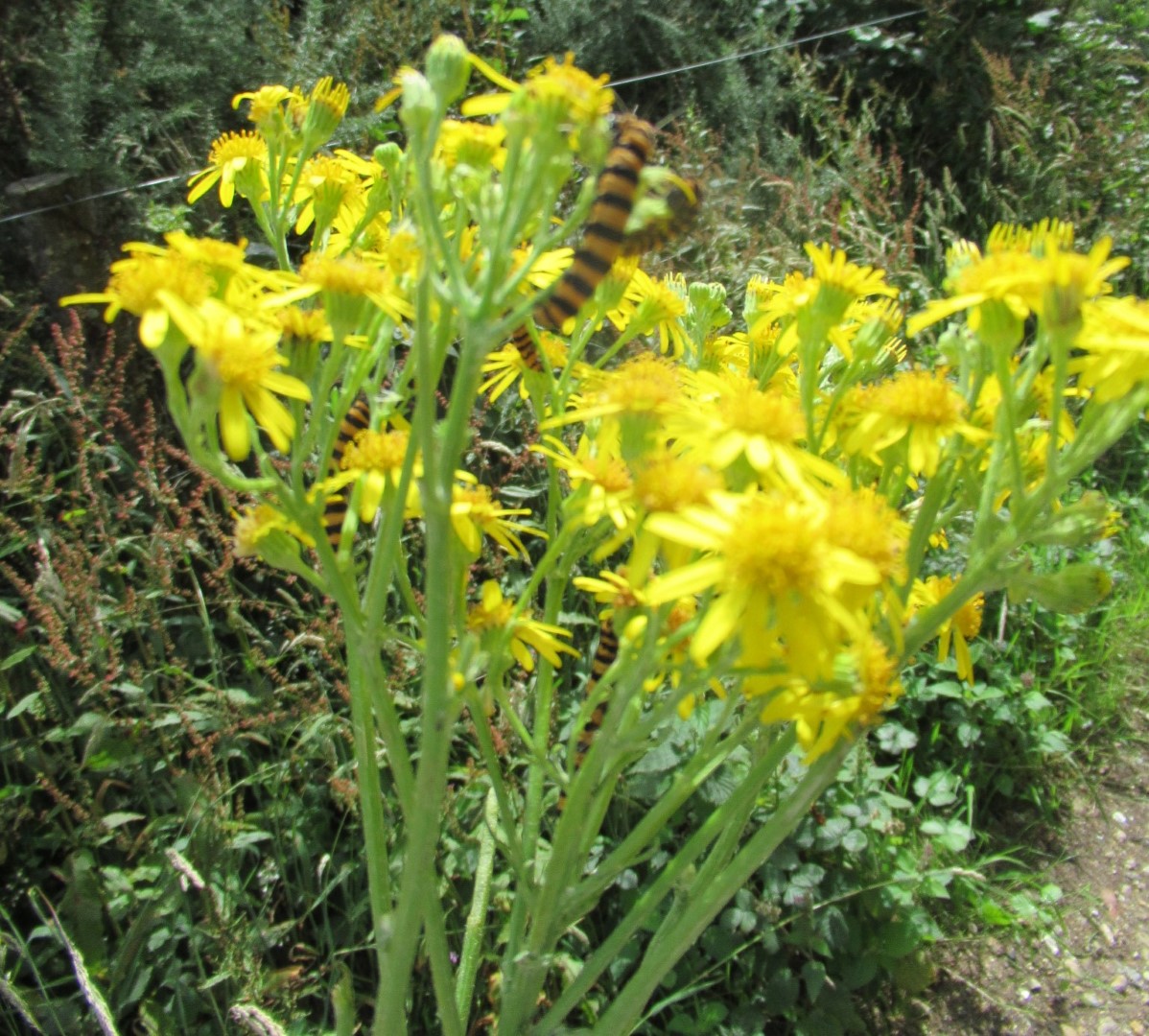
Cinnabar Moth enjoying lunch
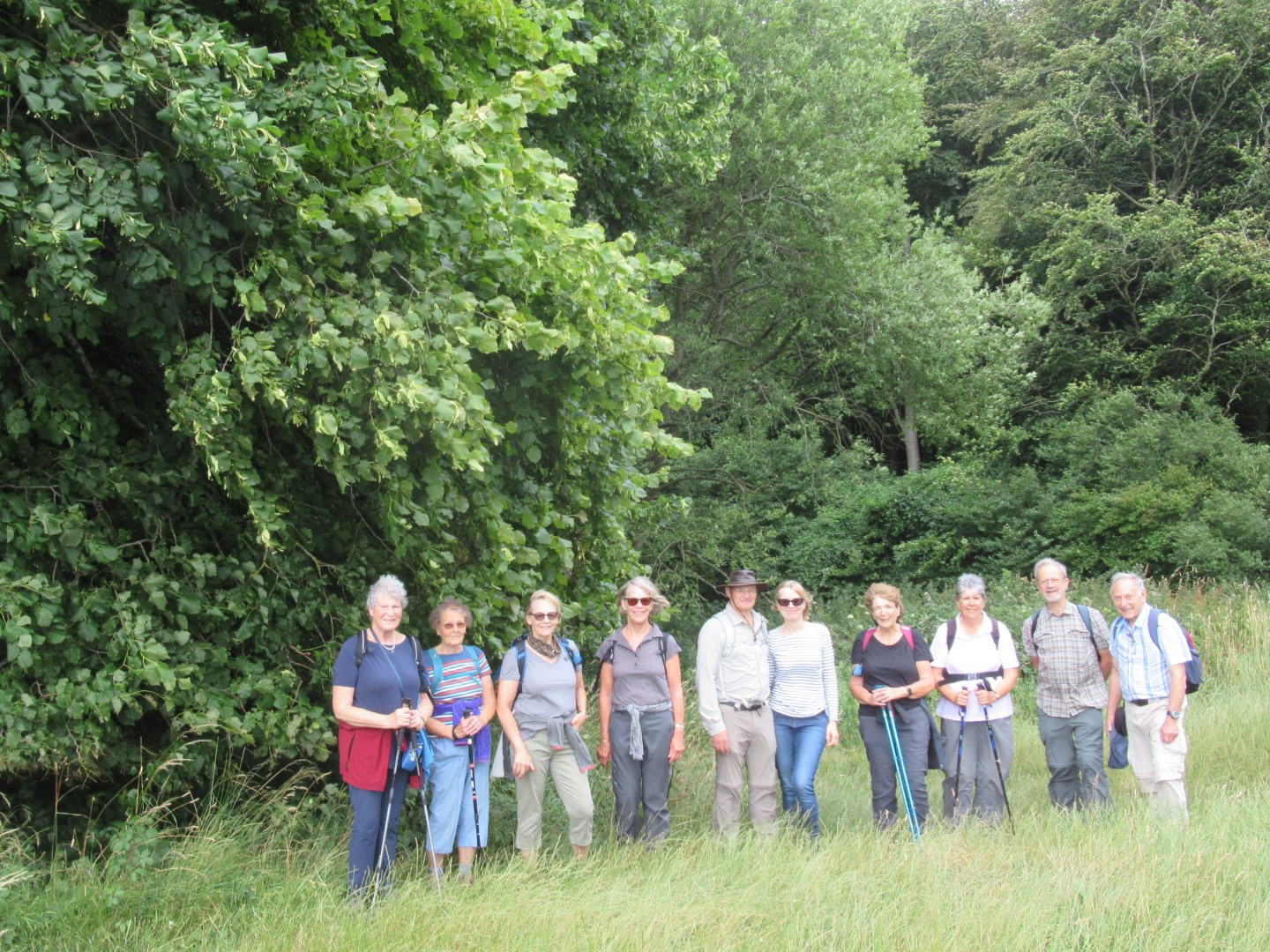
Meet the team

Meet the photographer!
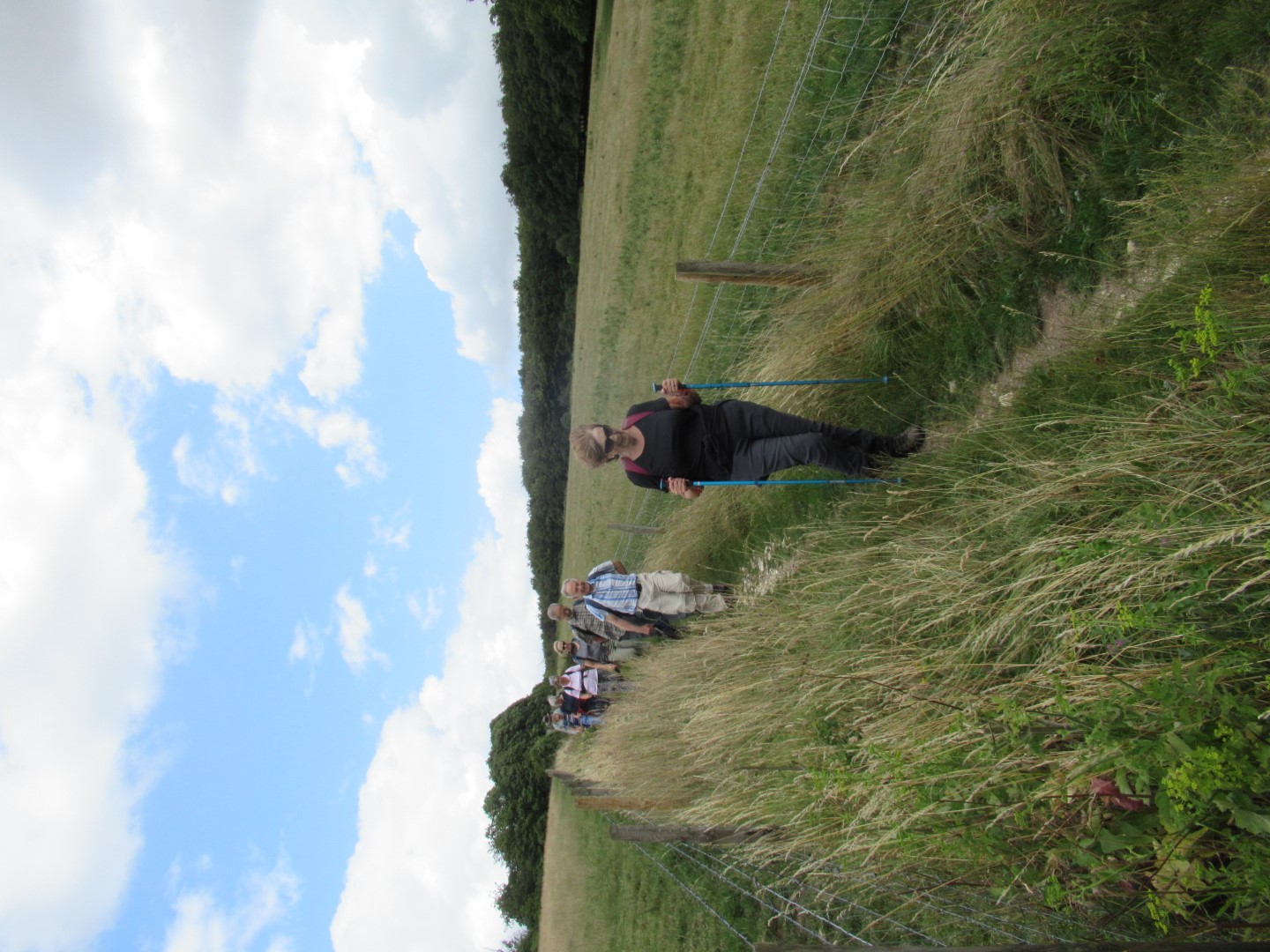
On the homeward stretch

Almost at the pub, which route is the shortcut?
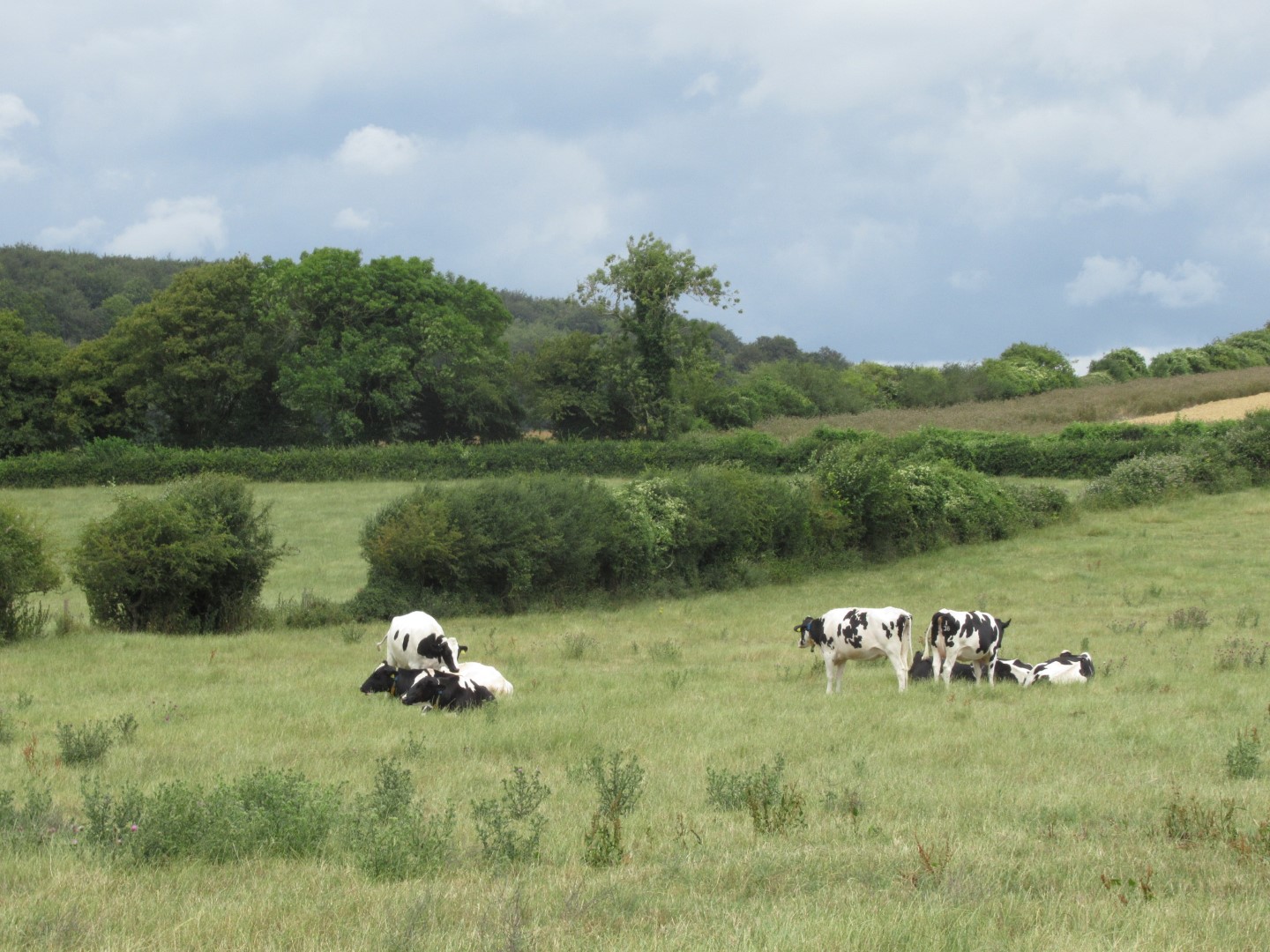
Indecisive cows three standing vote for dry weather, four lying down for rain
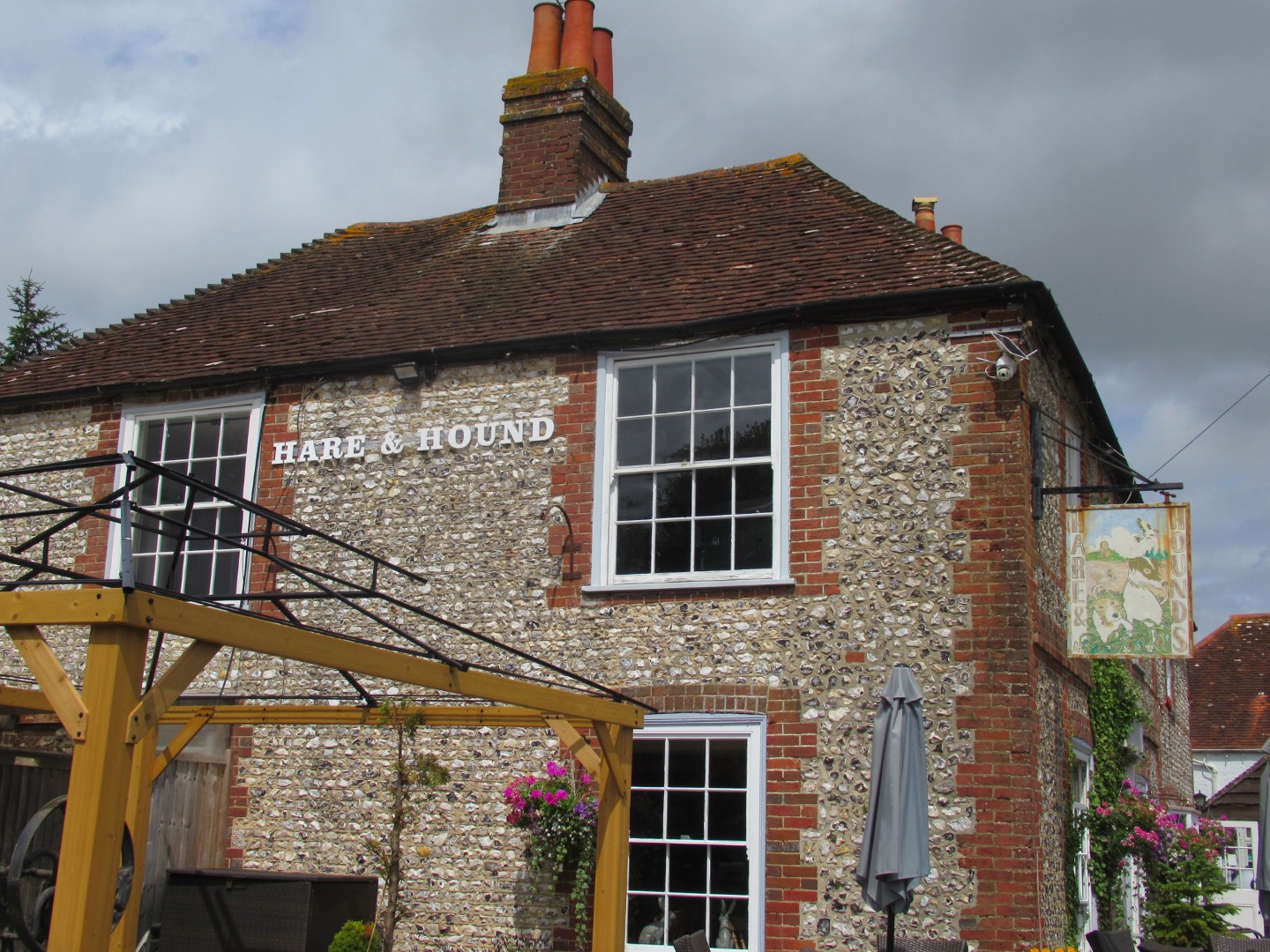
The welcome lunch venue
Cocking walk on 5th July 2023
We gathered outside The Bluebell before setting off across the road and down the path towards Mill Hanger. On the way we were keen to have a look at the fabulous statues hidden behind a hedge. However, the hedge proved a major obstacle and we were fortunate a fellow walker had been taking photos on a recent open day. Can't be sure the open day will be repeated but here's a link - Cocking Garden - which is interesting. After some field work we descended into the magical Hoe Copse and walked up to Mill Lane in Heyshott. Walking north we passed Walkers Farm and then turned towards Heyshott Down, full of tumuli and managed by the Trust that the Cocking sculptor supports. Descending into Heyshott we travelled through fields full of wild flowers and then found a pleasant spot in the Churchyard for our drinks break. After using the provided seating, and duly refreshed, we embarked on our return journey, mostly through fields full of grain crops, wheat, barley and oats to eventually return to the start of our adventure. Food was provided by The Bluebell and was thoroughly enjoyed. Many thanks for the walk, Jay and Lindsay, about 5 miles in beautiful weather.
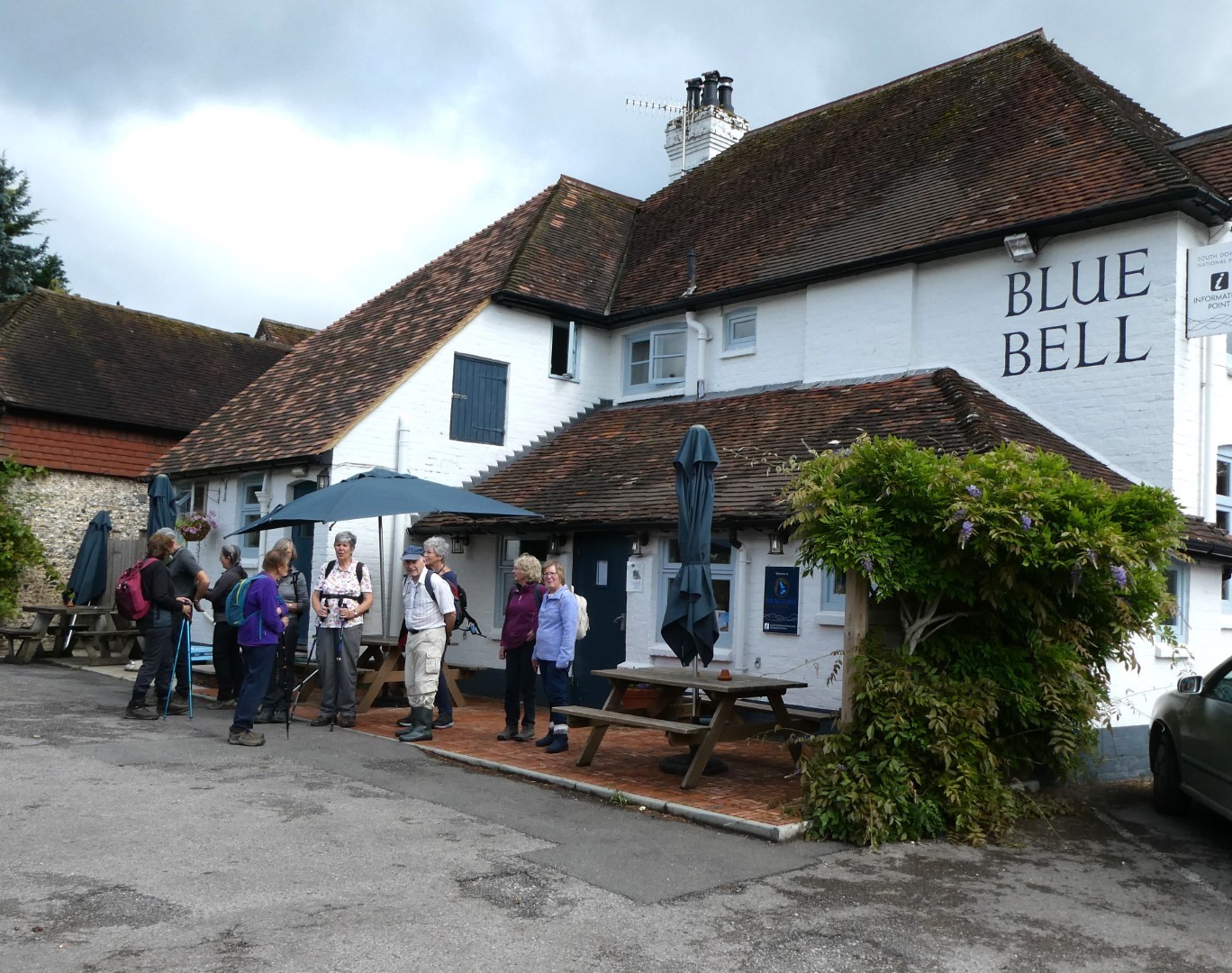
Preparing for the off

So what's behind the hedge - and what is that boot going to do......?
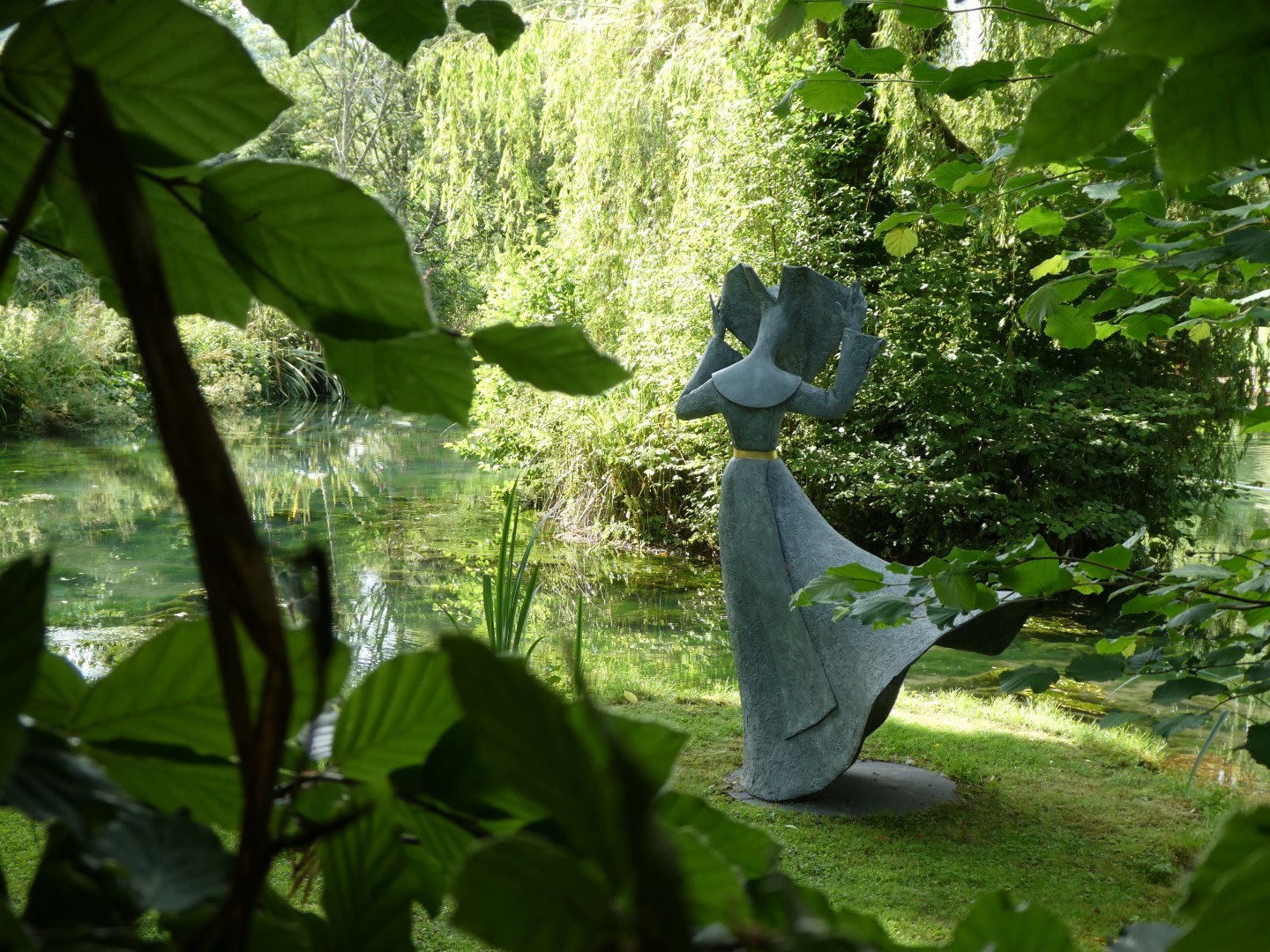
Aha, that's what's hidden away.

and a bridge!
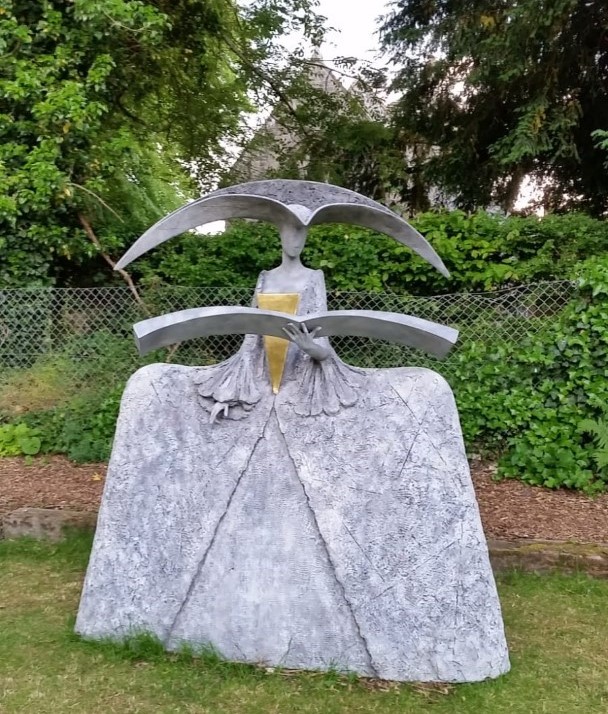
Is this our walk leader, studying the map?

Well, I have my sun-hat, but where is my rucksack?

Climbing up into the field
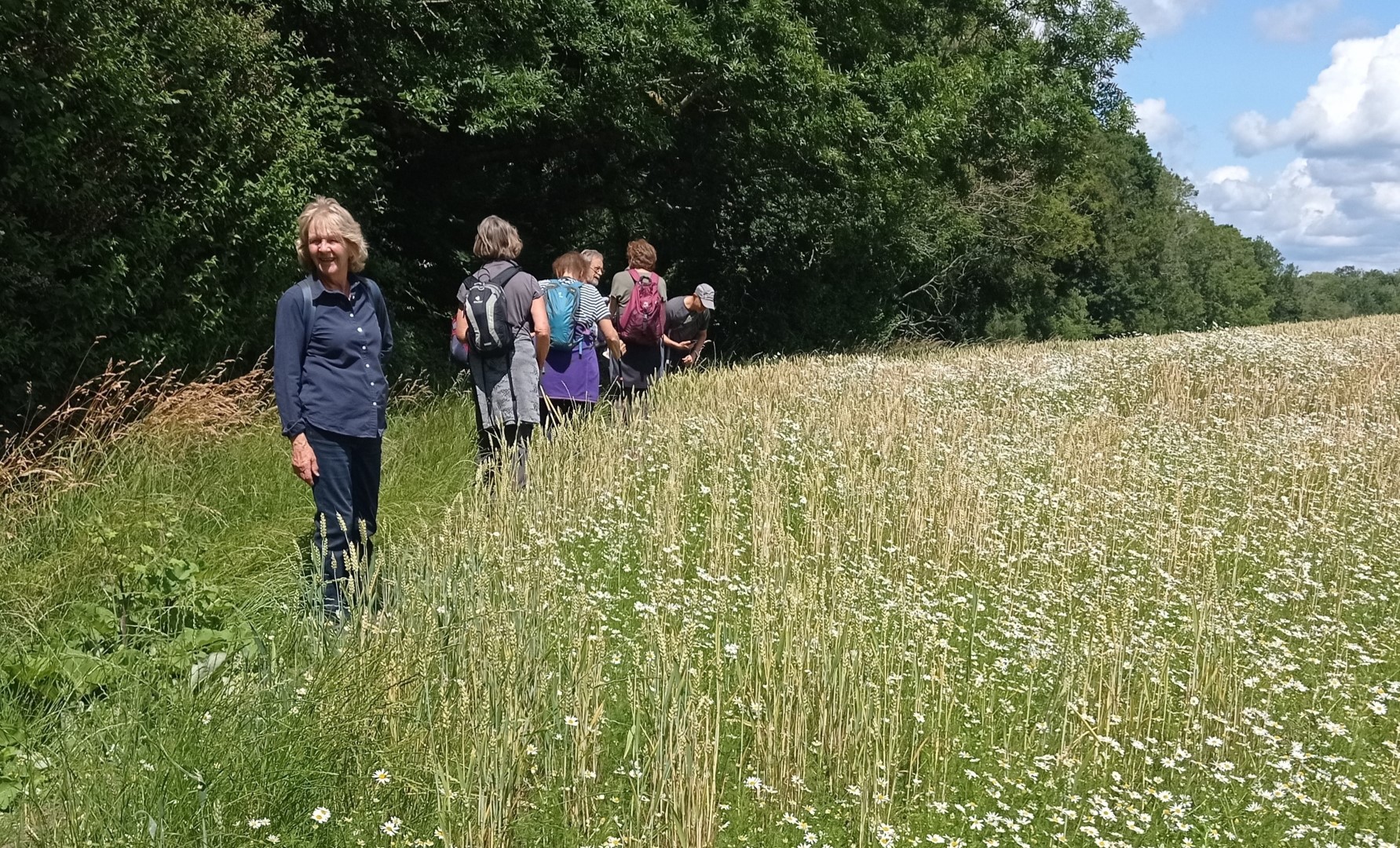
Daisies and barley

Beautiful Sussex!
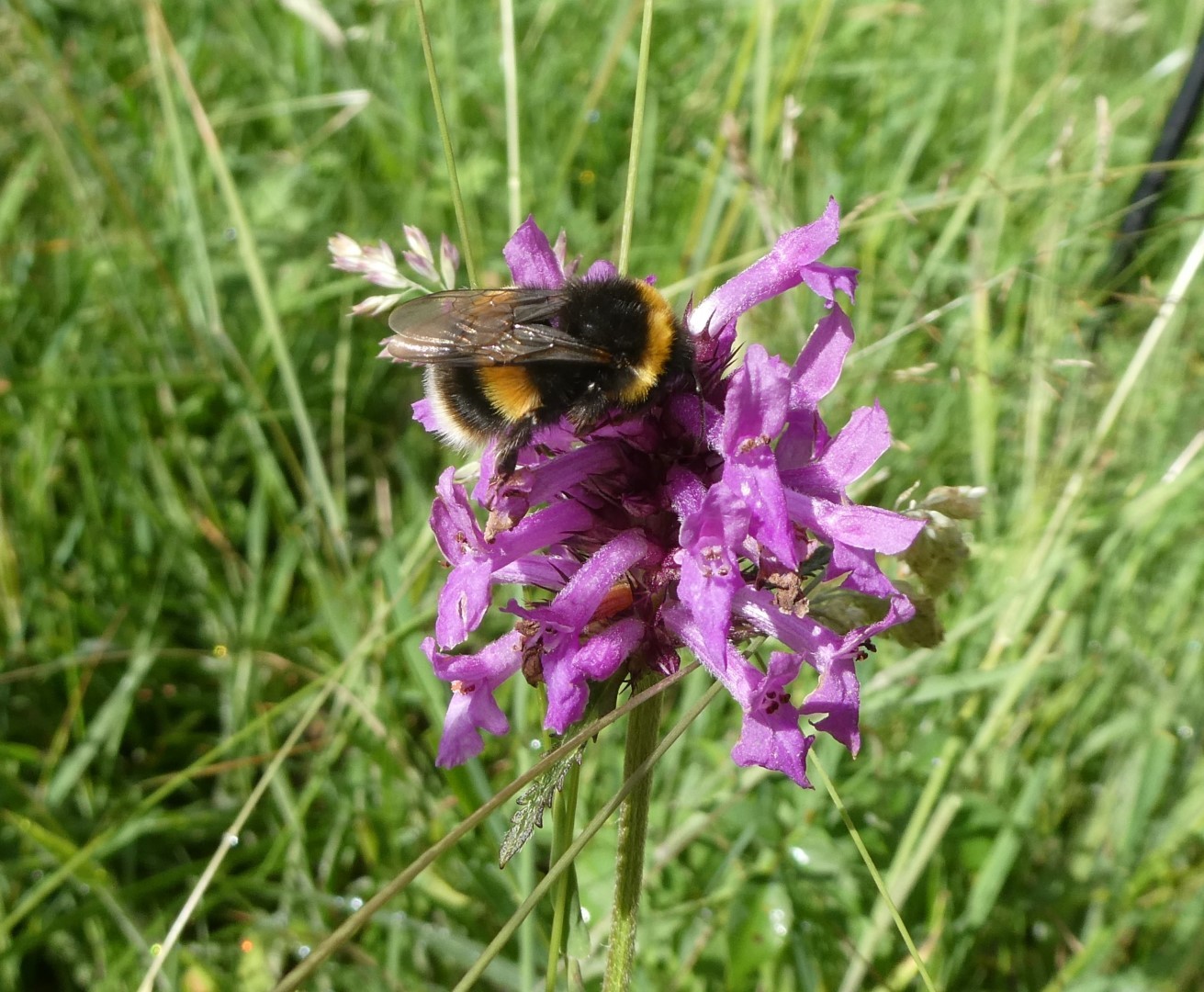
Bee feeding on an orchid?
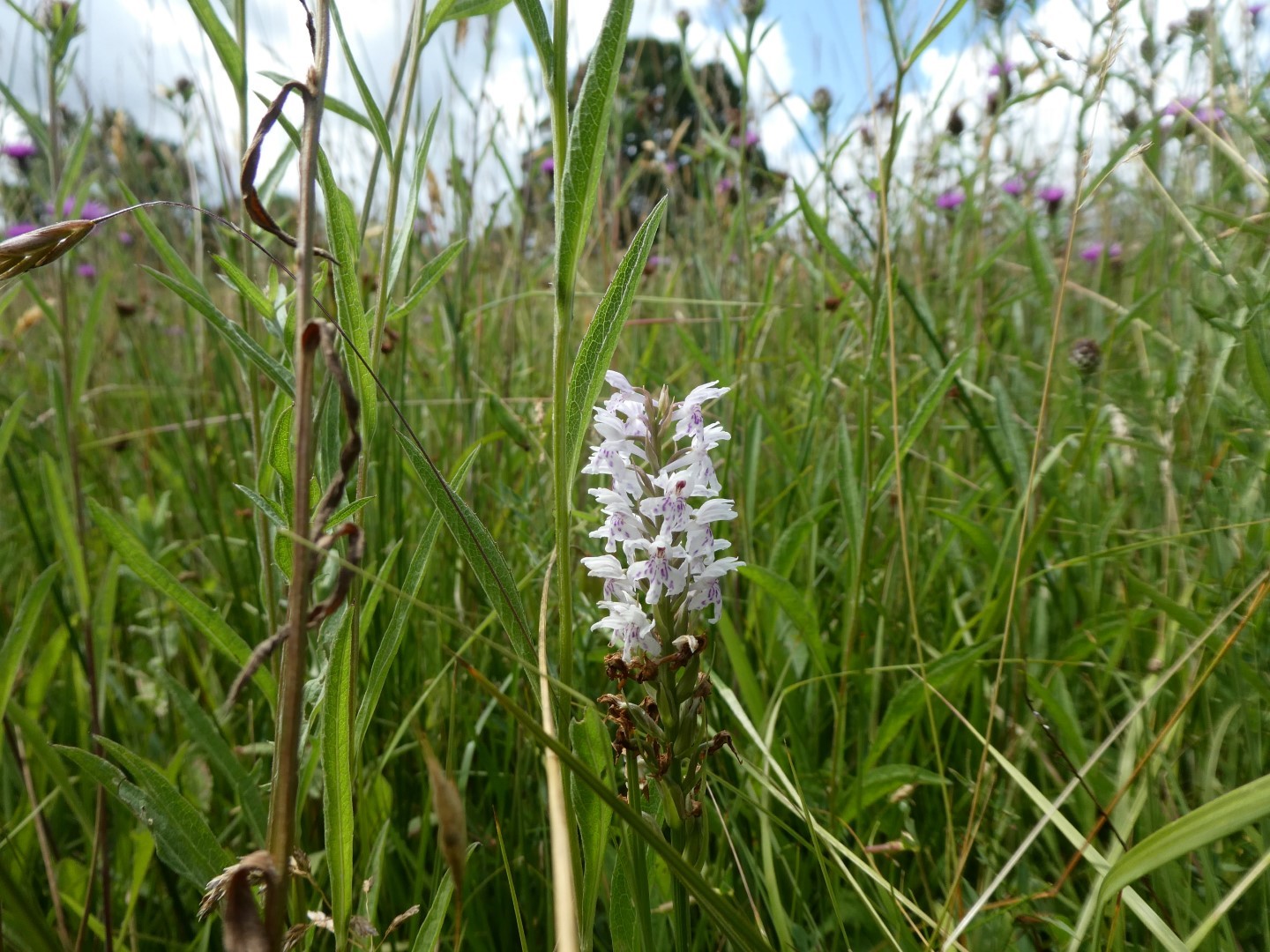
Common spotted orchid?
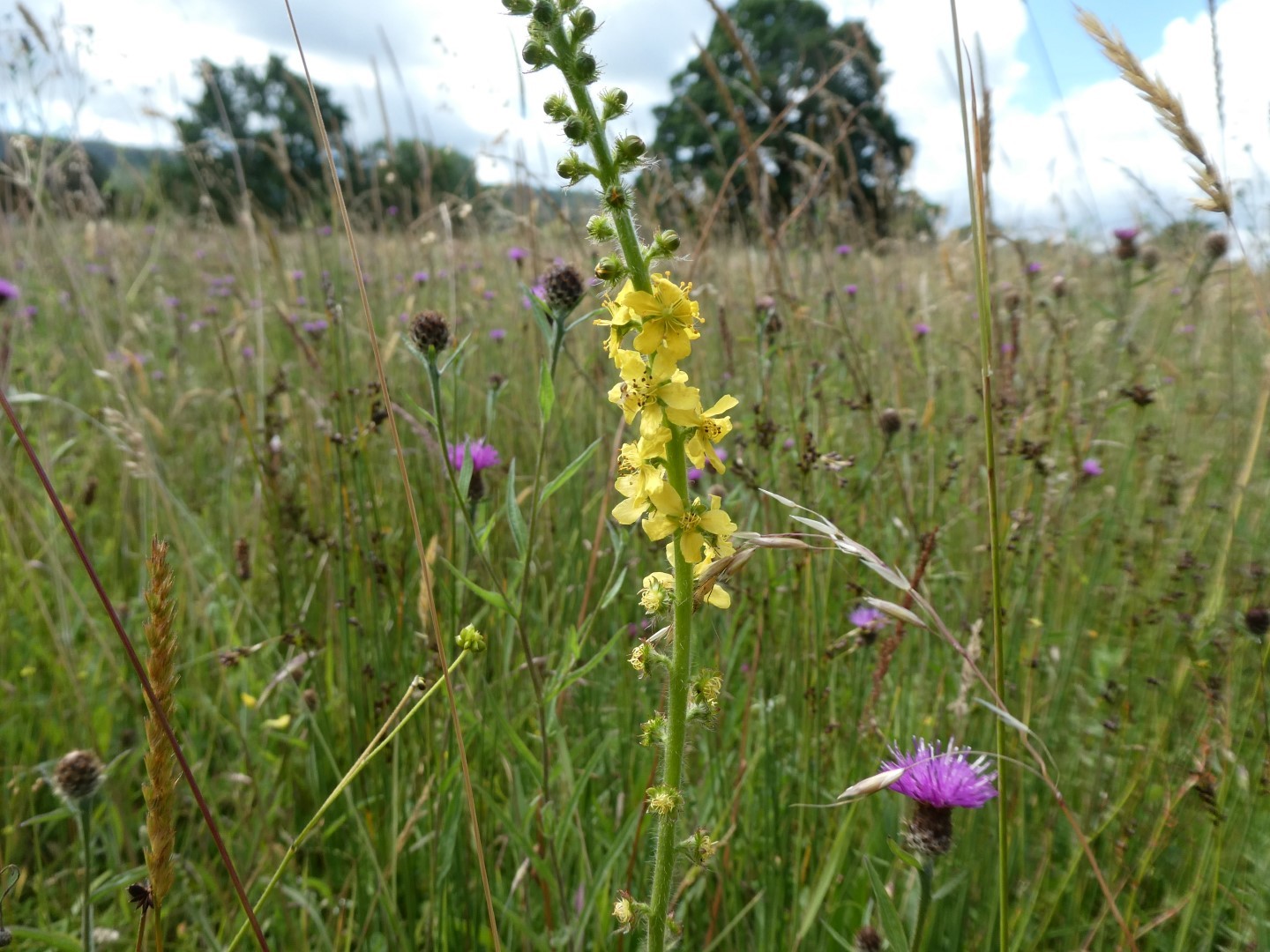
Wild flowers in abundance agrimoney and mullein.
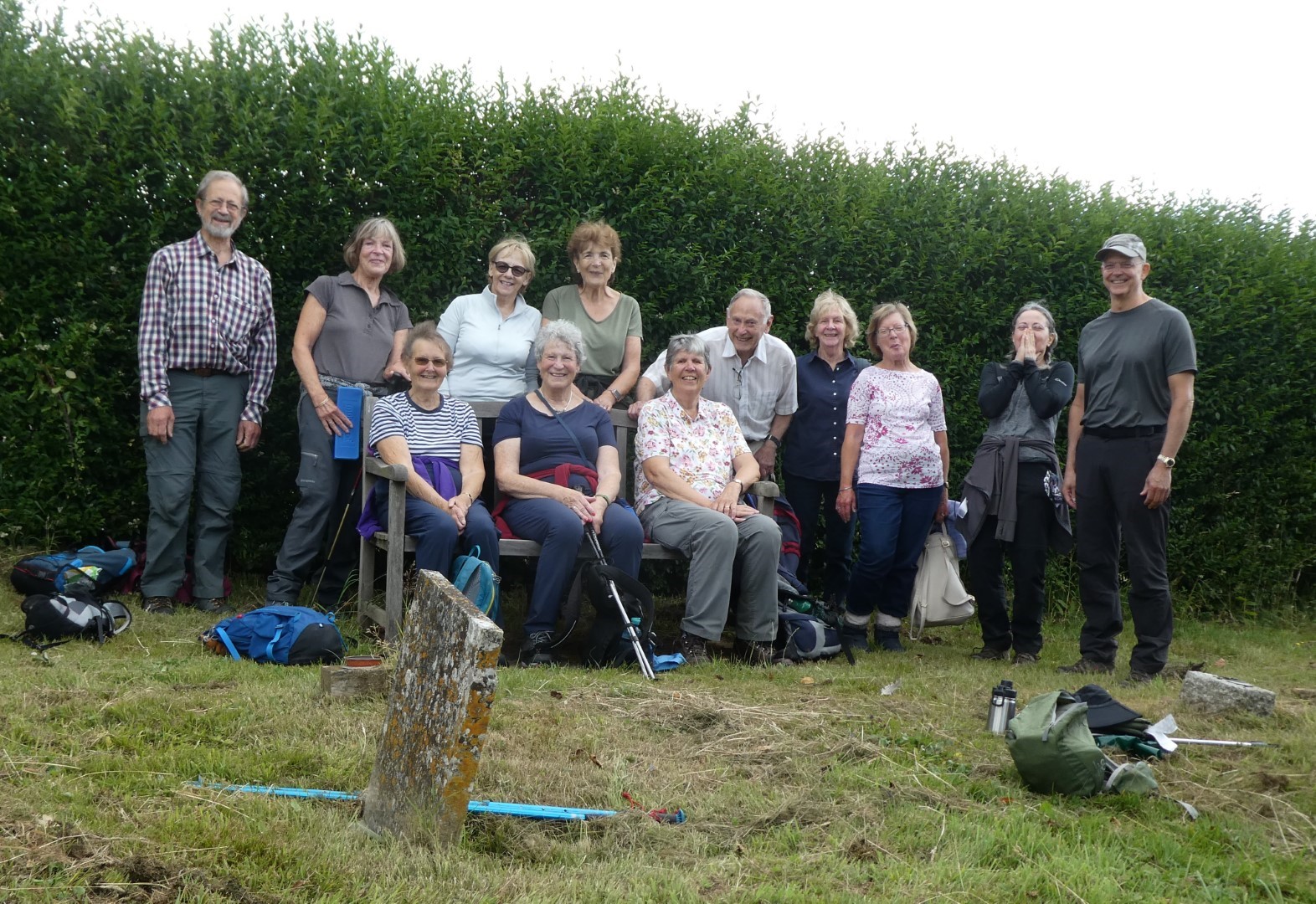
Drinks party in the churchyard
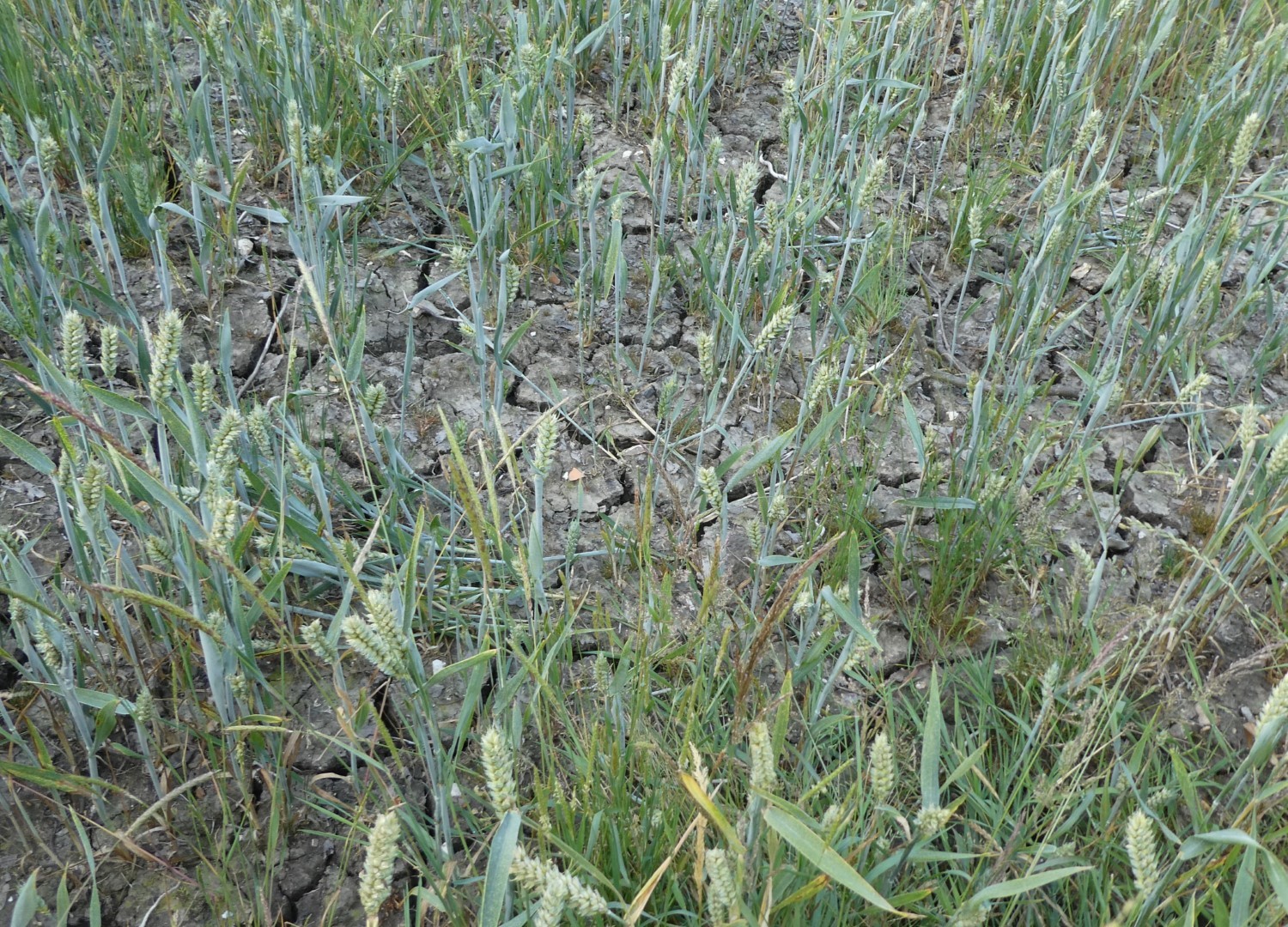
Despite recent rain, the earth was still very cracked up.
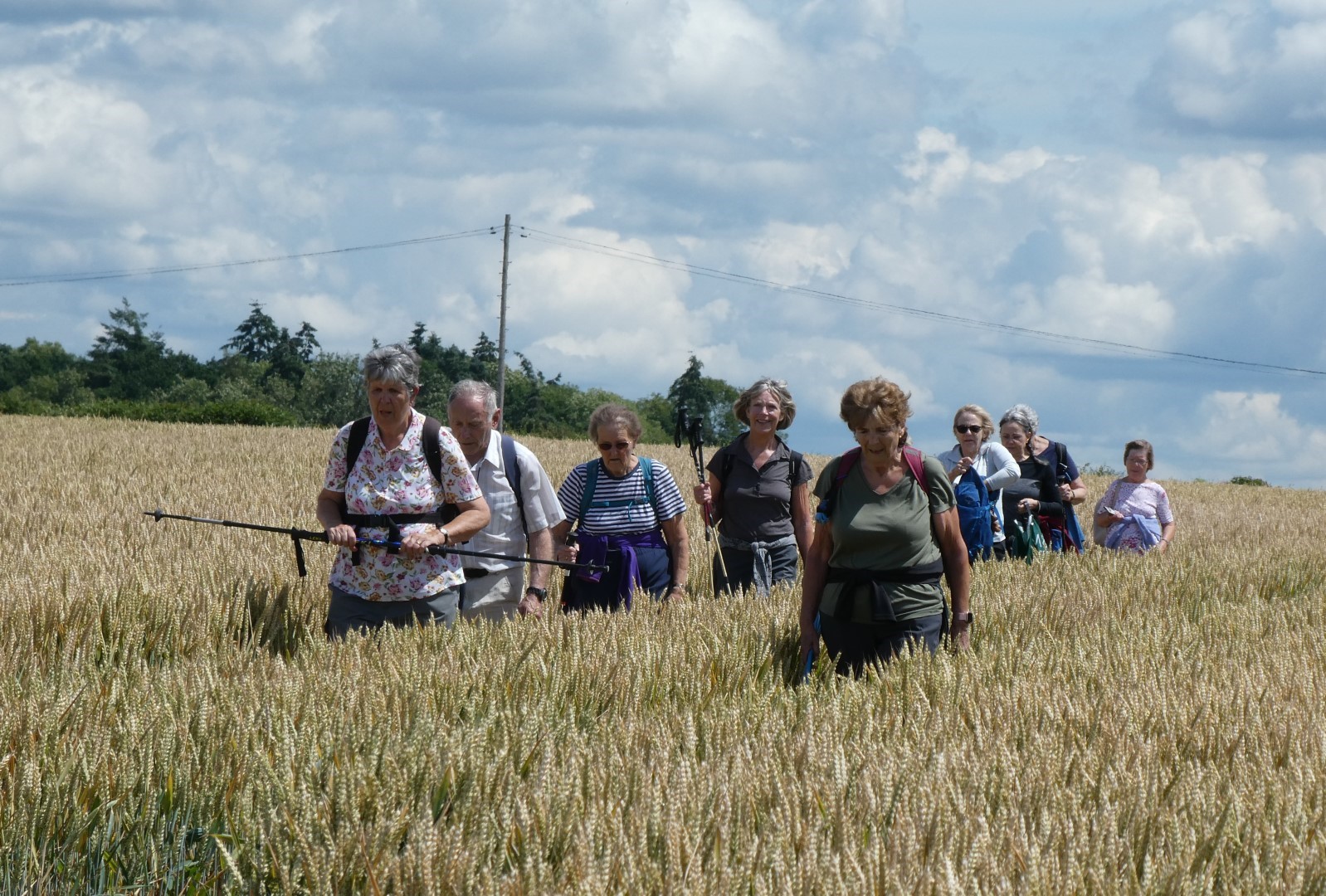
Looks like a field study group
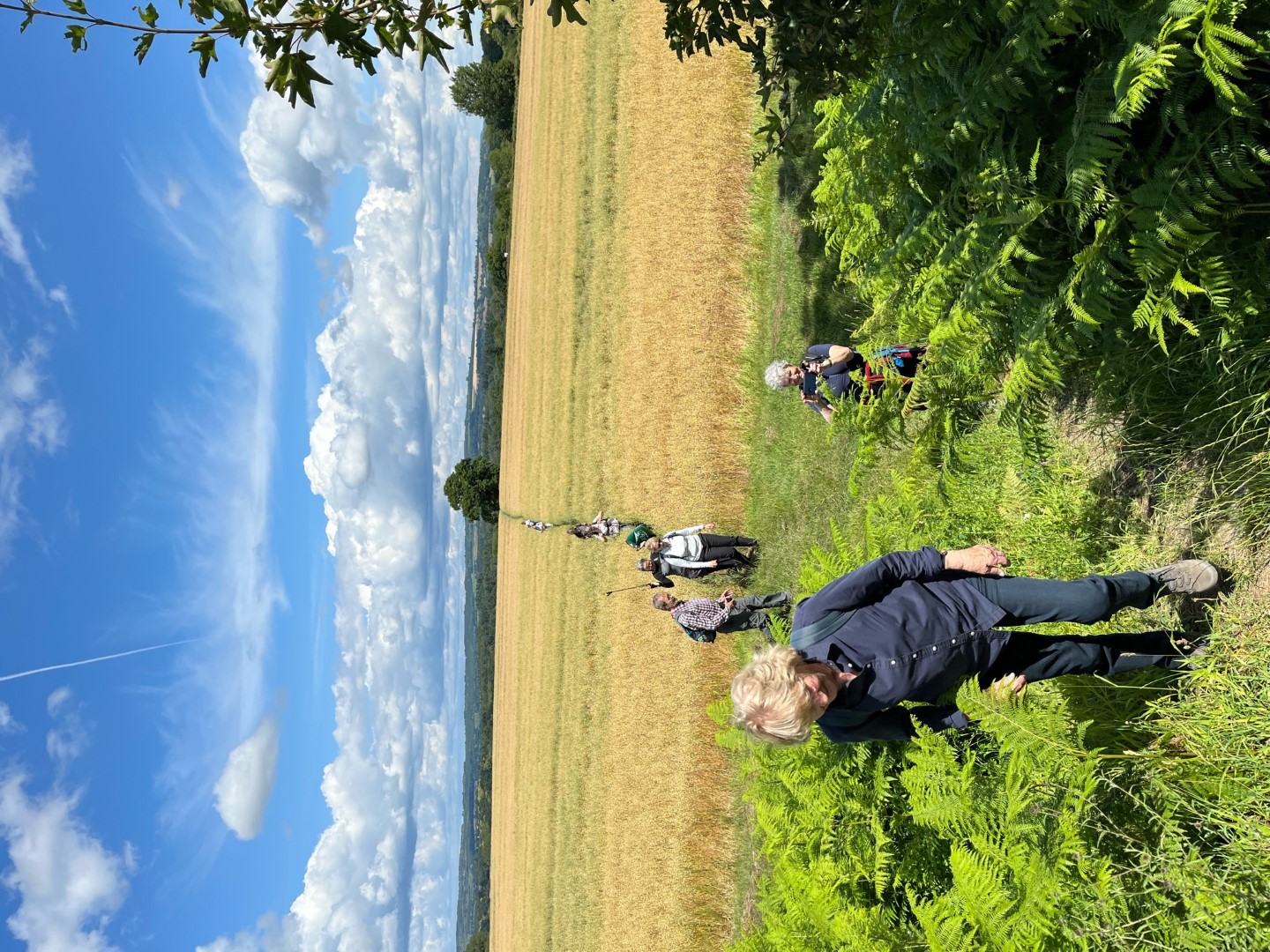
There's no missing the path across that field!

Back to Cocking village
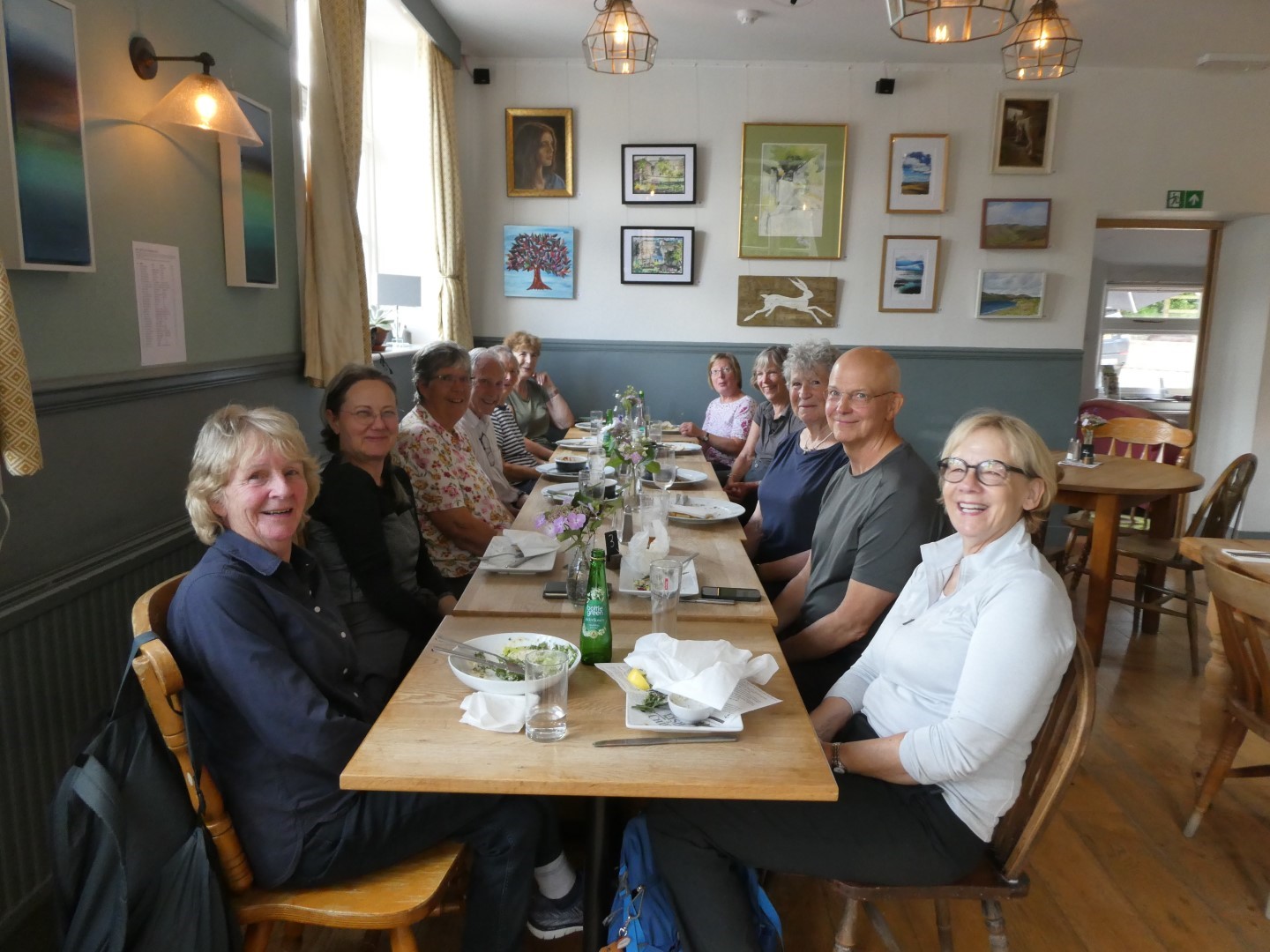
and a great lunch
.jpg)
Nice words from Virginia - was she on our walk?

About 5 miles
Walderton walk on the 28th June 2023
The gathering assembled in the car park of The Barley Mow for a quick photo opportunity before Denis lead us westwards to overcome the long gradient of Woodlands Lane/Monarchs Way where a select competition commenced for a pair of rubbish collection athletes, the winner to be determined by the quality of rubbish collected rather than volume or weight. We took a path that lead us closest to Stansted House, which has Carolean revival decor and is listed Grade II*. The site has been visited by Monarchs Henry II, Richard I, John, Edward VI and Elizabeth I who all were keen hunters, luckily, peasants are no longer on the menu so we were safe. After a debate on whether to visit their café for coffee we turned east and found a comfortable log to while away our coffee break. Our excursion for this trip was to Racton Monument, built between 1766 and 1775 for George Montagu-Dunk, 2nd Earl of Halifax, either as a summerhouse for Stansted House or so he could watch his merchant ships dock at the nearby port, Emsworth. According to Country Life, "it has seen illegal raves, ghost hunts, occultists and graffiti, and was, reputedly, a 19th-century brothel". Local lore suggests "spectral sightings that include flying bricks, faces in windows and a ghost tractor that drives up behind you, then disappears. Needless to say, we were spectrally disappointed! However, the rubbish pickings were extensive. The return to Walderton took us past Lordington House and a swing, through parched fields so we arrived back in the Barley Mow in a matched state where we slaked our thirsts and thoroughly enjoyed our lunches. Lindsay was deemed to have collected the best possible quality detritus and was awarded a suitable prize.
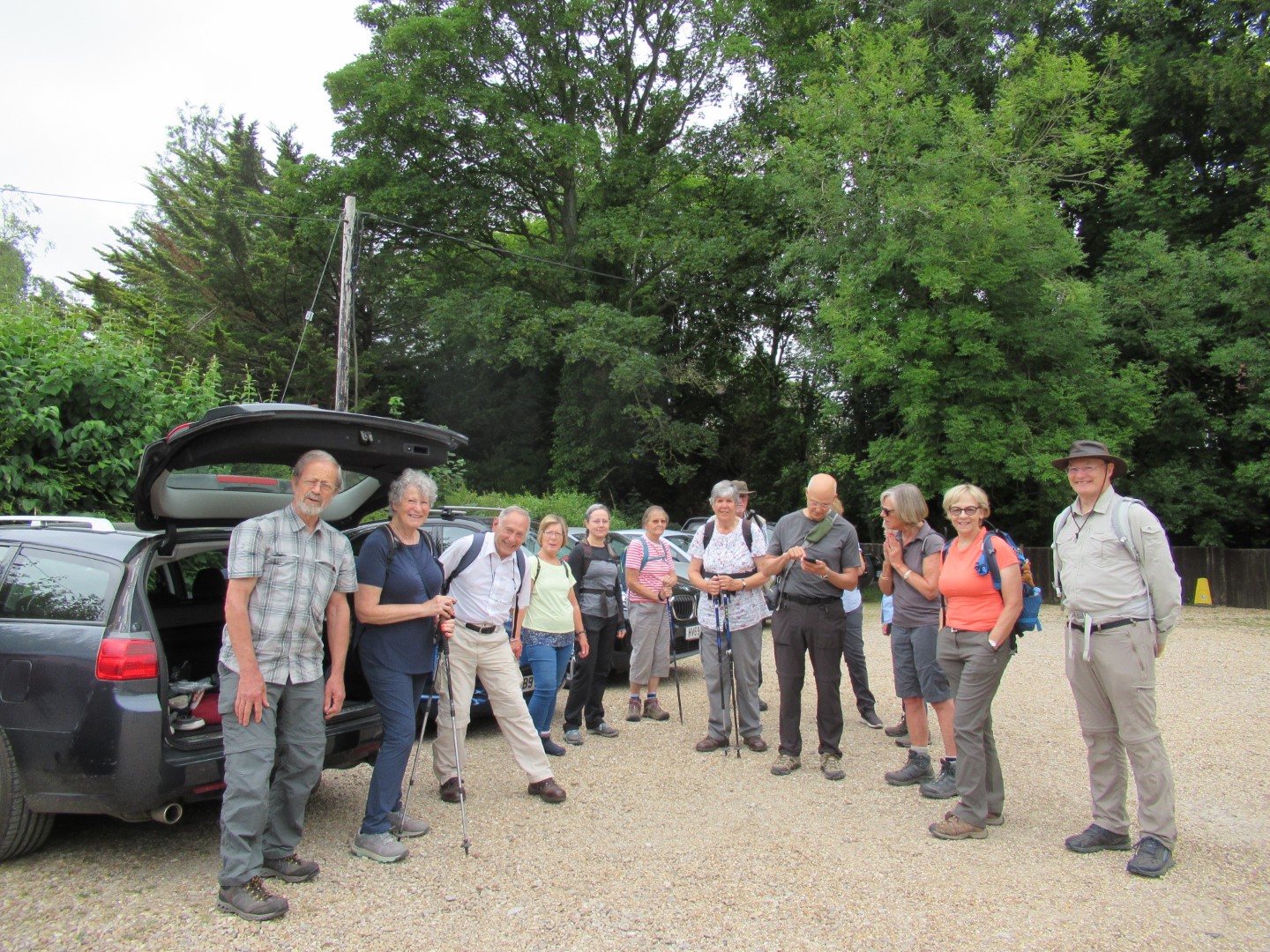
The call to arms, or feet in this case
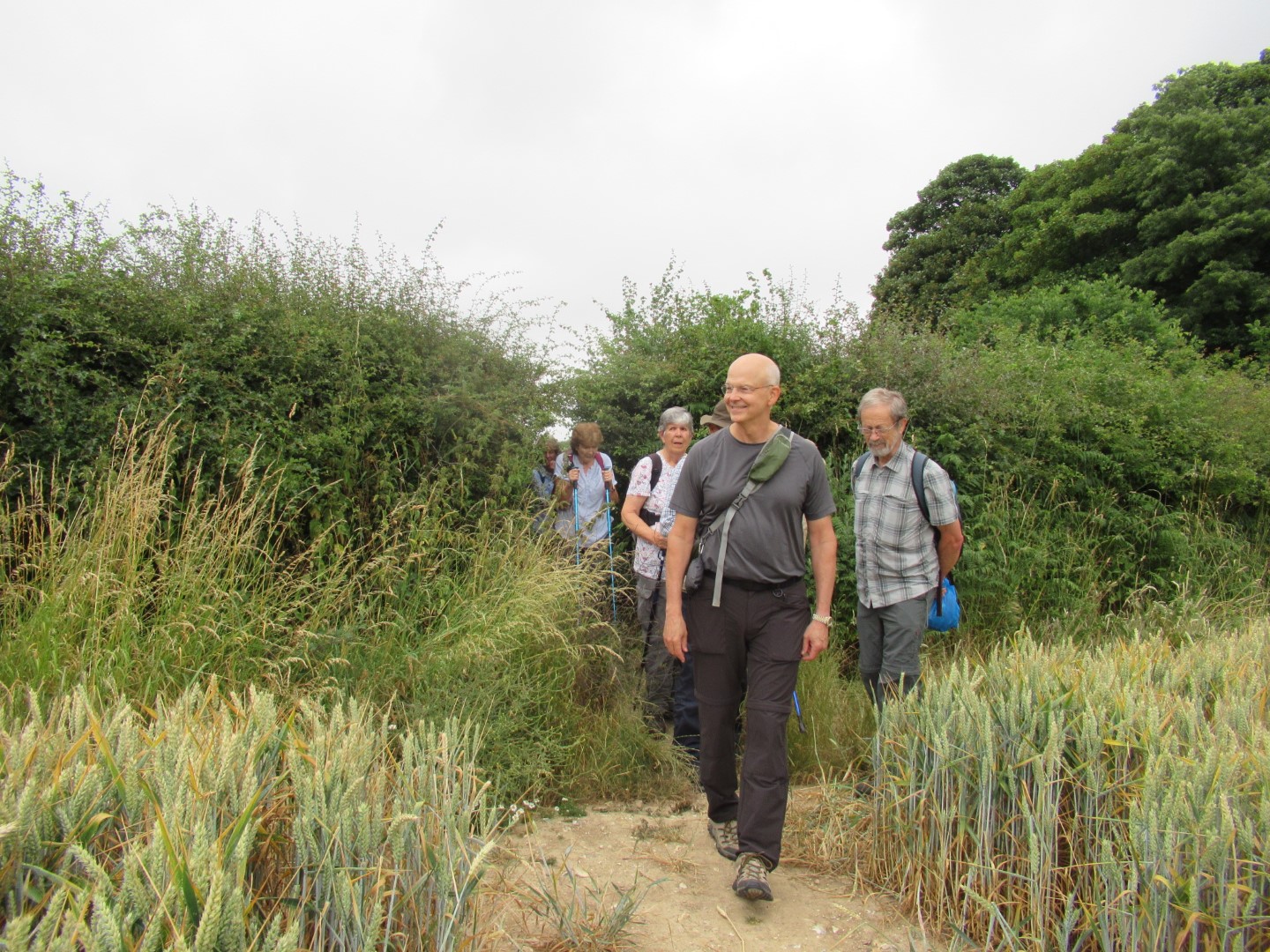
Up the hill and through a hedge
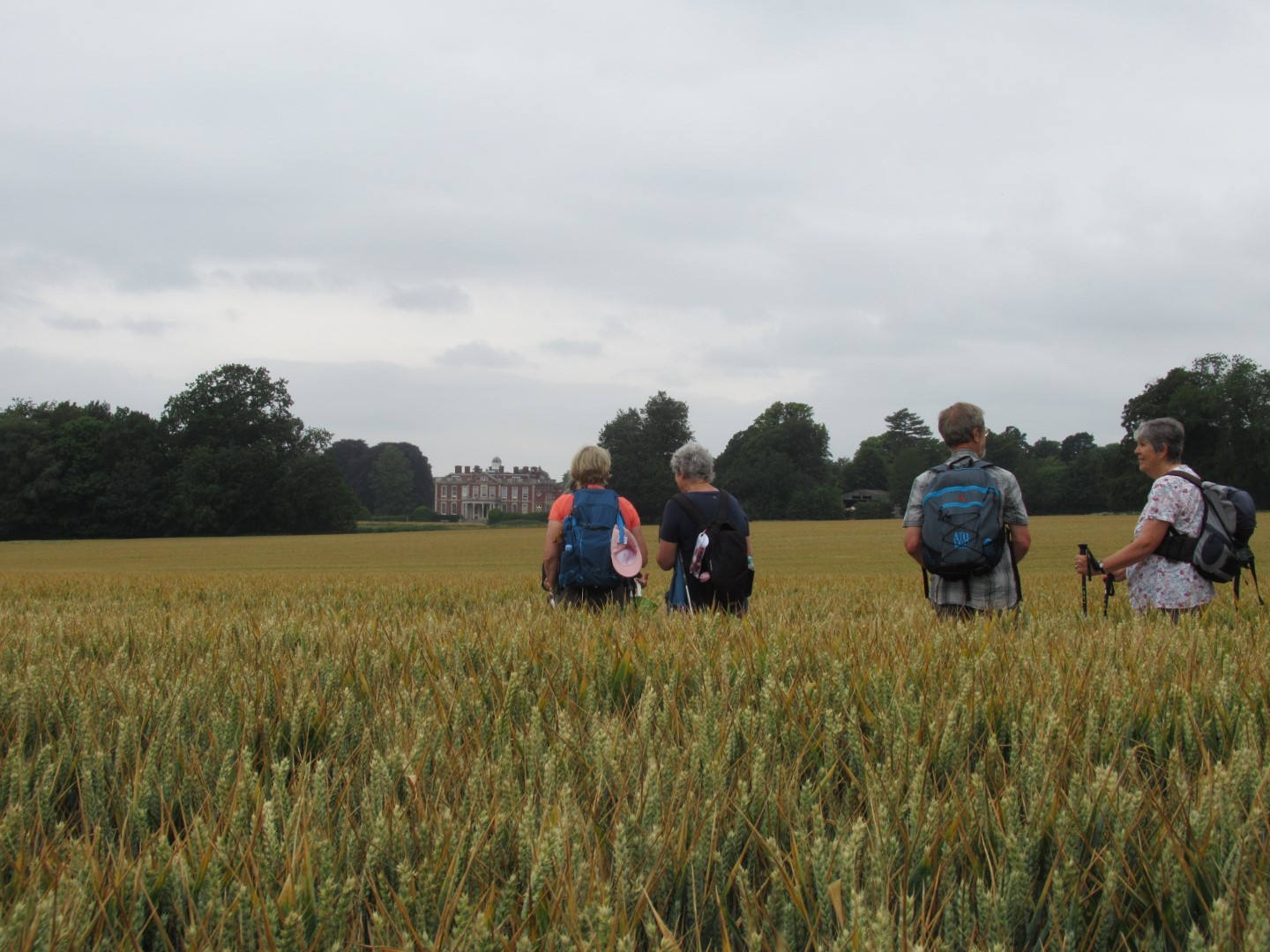
Good job peasants are off the menu now

The gardening team clearing the path
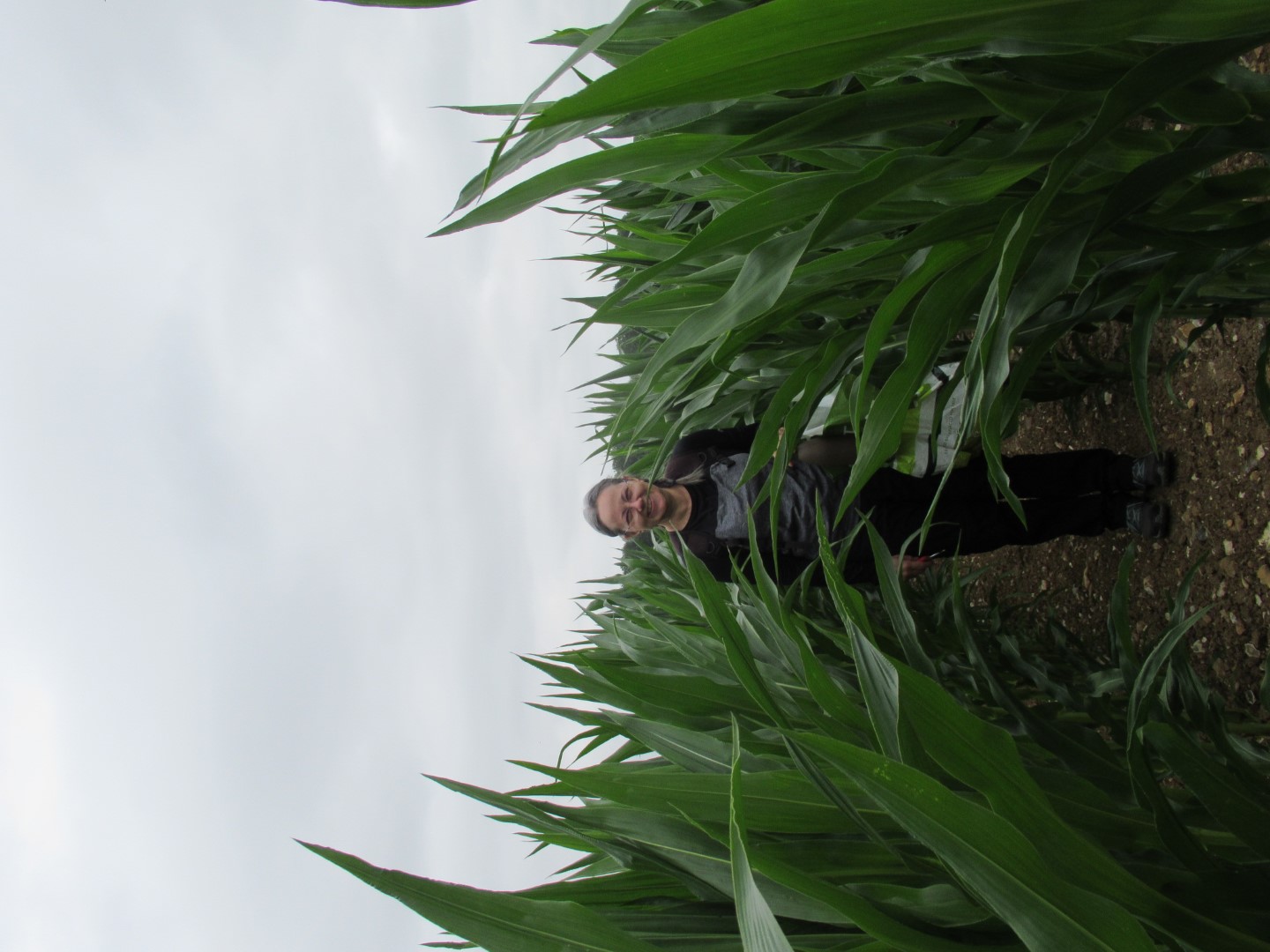
Luckily not everyone has seen the classic film "The Day of the Triffids". That would wipe away that smile!
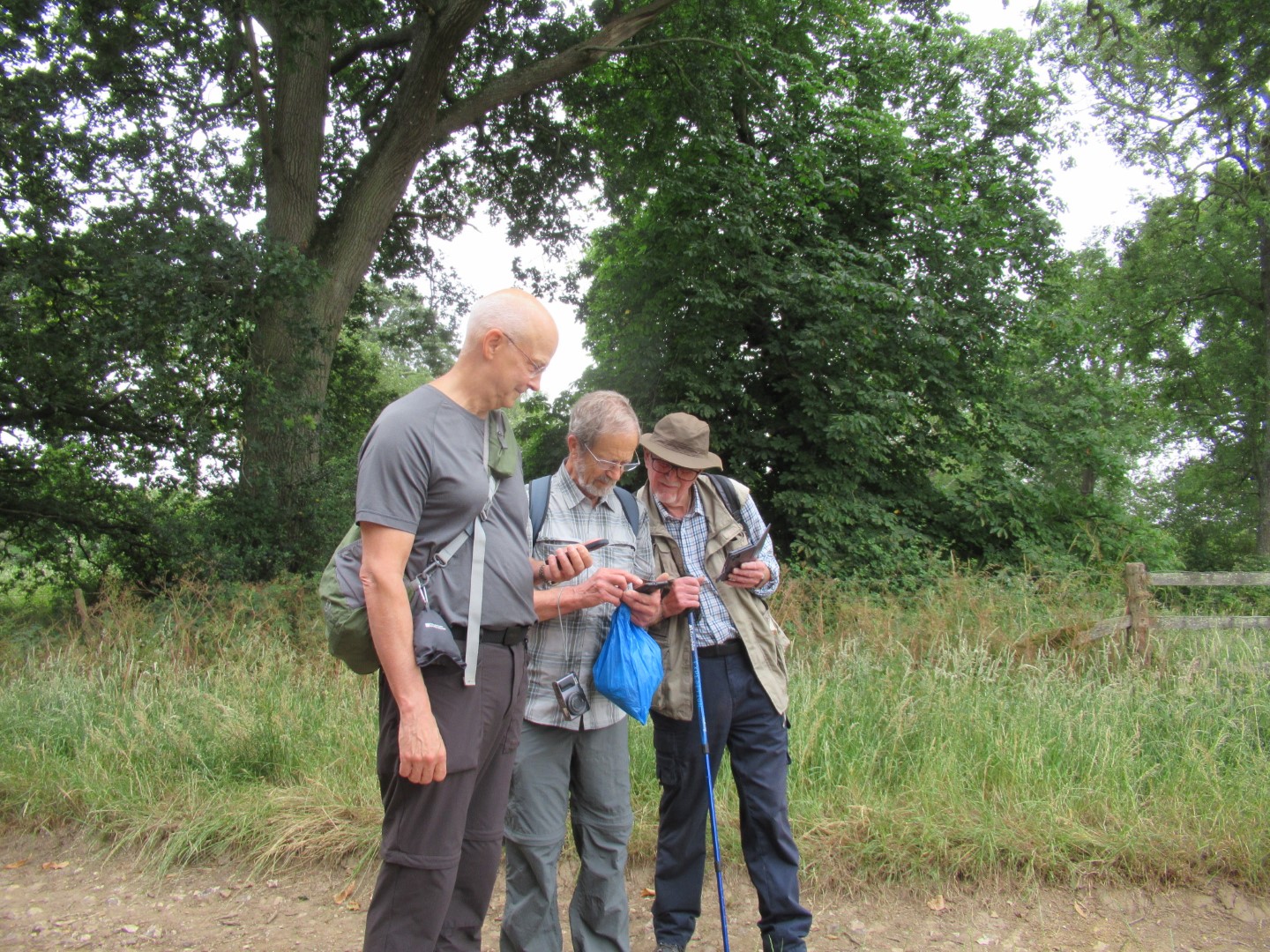
Three modern wise men, the guiding star is mobile
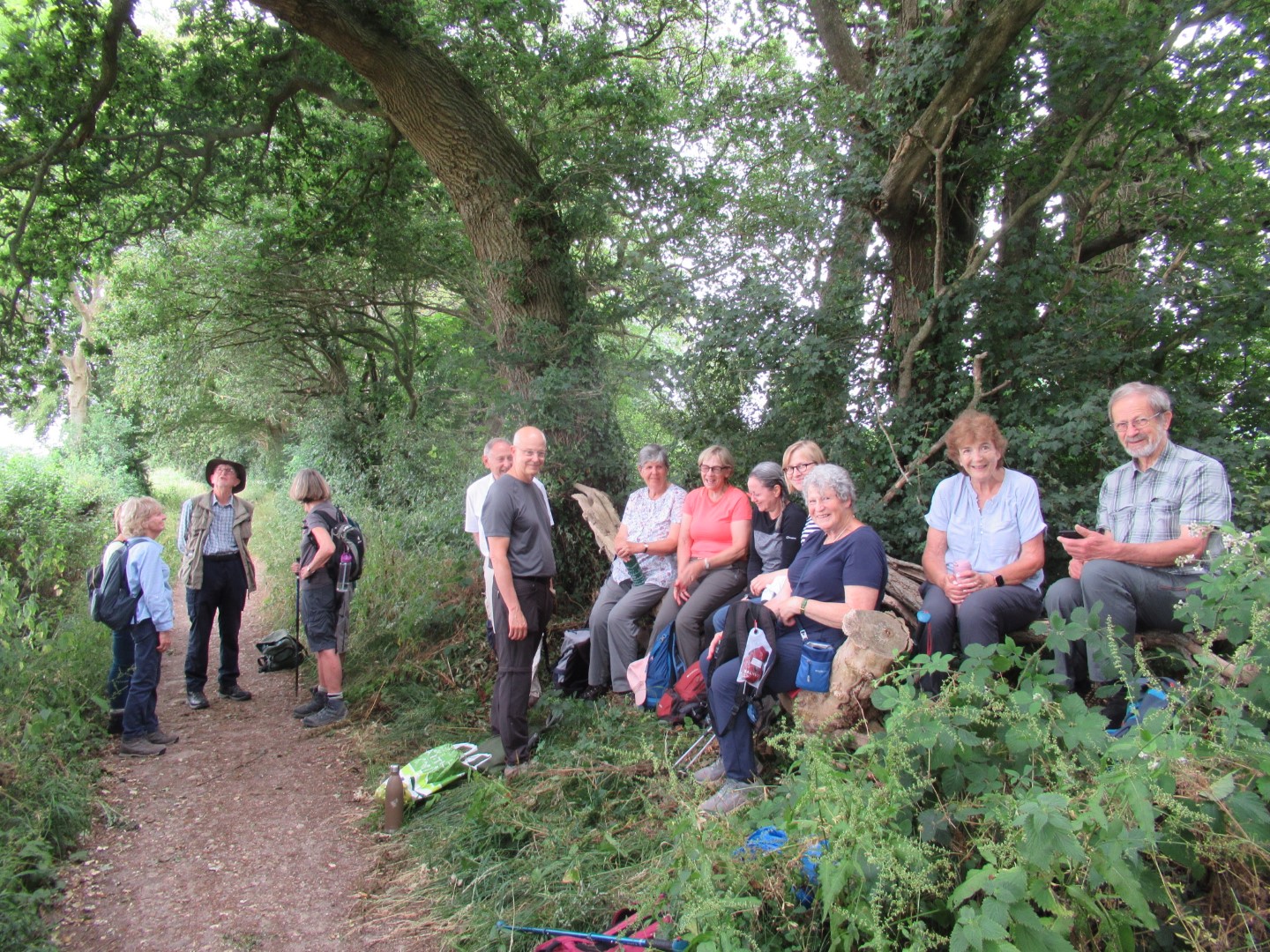
Coffee break
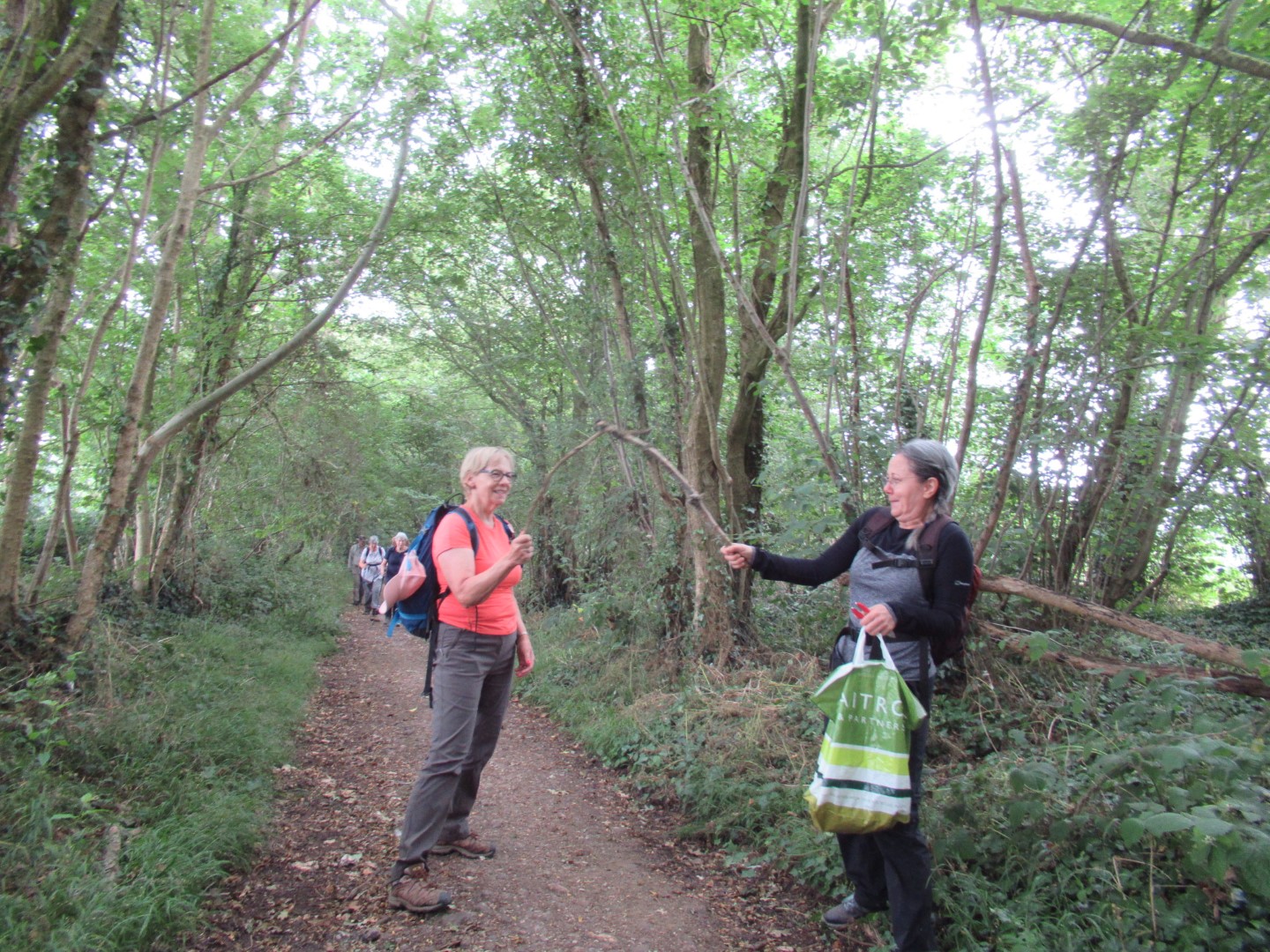
‘King, Queen, Jack….attack’. Reliving childhood pastimes
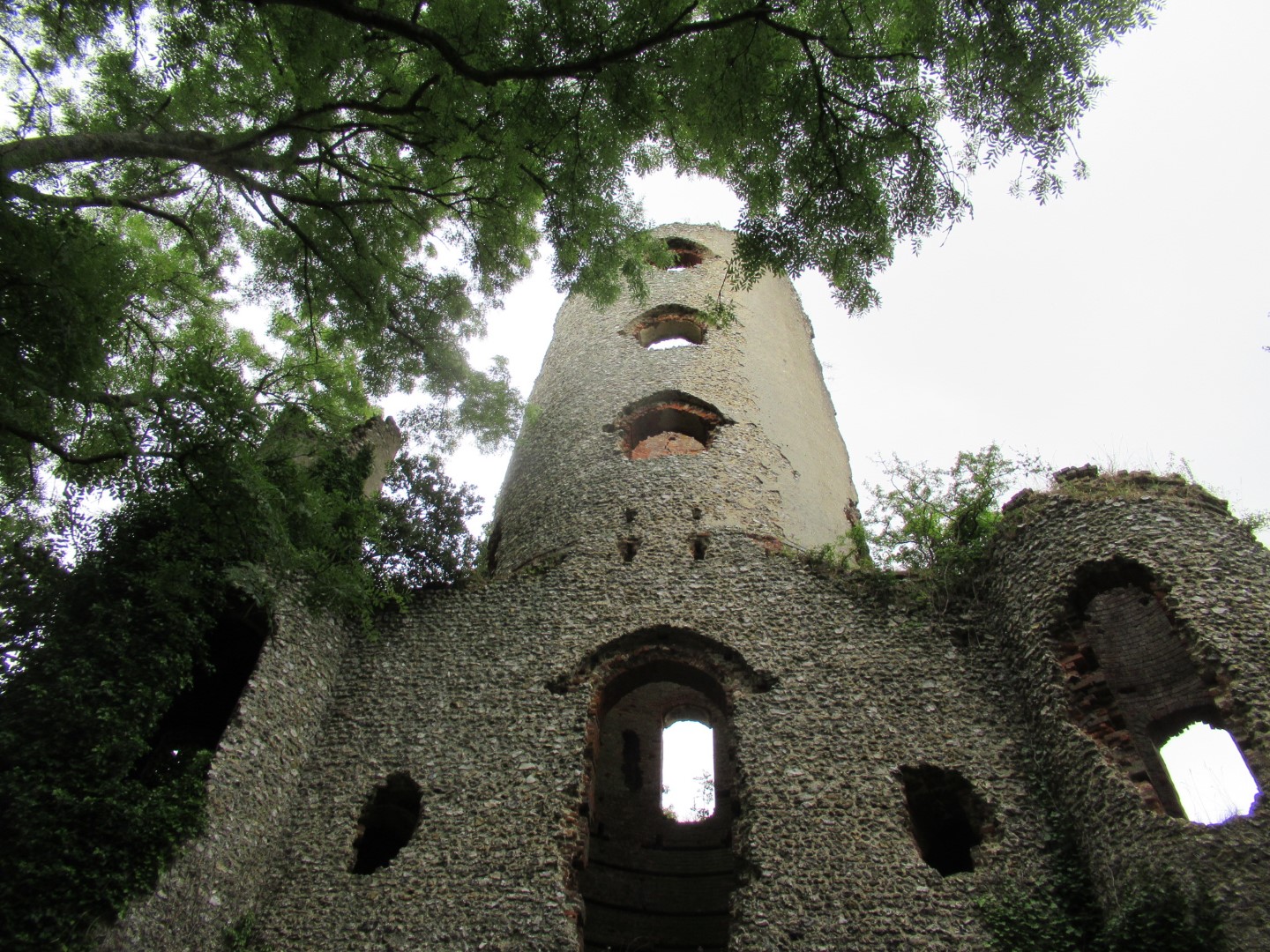
Racton Monument

The Racton Selfie
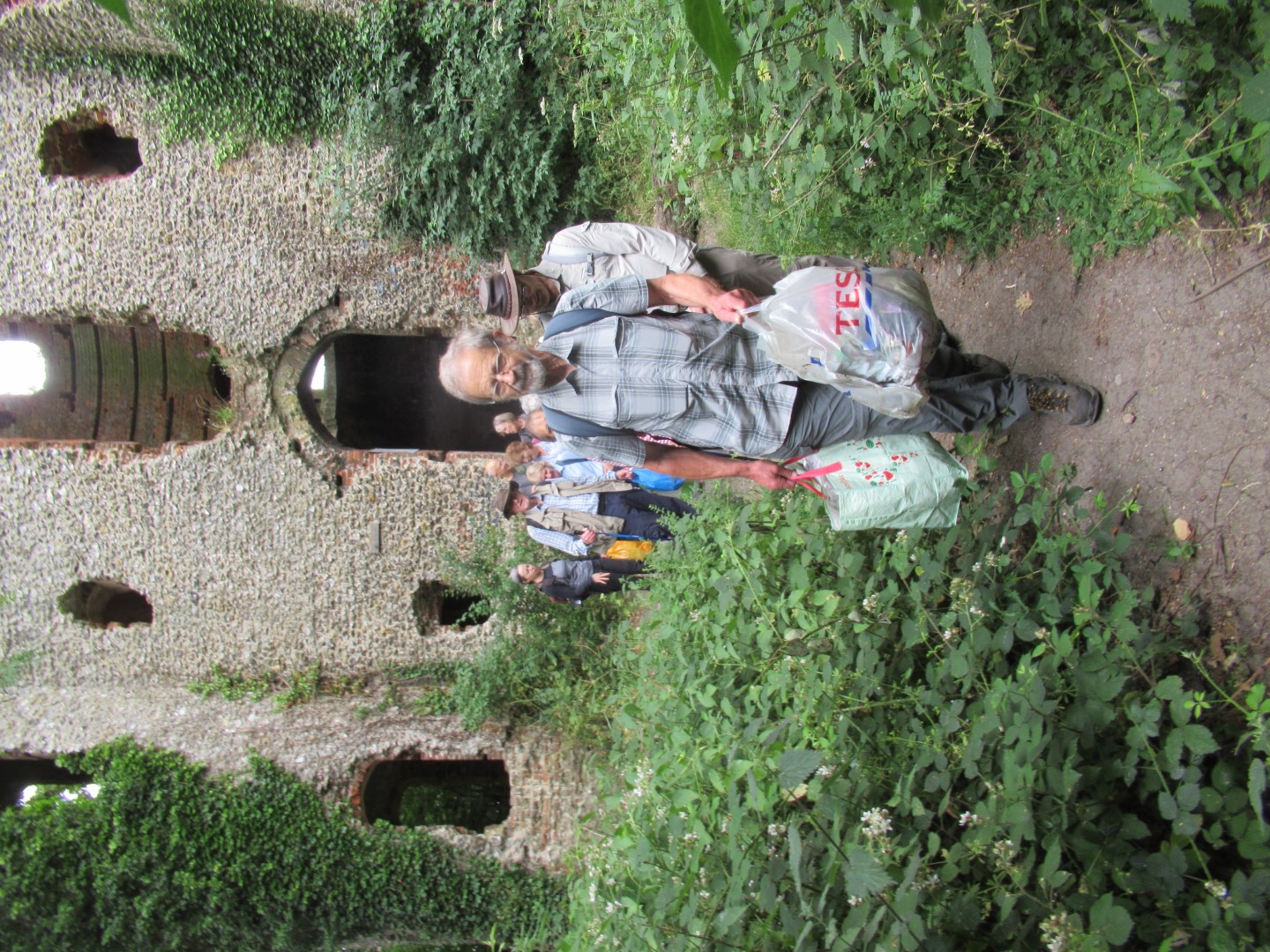
Think I’m the best rubbish athlete
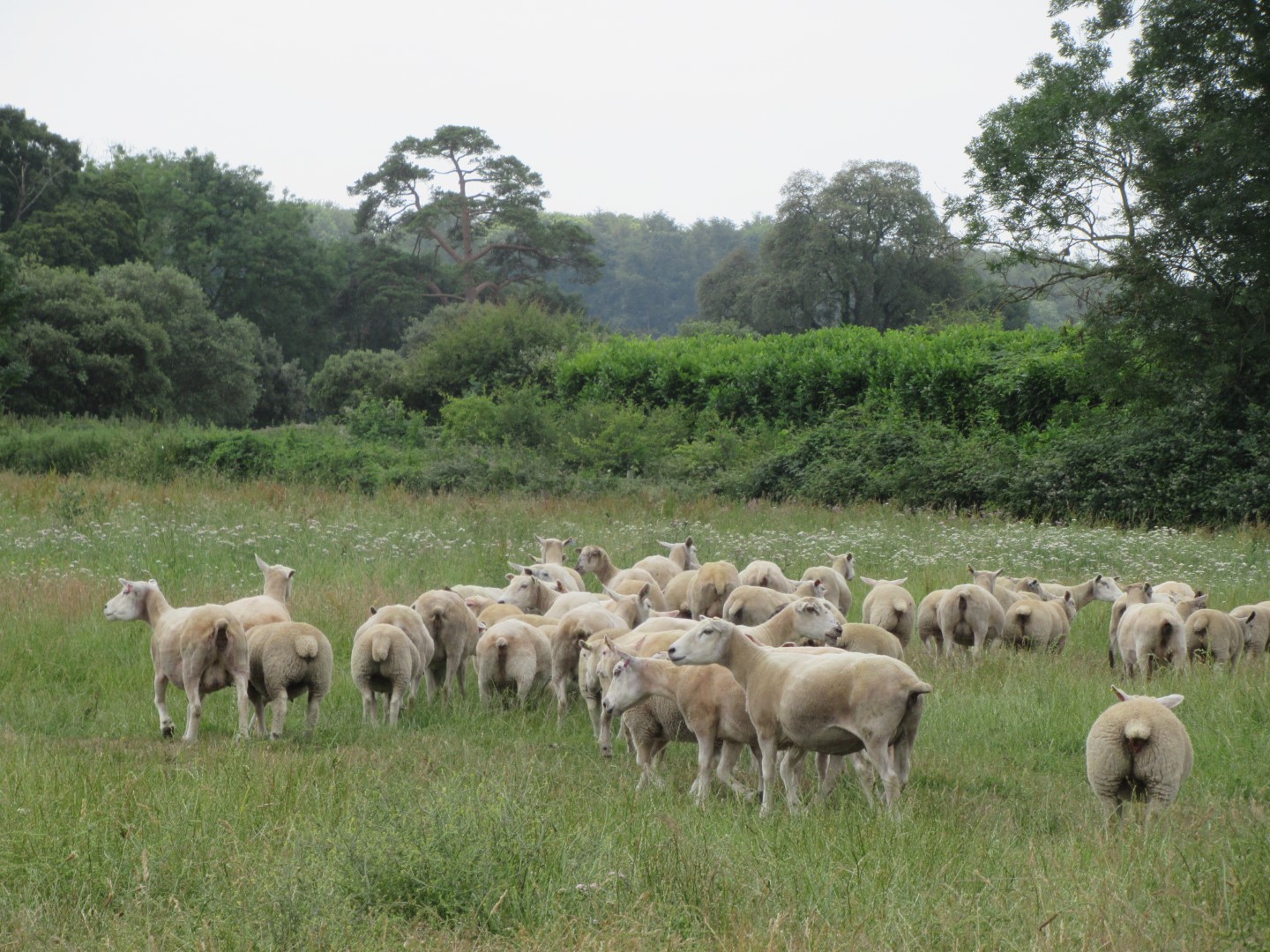
We’ve got our summer outfits on
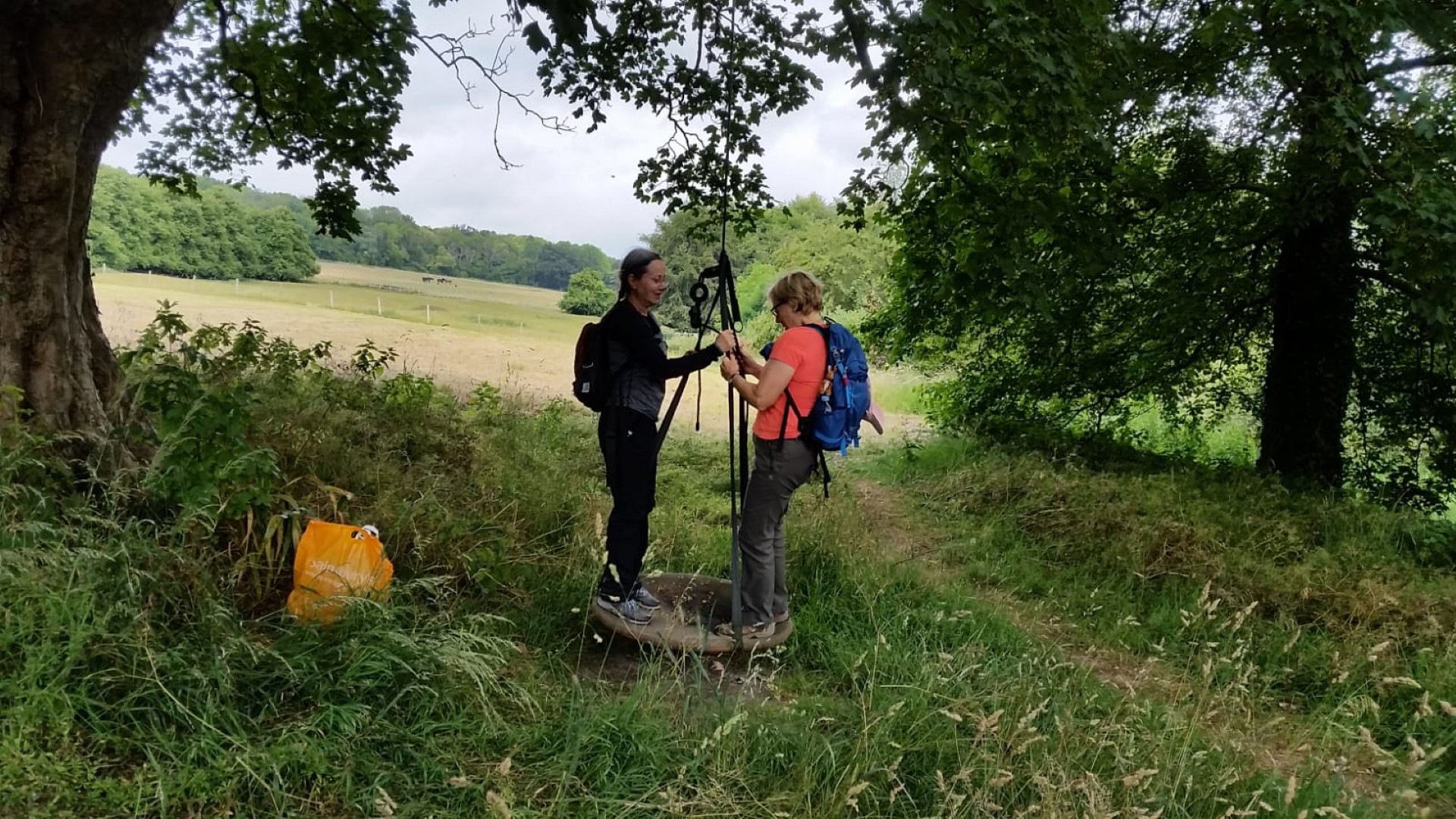
So what happens now?
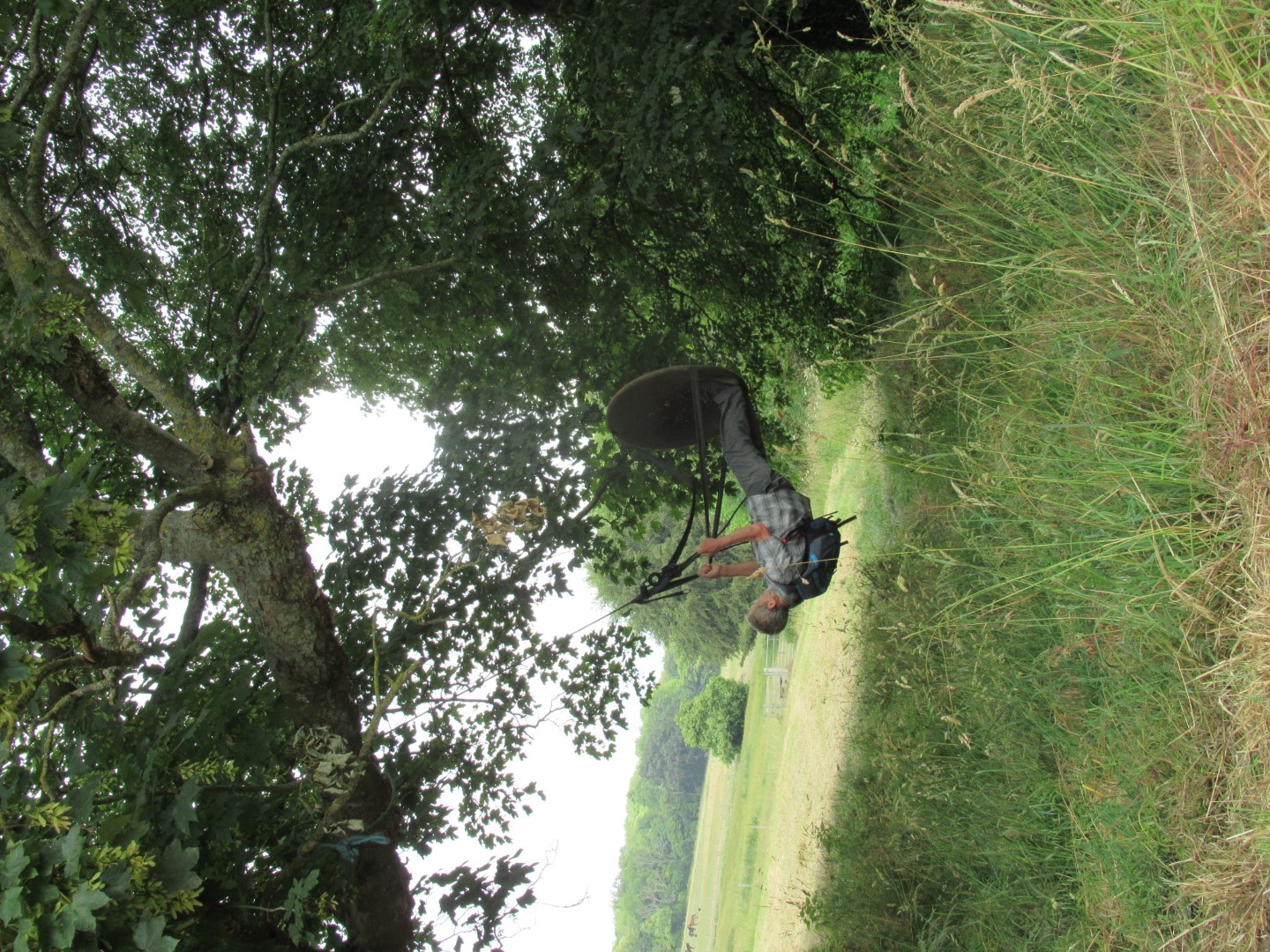
Tim happens
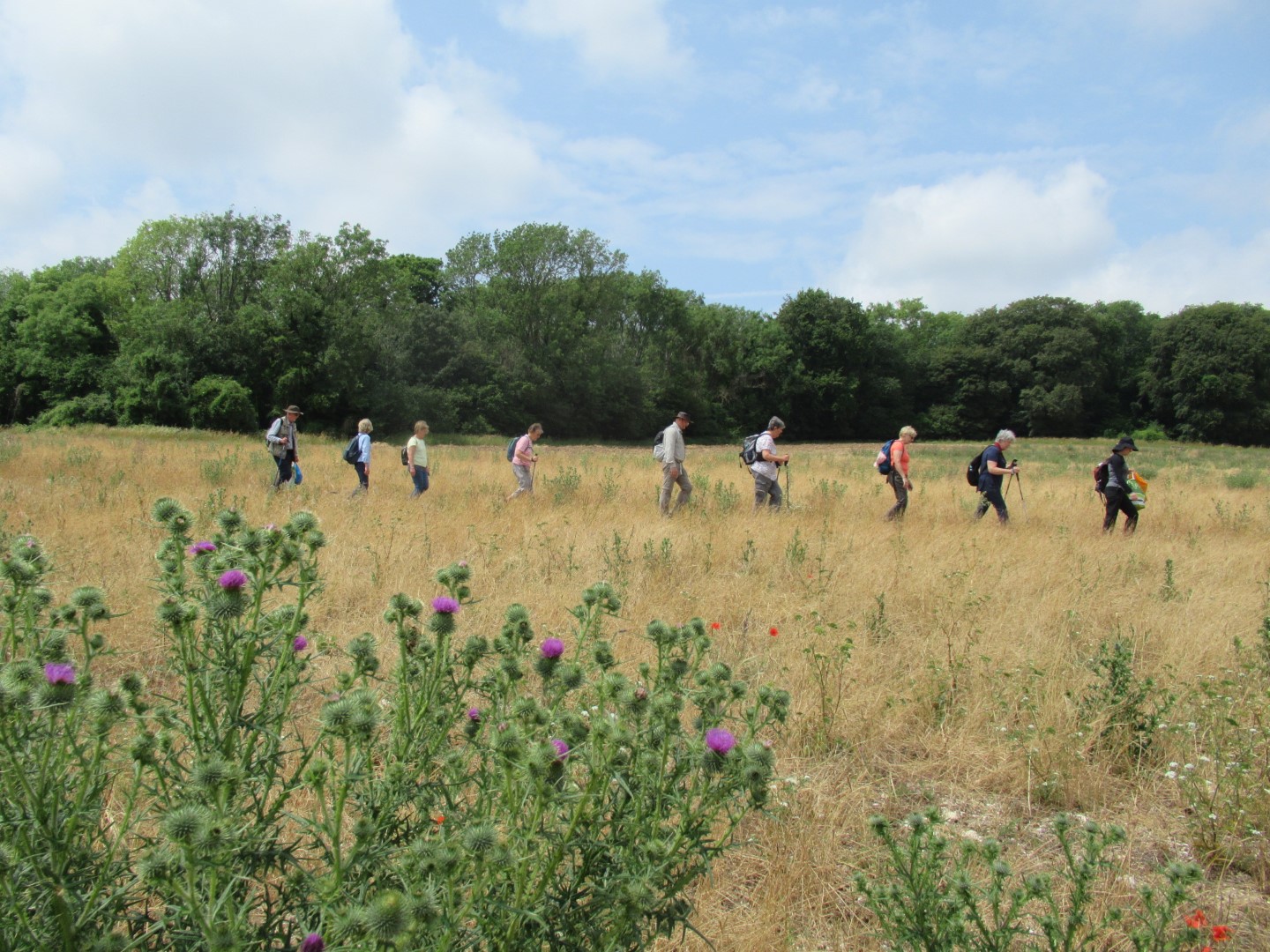
A parched walk across parched meadow
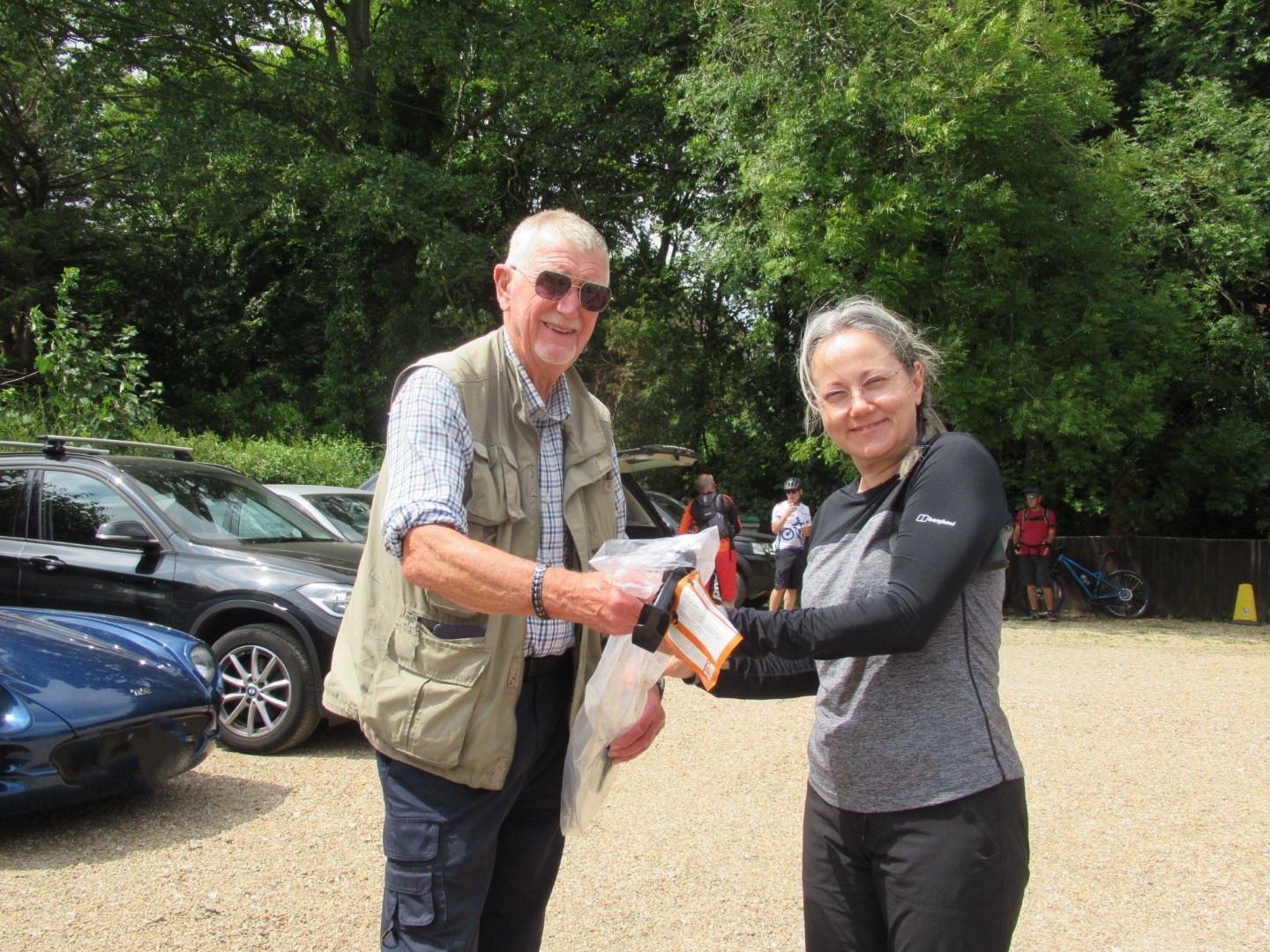
And prize for best detritus athlete presented by our walk leader
.png)
A little over 5 miles
Fernhurst Furnace walk on 21st June 2023
Leaving the excellent Fernhurst Playing Fields, we set out along Vann Road as far as the building that used to be the Fernhurst Primitive Methodist Chapel, now a private house. We then turned left down Hawksfold Lane East, eventually passing Lower Hawksfold. After battling through some undergrowth and ferns, most of us took a sharp turn right along a field edge to reach Furnace Wood. This eventually led to Furnace Pond, which is one of the best preserved sites of its type in south-east England. The Pond was the source of water to power the water wheel which worked the bellows to heat the furnace sufficiently to melt iron ore. Iron making was taking place from the 16th to the 18th Century throughout the Weald and it is said that this was the start of the Industrial Revolution. Iron manufacture in southern England only stopped when coke was developed as a much hotter fuel in the north of England. The whole area has many hard chips of slag in the ground, a by-product of the furnace process. After a drinks break we headed up towards the buildings of Lower Lodge Candles and then along the road until we turned into Oakreeds Wood, taking the high path across several stiles back to the bottom of Fridays Hill. Crossing the road into Hogs Hill, we had an easy walk down to the Red Lion for a good lunch.
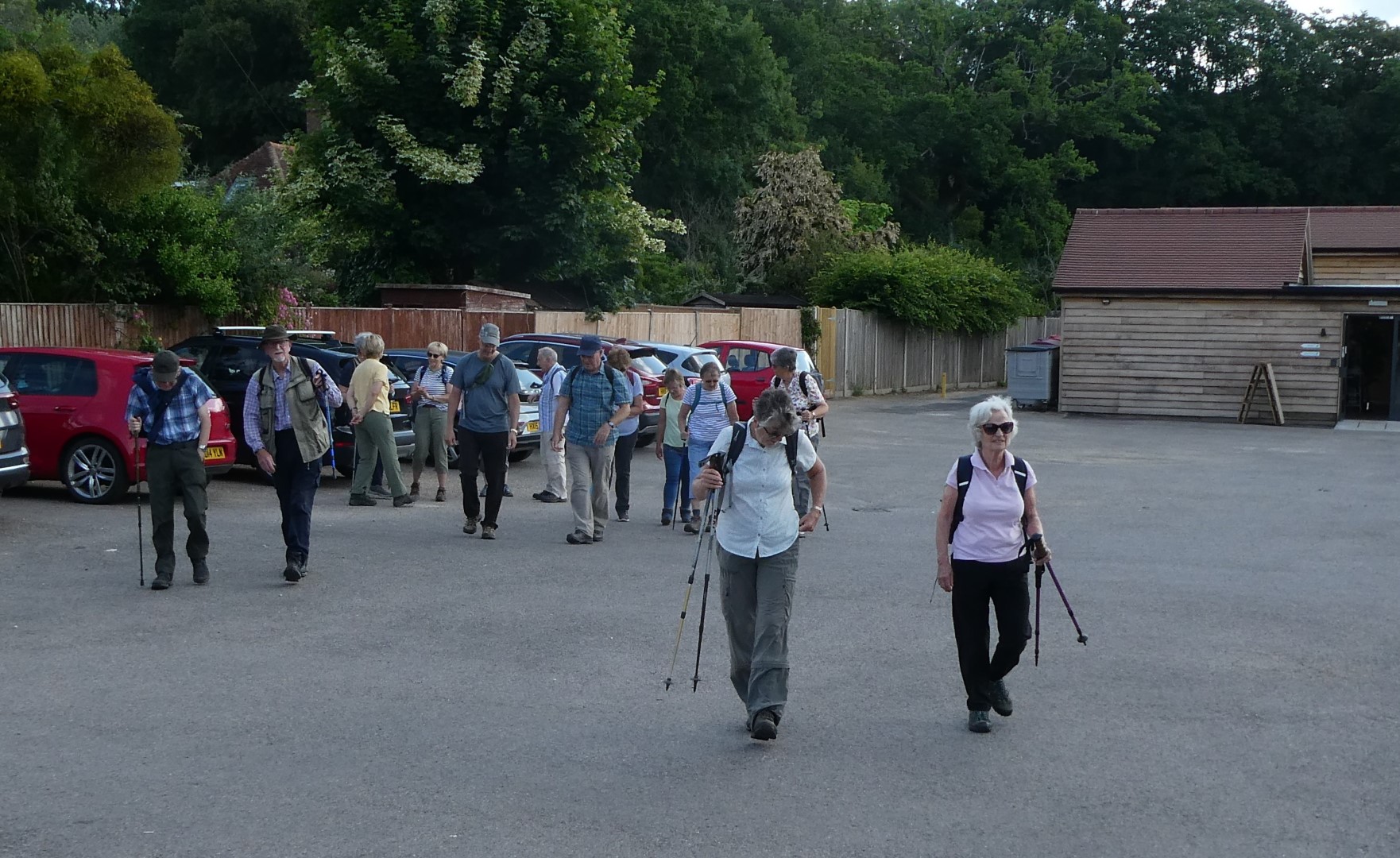
Starting out
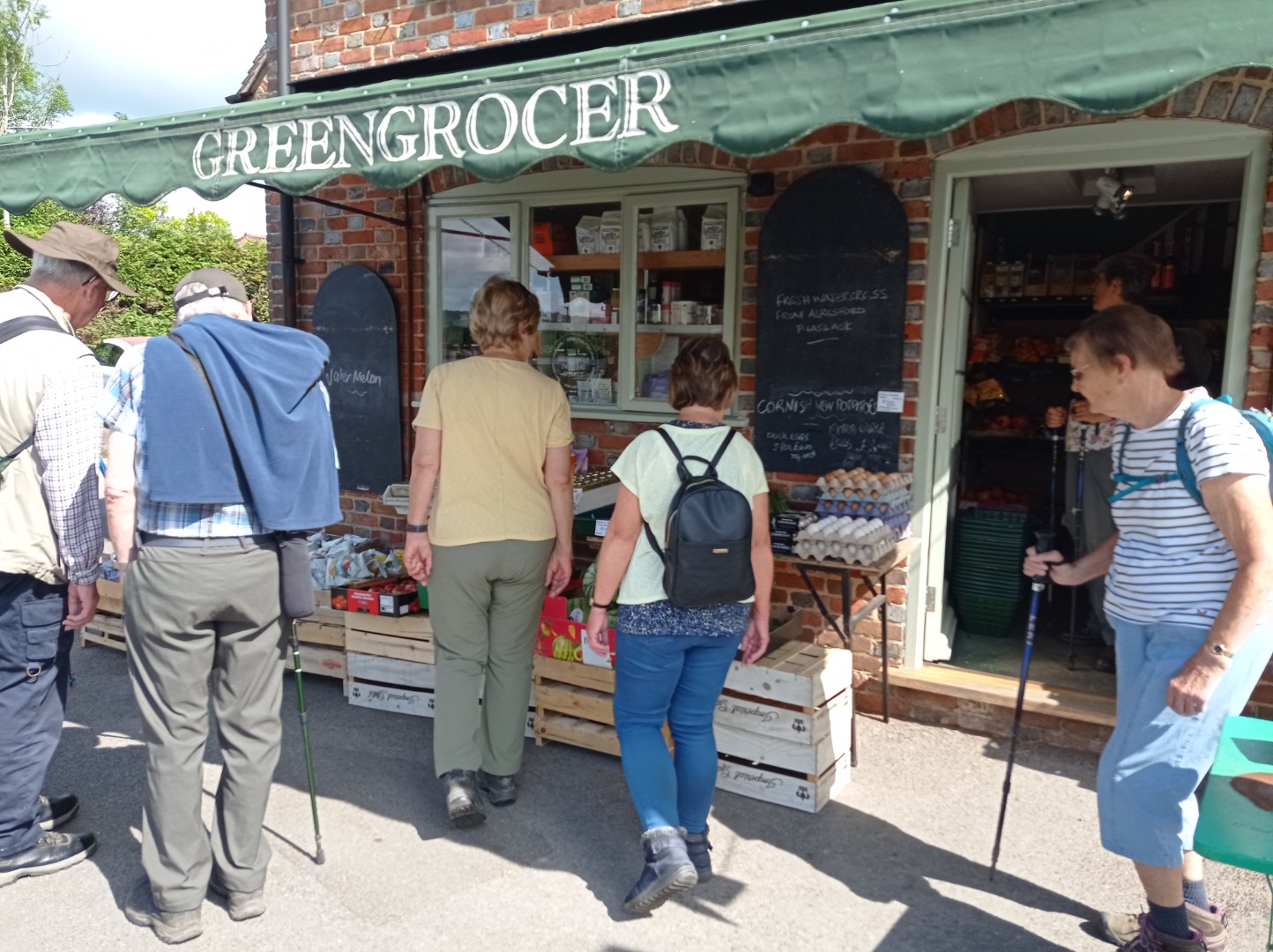
Many temptations in the Greengrocers
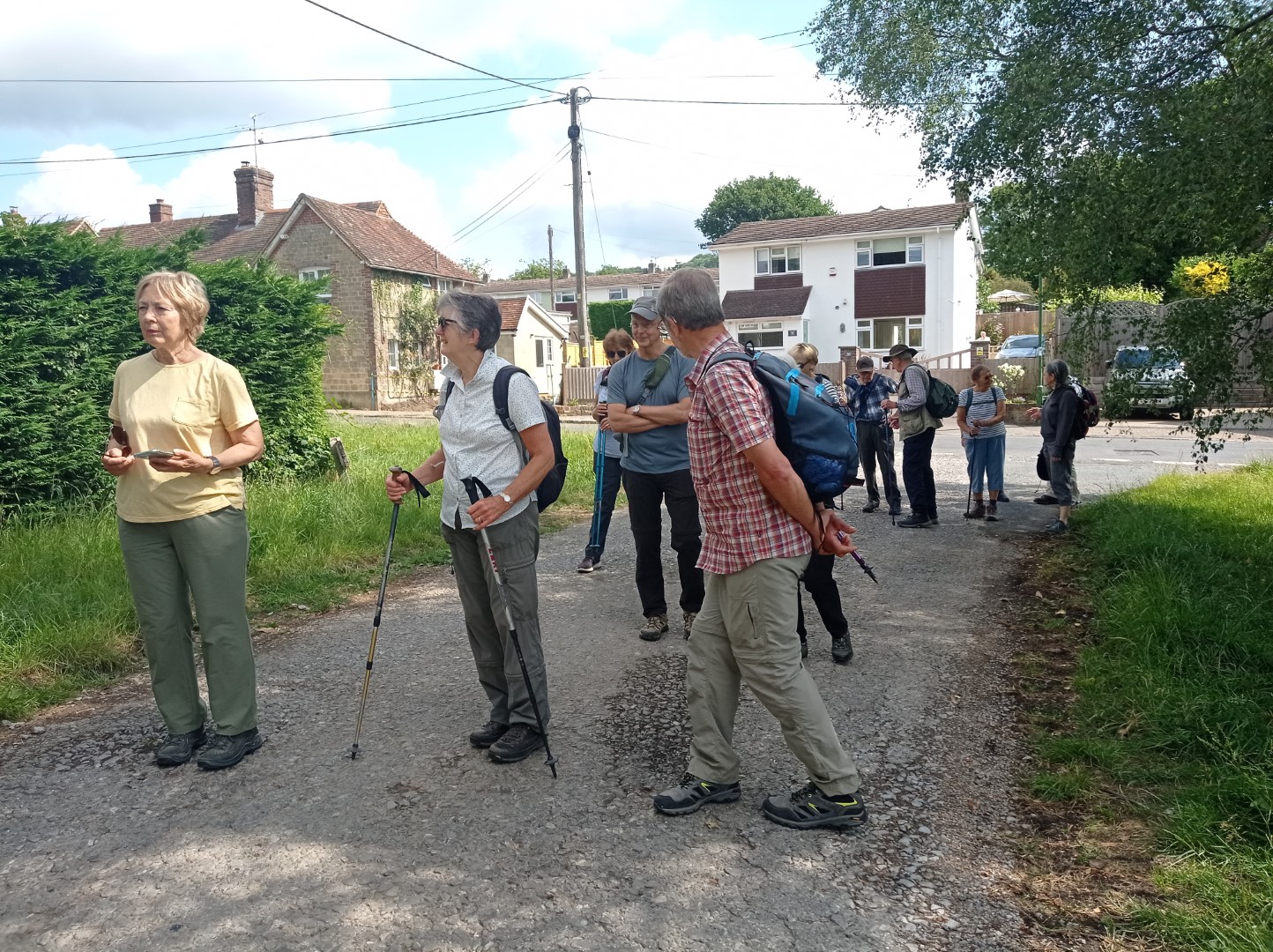
Just turning down Hawksfold Lane
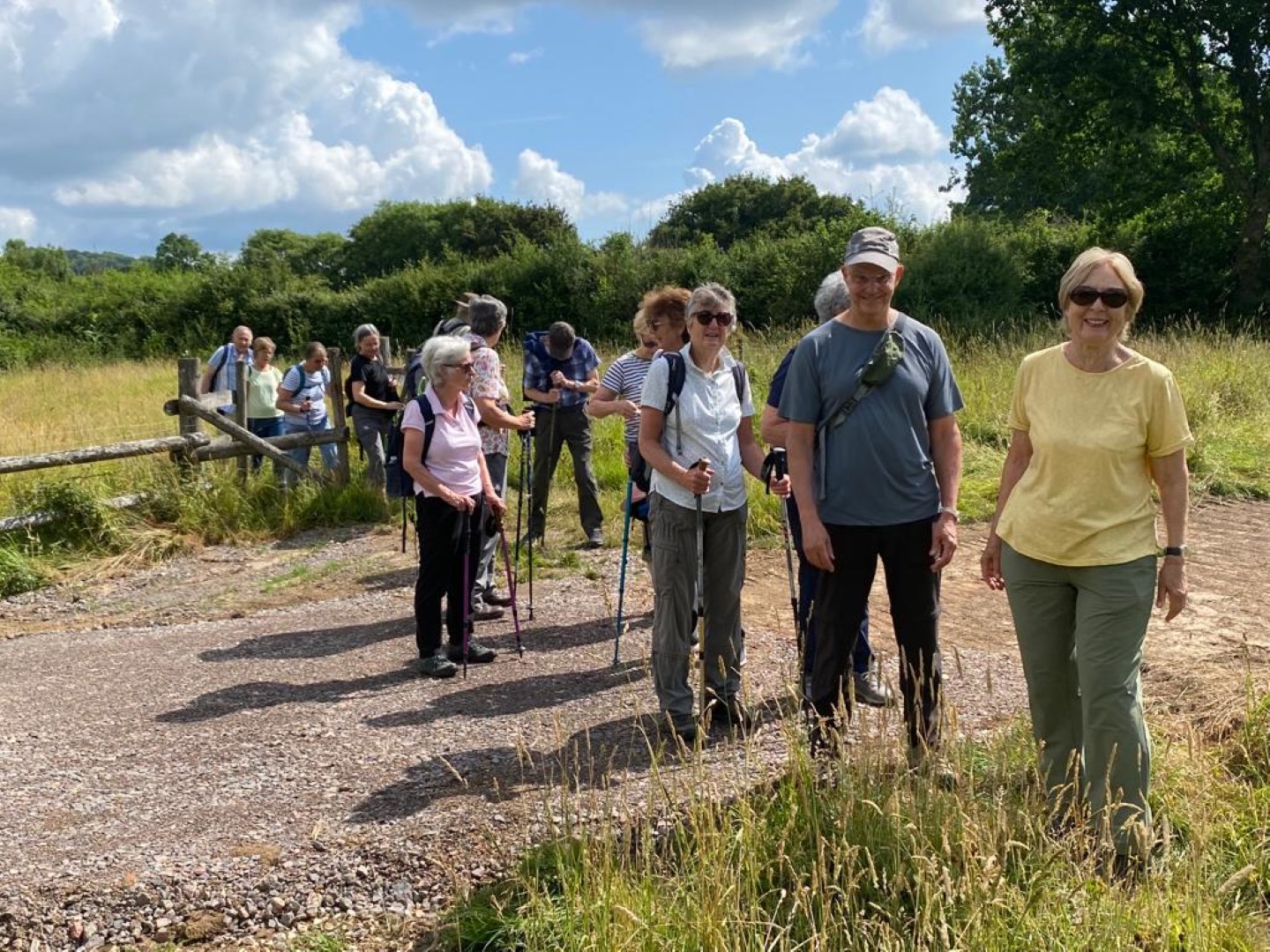
Lower Hawksfold is around the corner (plus a stream or two!)
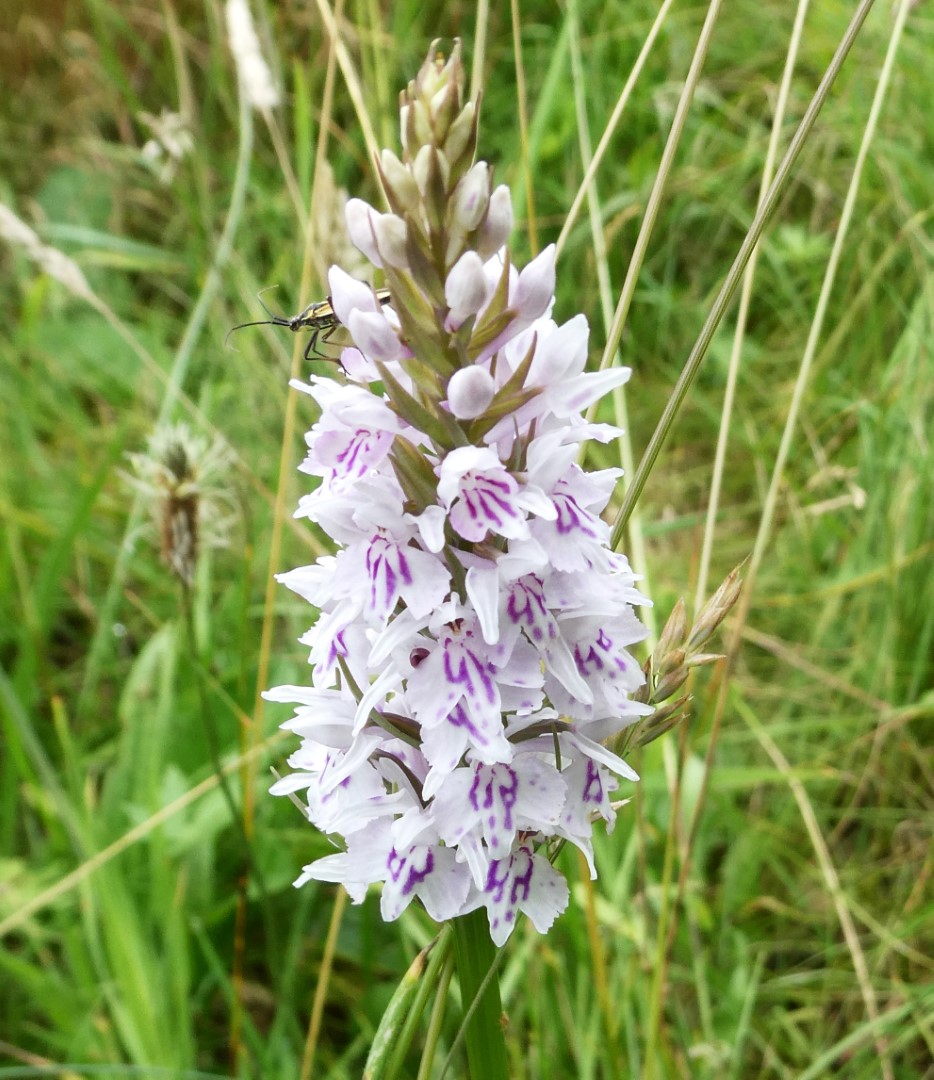
Orchid with a small visitor

The stiles came much later in our walk
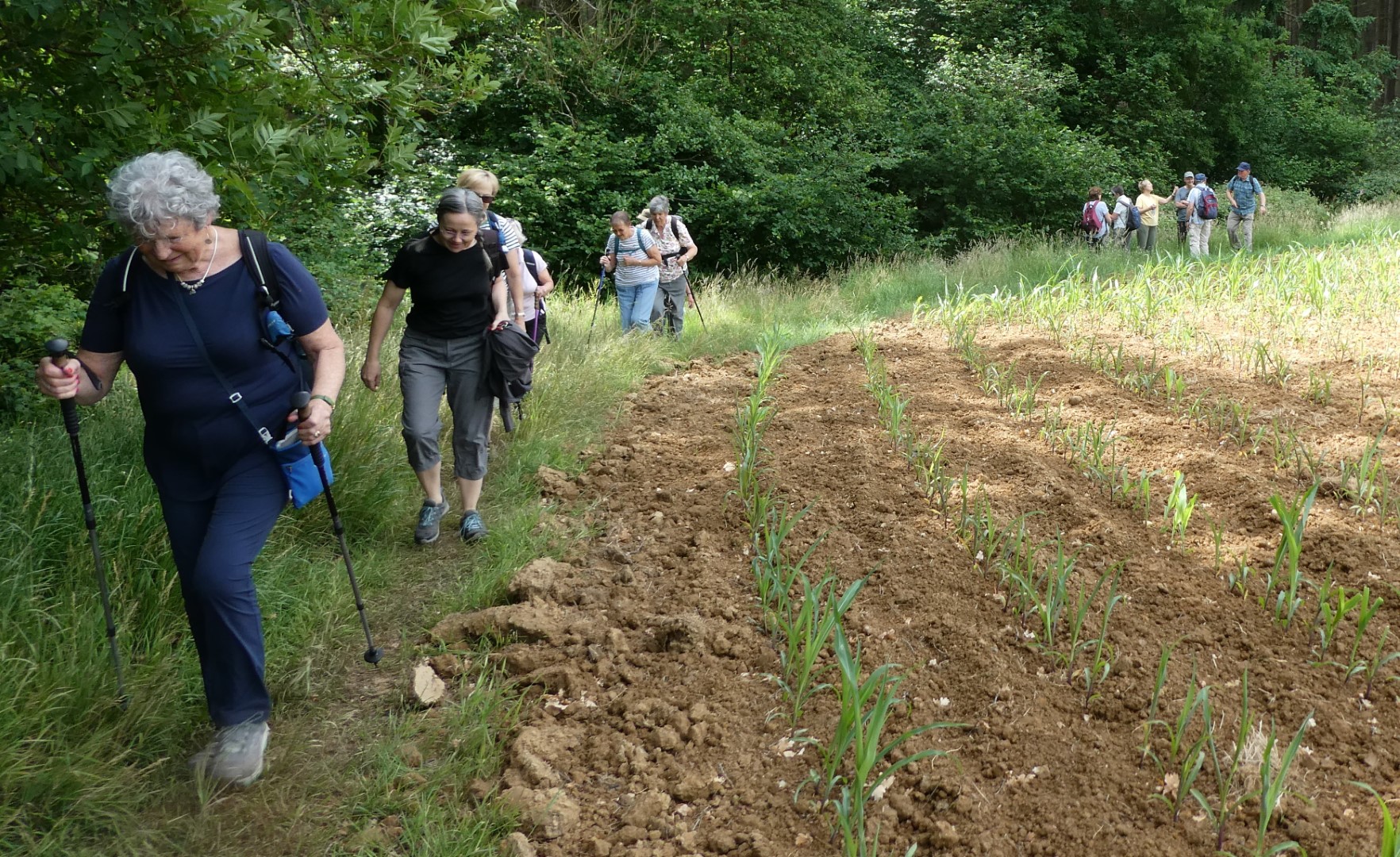
You can go that way, but we're going this way!
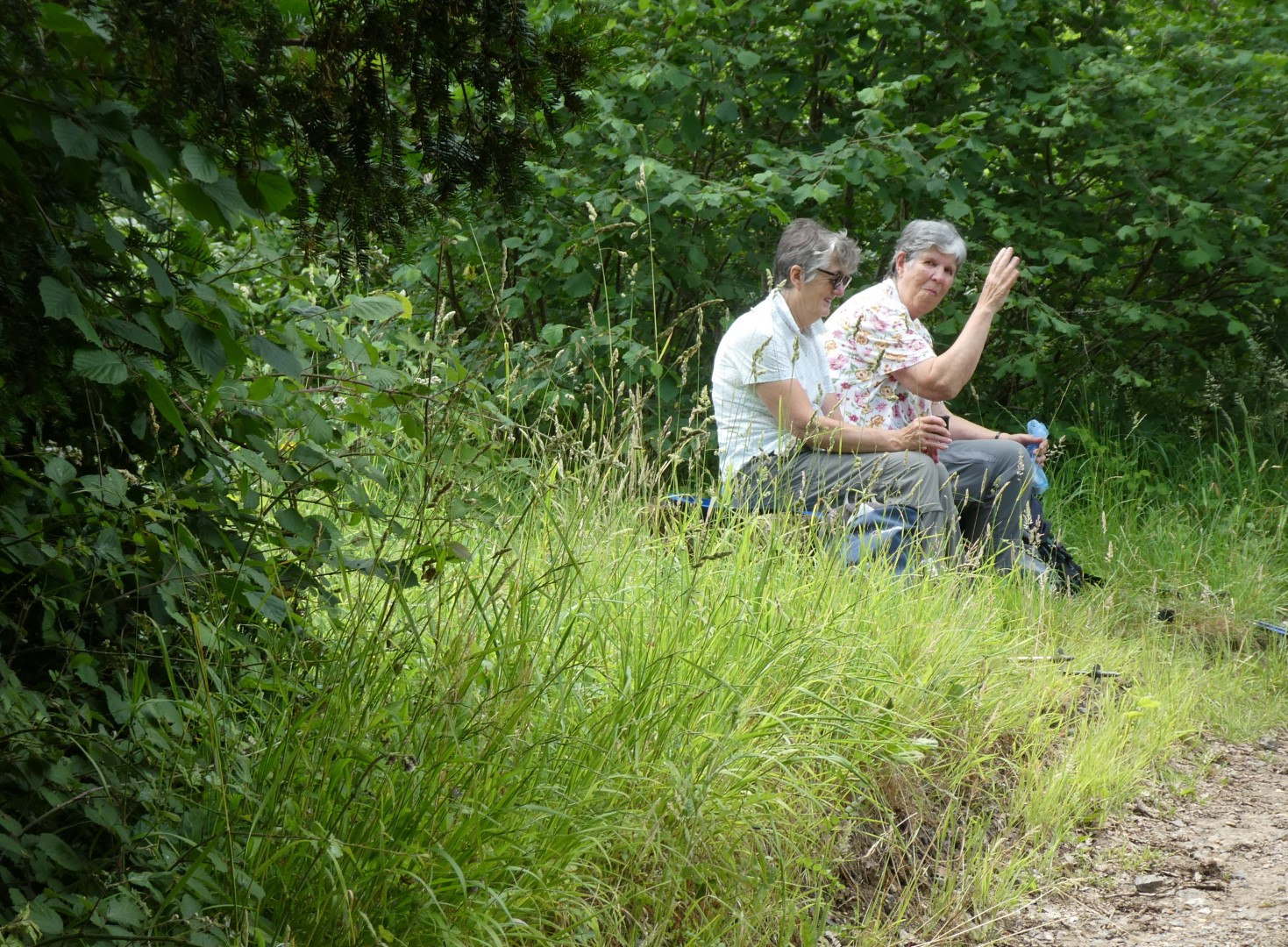
At last, time for a drink
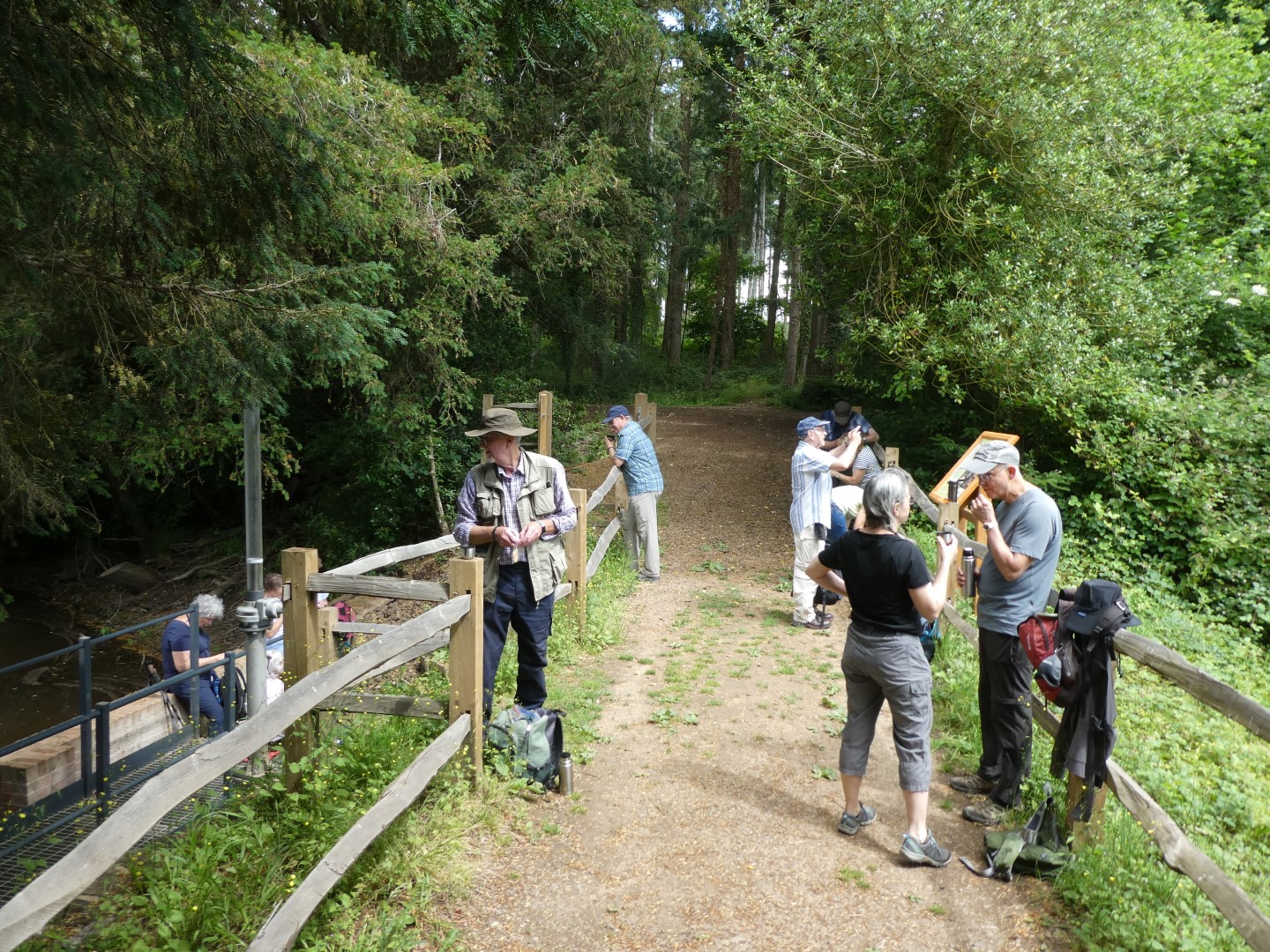
Plenty of sights, but few seats on this stop

Overflow sluice at the Fernhurst furnace site
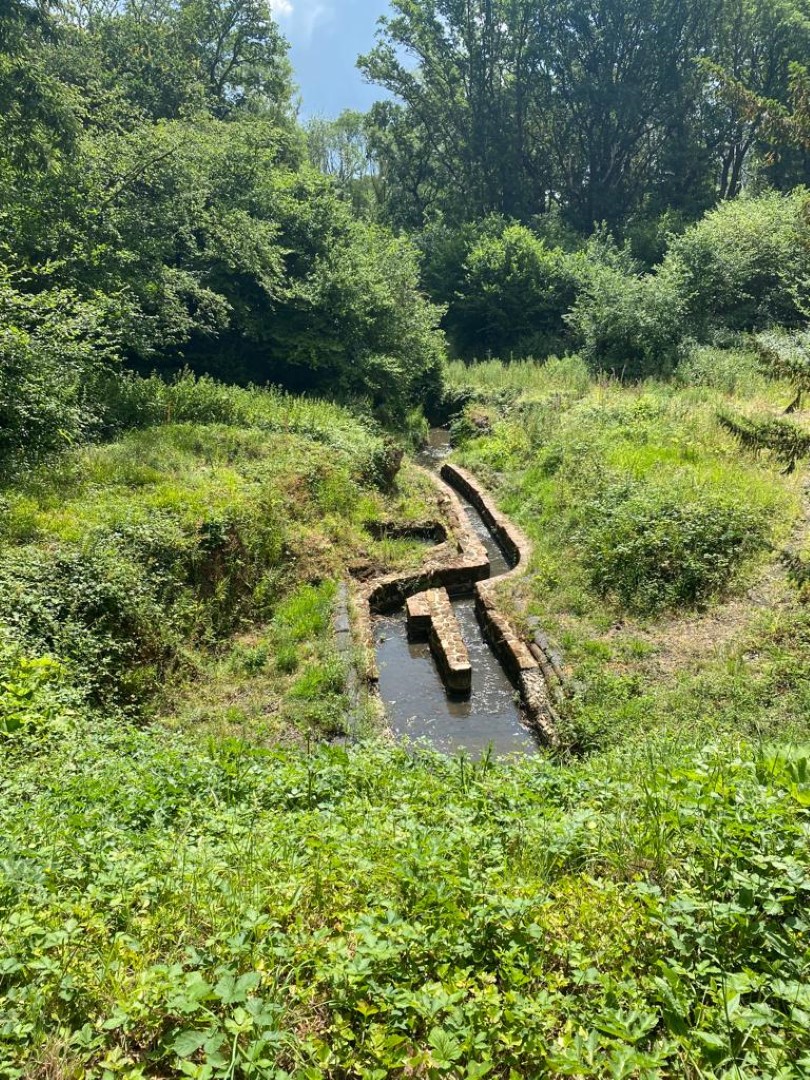
For 200/300 years this was one of the busiest iron manufacturing sites in the county
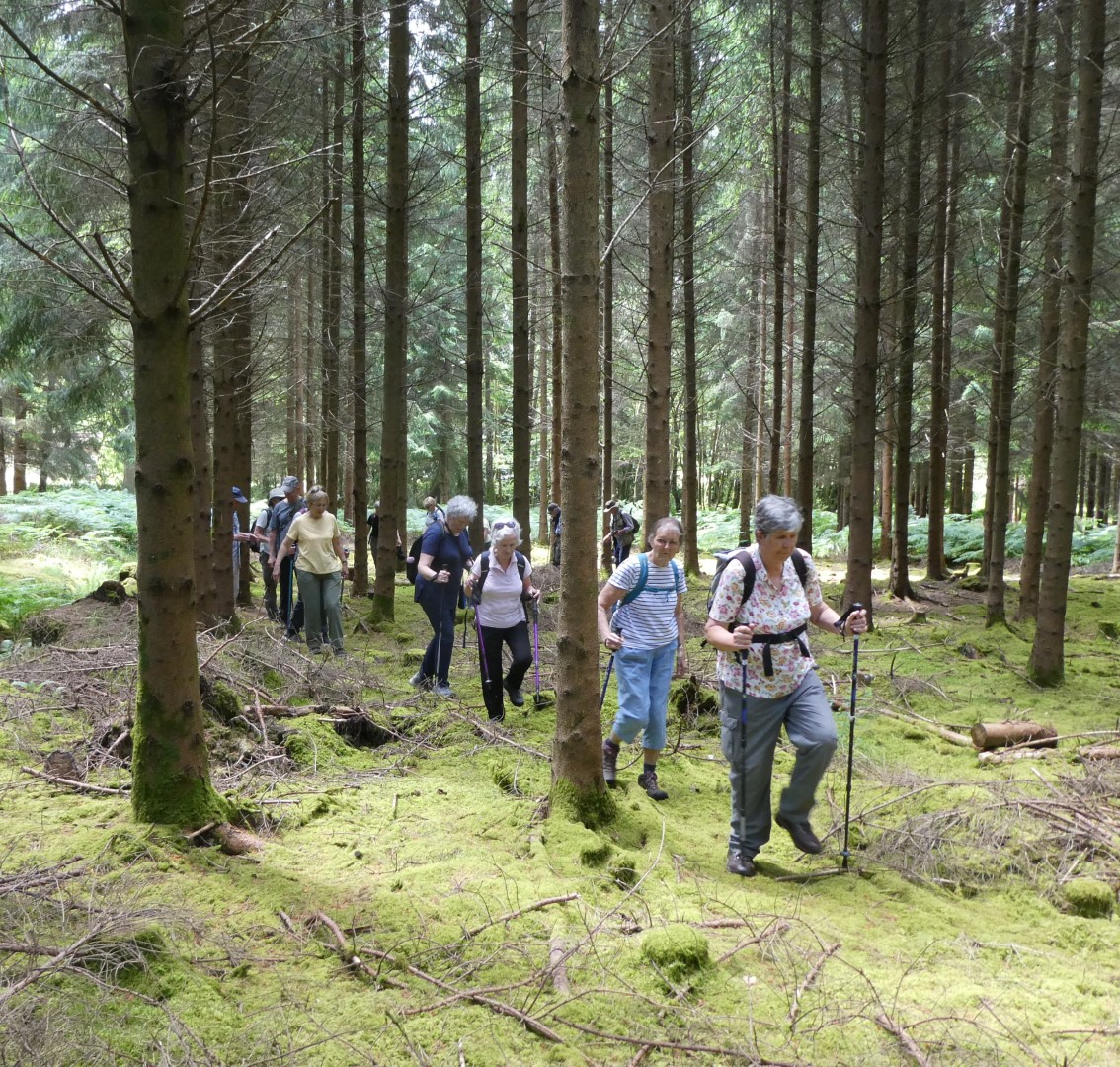
Tramping through Oakreeds Wood
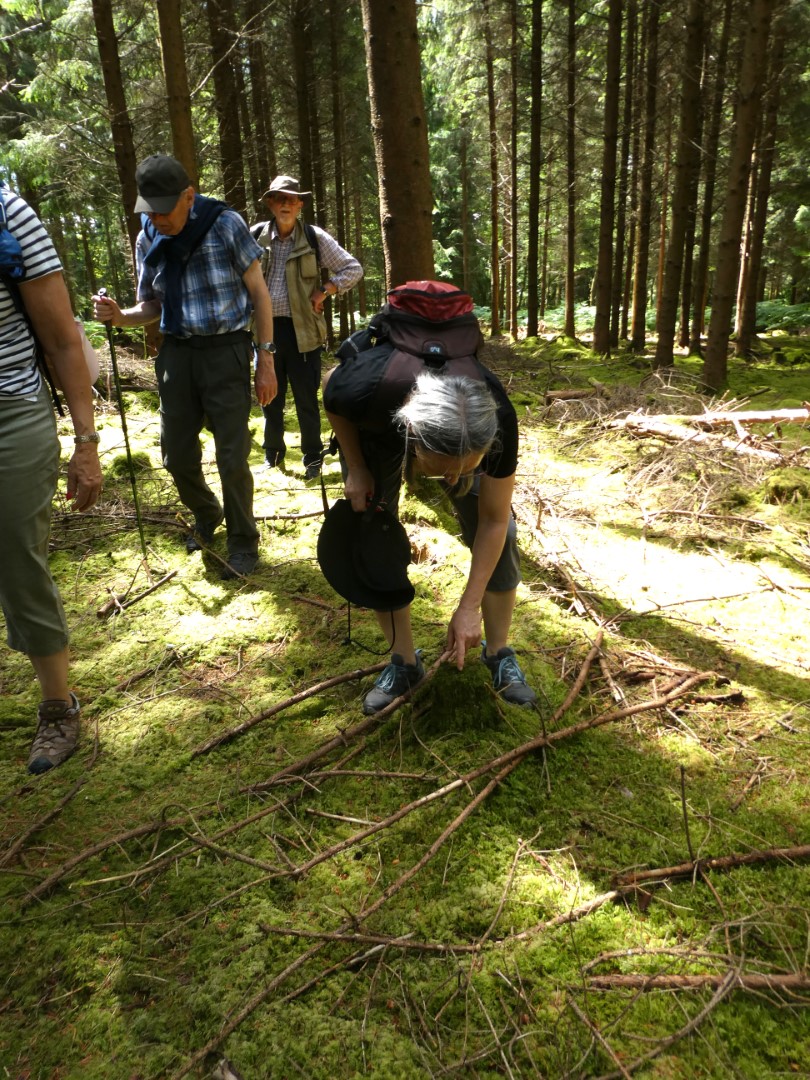
Some things need a careful study
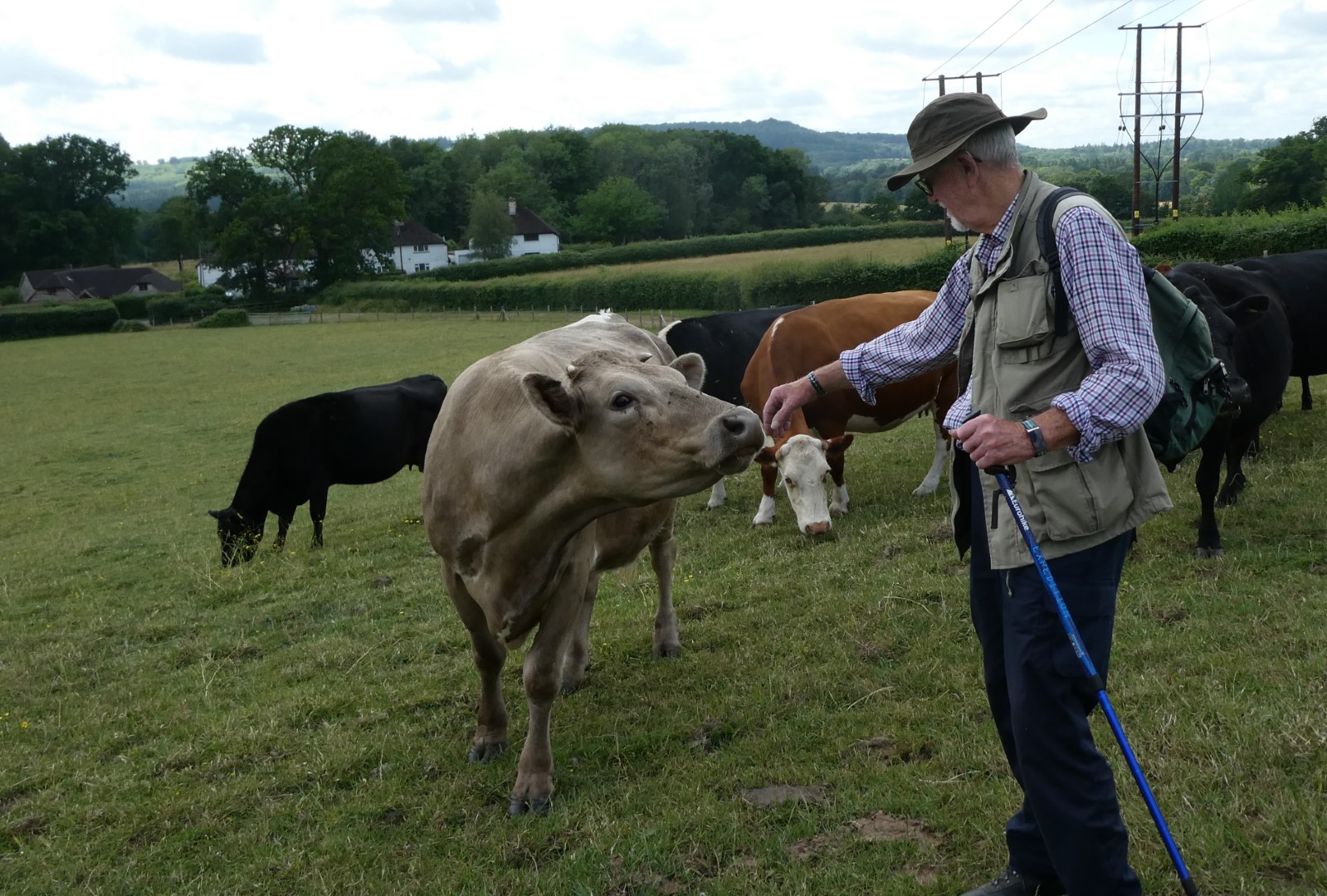
Just saying Hi!
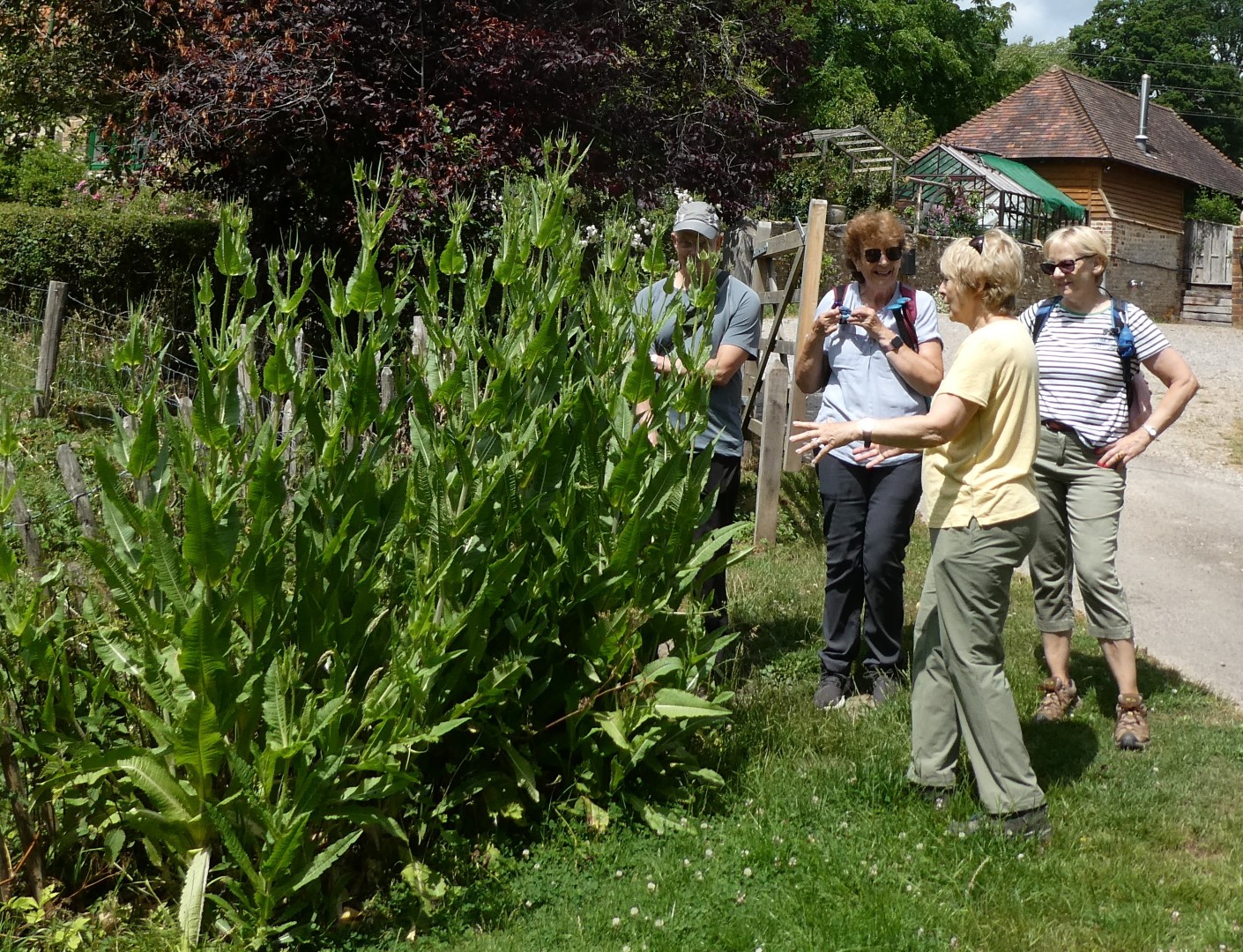
An excellent crop of teasel
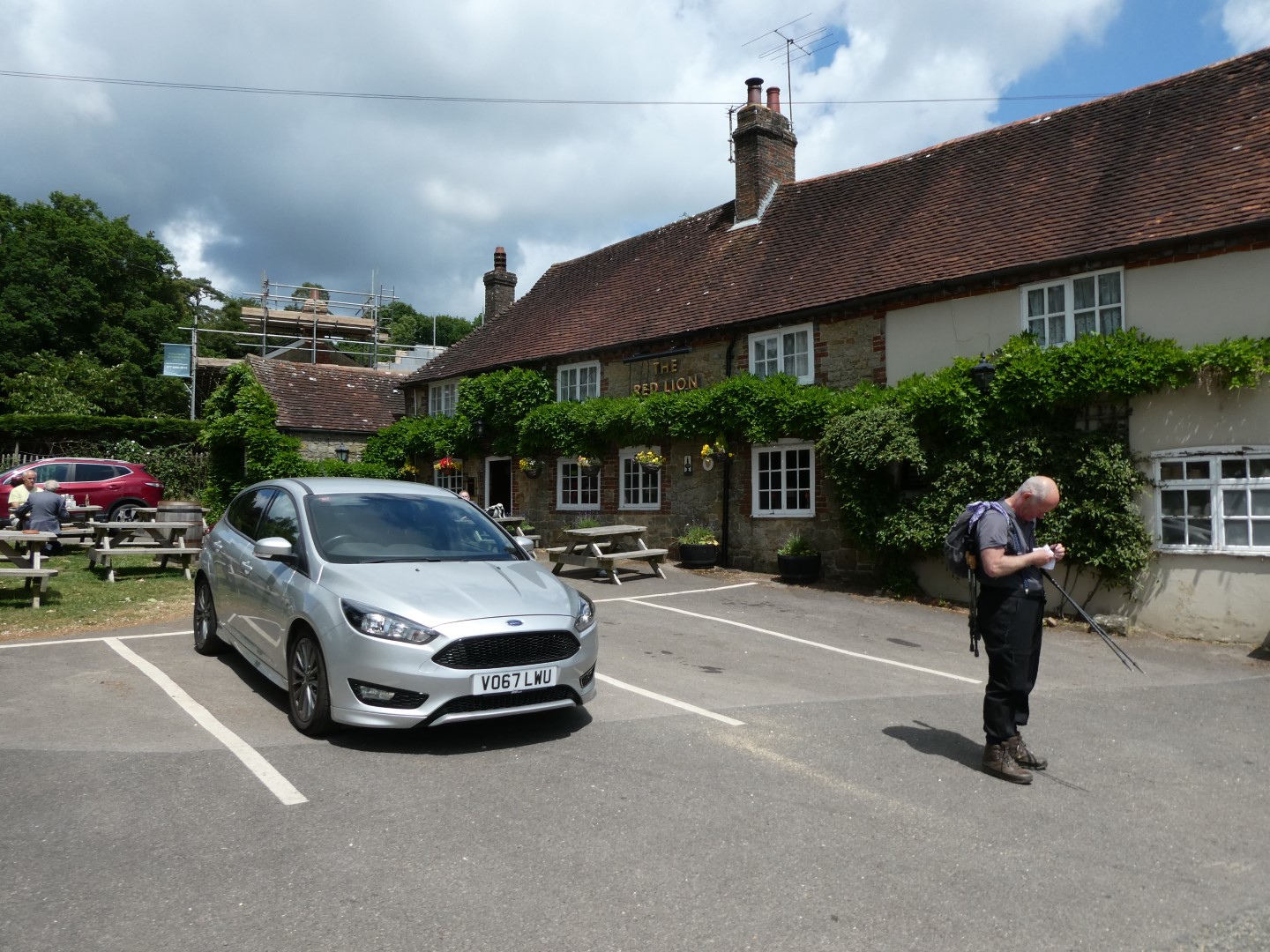
Red Lion at last
.png)
About 4.1/2 miles
Recent galleries
- Amberley Walk on 5th November 2025
- Redford and AGM walk on 29th October 2025
- Chiddingfold walk on 22nd October 2025
- Petworth Park walk on 15th October 2025
- West Dean walk on 8th October 2025
History
2025
- November (1)
- October (5)
- September (4)
- August (4)
- July (5)
- June (4)
- May (5)
- April (4)
- March (5)
- February (3)
- January (4)
2024
- December (3)
- November (5)
- October (4)
- September (4)
- August (4)
- July (4)
- June (5)
- May (5)
- April (5)
- March (5)
- February (5)
- January (4)
2023
- December (3)
- November (6)
- October (5)
- September (5)
- August (3)
- July (4)
- June (6)
- May (5)
- April (4)
- March (5)
- February (4)
- January (4)
2022
- December (4)
- November (5)
- October (5)
- September (3)
- August (4)
- July (6)
- June (11)
- May (4)
- April (5)
- March (4)
- February (5)
- January (4)
2021
2020
- December (4)
- November (1)
- October (5)
- September (4)
- August (3)
- July (3)
- March (2)
- February (5)
- January (3)
2019
- December (2)
- November (5)
- October (4)
- September (3)
- August (4)
- July (4)
- June (11)
- May (5)
- April (4)
- March (3)
- February (5)
- January (5)
2018
- December (2)
- November (4)
- October (4)
- September (5)
- August (4)
- July (3)
- June (5)
- May (8)
- April (4)
- March (4)
- February (5)
- January (3)
2017
- December (3)
- November (5)
- October (3)
- September (4)
- August (4)
- July (4)
- June (11)
- May (4)
- April (4)
- March (3)
- February (4)
- January (5)
2016
- December (3)
- November (4)
- October (5)
- September (4)
- August (3)
- July (6)
- June (11)
- May (4)
- April (5)
- March (3)
- February (10)
- January (2)
2015
2014
- June (2)
1997
- February (1)